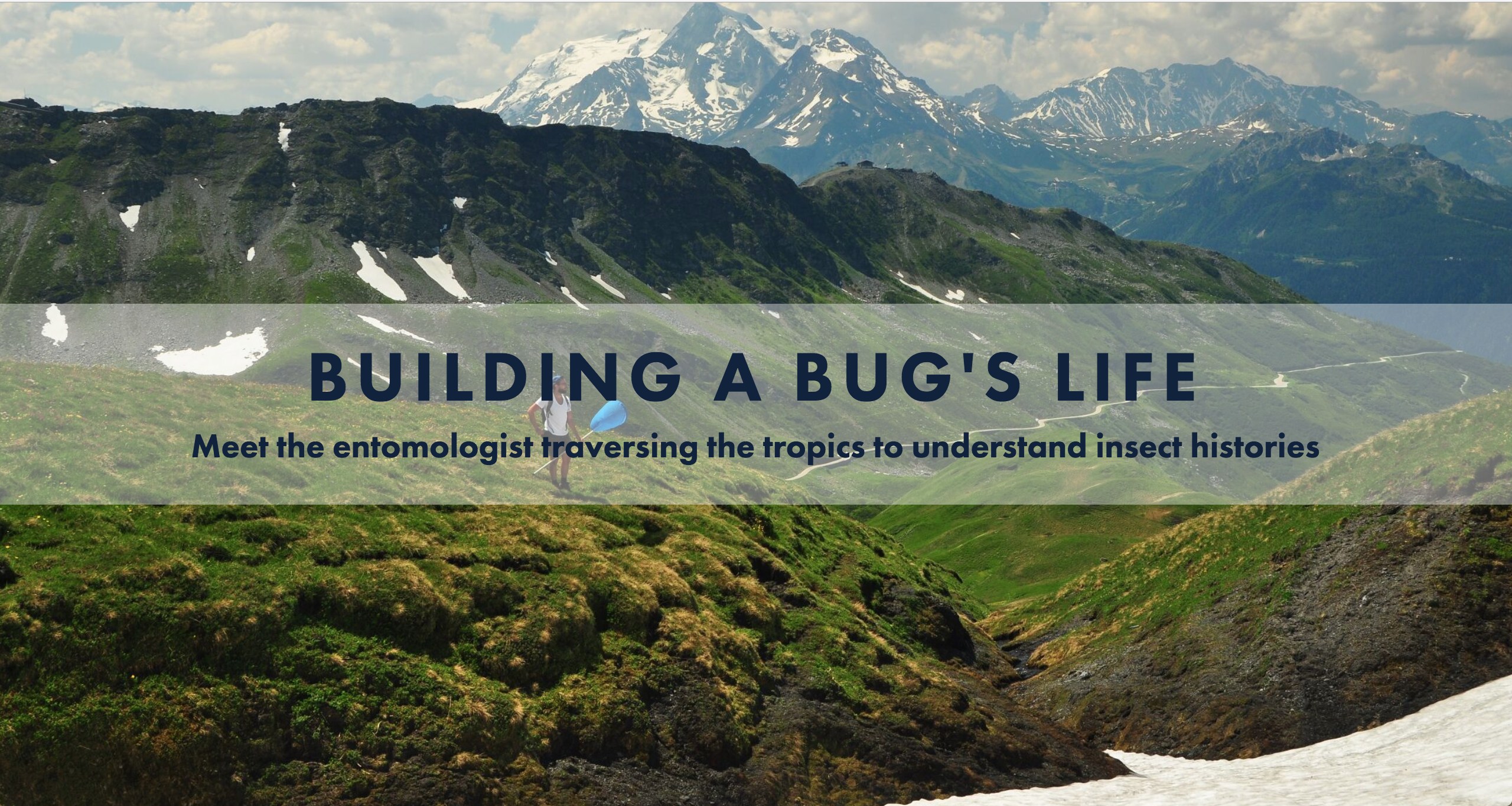- 02/2024 – Two papers have just been published, one on the biogeorgaphy and diversification of Delias butterflies with a large team of collaborators, and another as a comment to present our views on the recently introduced topic of compassionate collections in natural history museums.
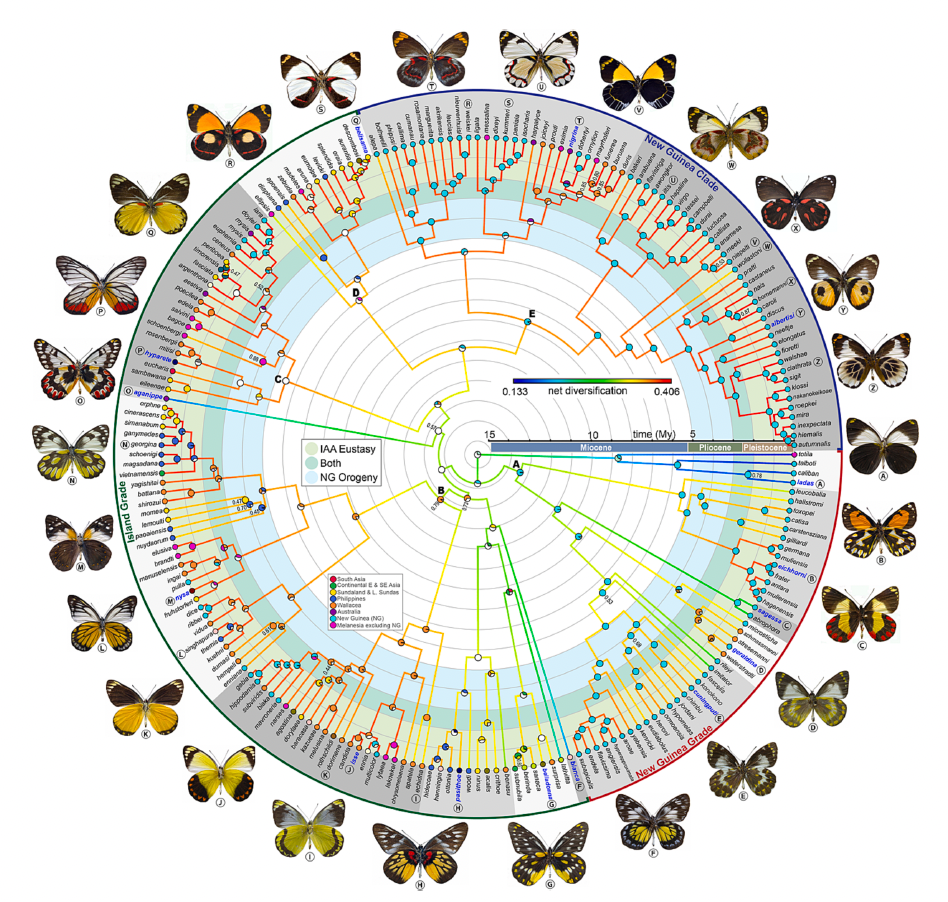
A new phylogenomic tree of Delias allows to delve into their fascinating evolutionary history (Liang et al. 2024 / Molecular Phylogenetics and Evolution)
- 02/2024 – Our MinION MK1C project has now started after quite some struggle with HMW extractions. Now it is time to sequnce some genomes!

First trial of our MinION MK1C with a relatively old sample kept at -20 for several years, encouraging!
- 01/2024 – We went to Zurich for the Biology24 meeting to present some of the lab results and visit the beautiful collections of the university.
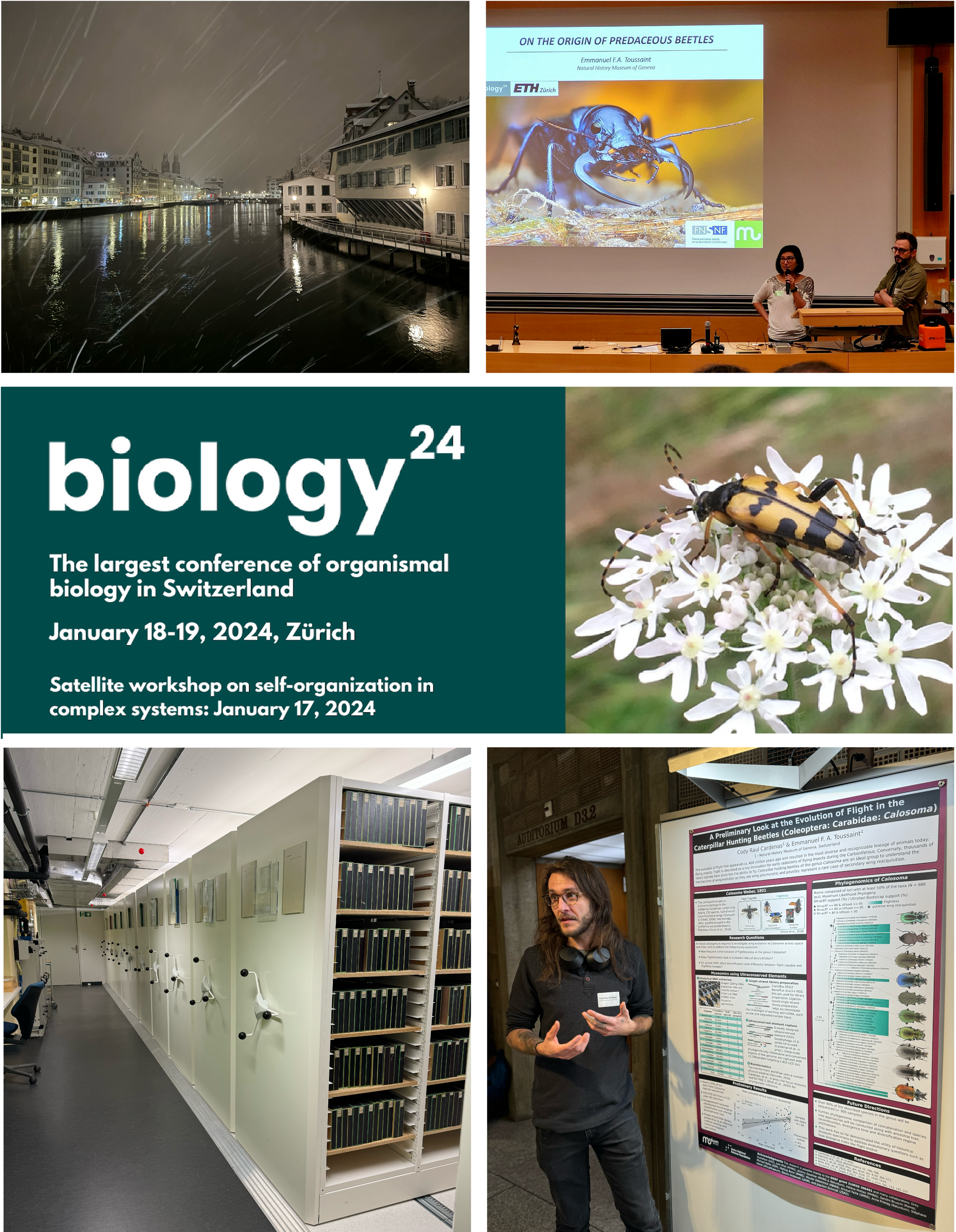
Toussaint Lab at the Biology24 meeting in Zurich
- 10/2023 – Leonardo brilliantly passed his PhD defense in Barcelona with cum laude, stay tuned for the new projects of Dr. Platania, no doubt some cool beetle science!
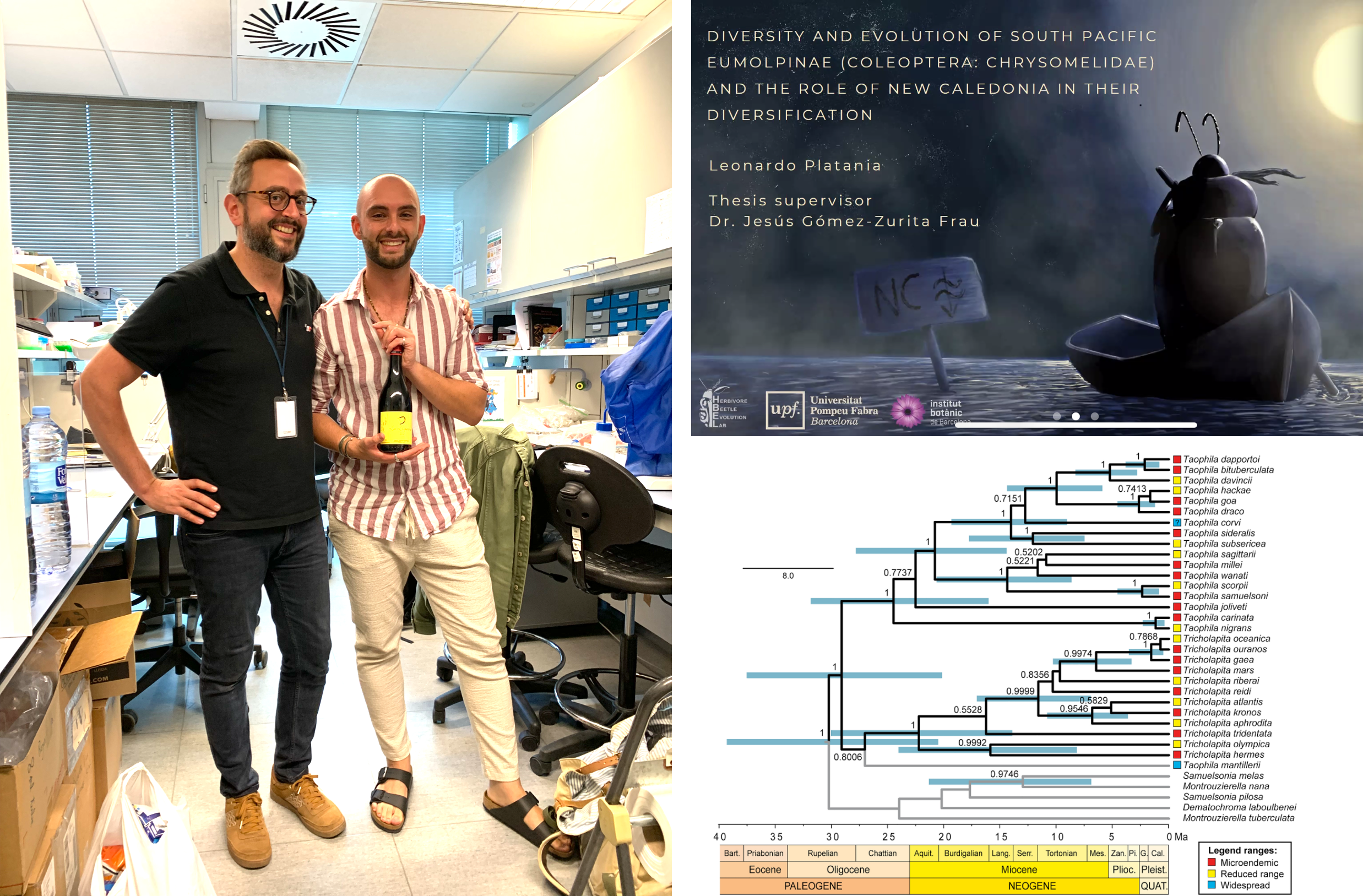
Introducing Dr. Platania!
- 10/2023 – Our new paper on the widespread biogeography of Trigonopterus weevils in the IAA is out in Ecography. Lots of very cool analyses to understand the evolution of this megadiverse group of beetles.
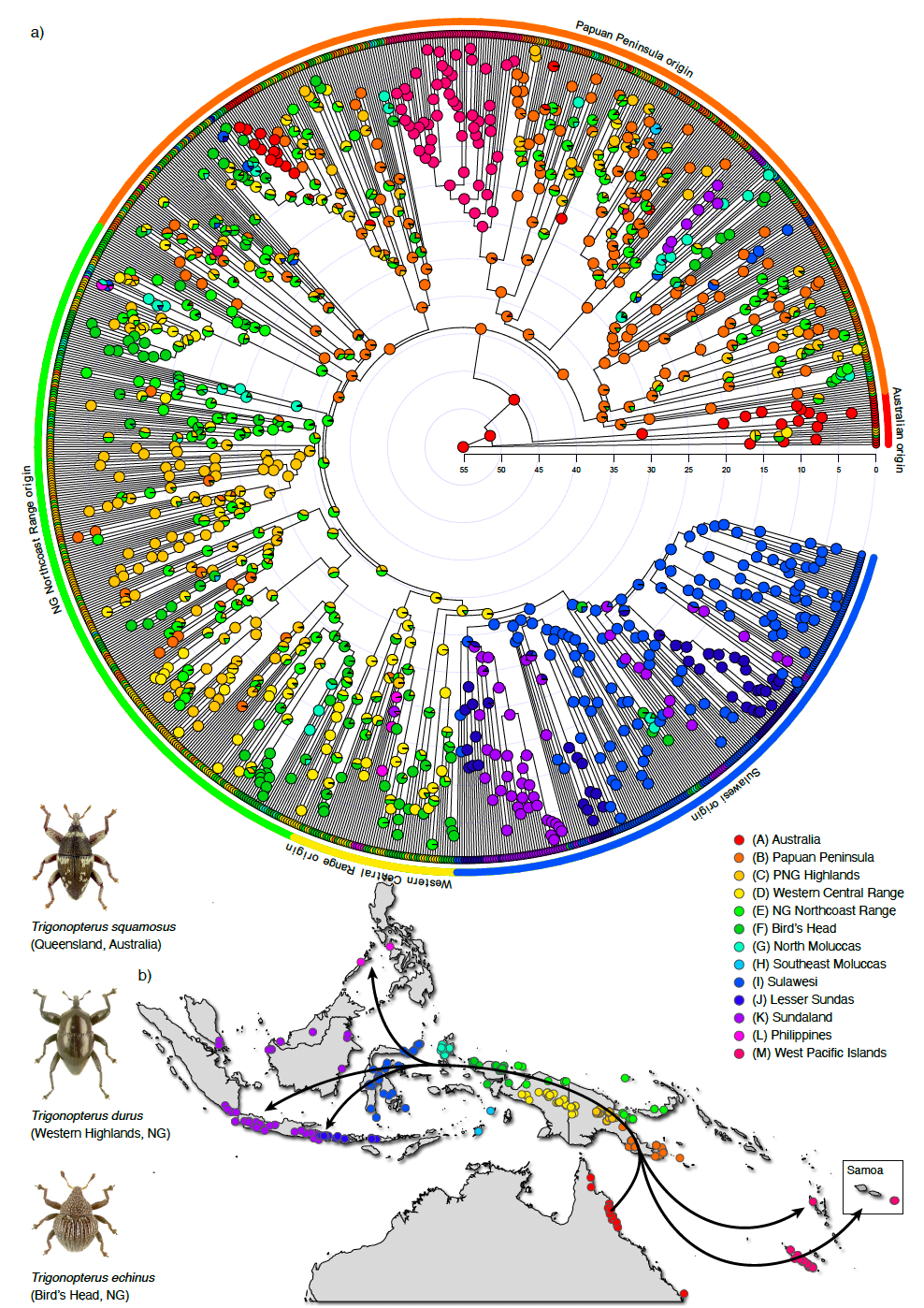
New phylogeny of the genus with >1000 species sequenced! (Letsch et al. 2023 / Ecography)
- 09/2023 – Marie wrote an excellent dissertation and passed her defense to obtain her M.Sc. Congratulations for an amazing amount of work on this alpine Carabus project! This thesis will soon transform into a beautiful phylogeographic study.
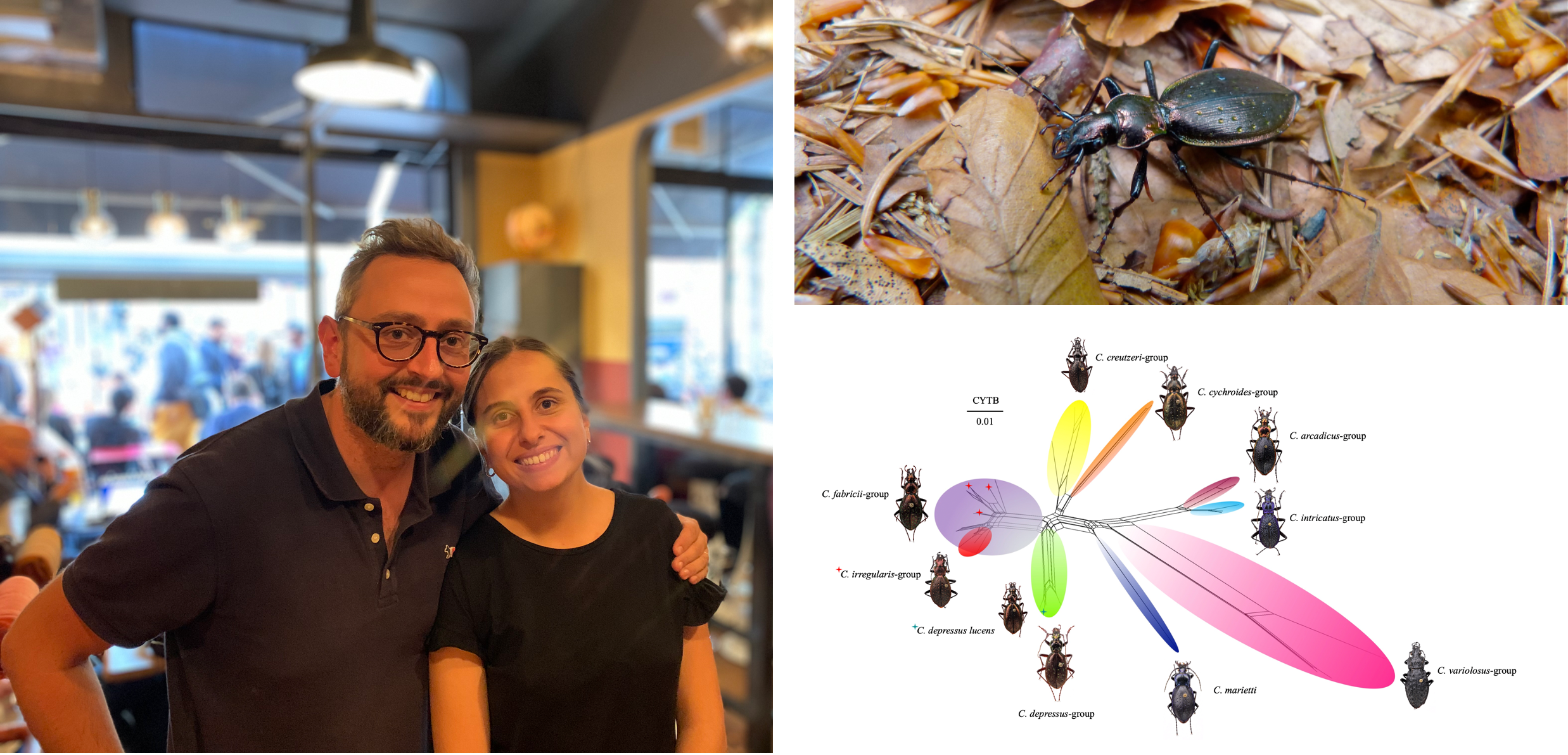
Congratulations Marie for an amazing thesis !
- 07/2023 – Fantastic fieldwork in Parc National du Mercantour looking for two main target species Cicindela gallica and Carabus pedemontanus. Both were found among other species of Carabus inclduing the rare and protected C. solieri observed twice. The collected specimens will be analyzed in various projects focusing on the phylogeography of alpine arc ground and tiger beetles.
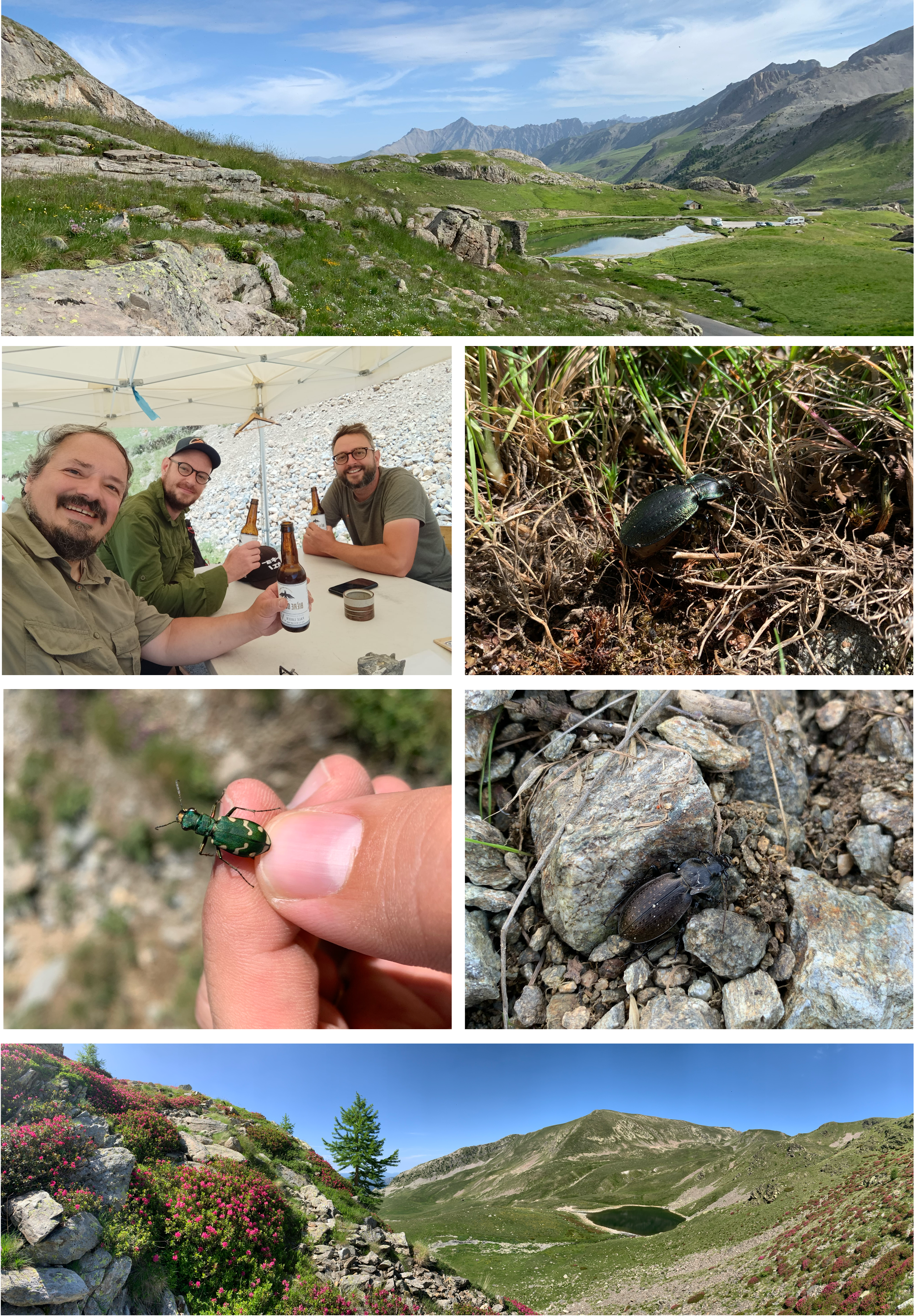
Top and bottom are classical habitats for both species, Cicindela gallica (middle left) and Carabus pedemontanus (middle right)
- 06/2023 – Short trip to Armenia to establish a new collaboration with local entomologists Gayane Karagyan and Tigran Ghrejyan who helped us get samples of Calosoma breviusculum for Jérémy’s project on wing loss genomic evolution. Also the chance to explore Armenian mountains and observe the ground beetle fauna!
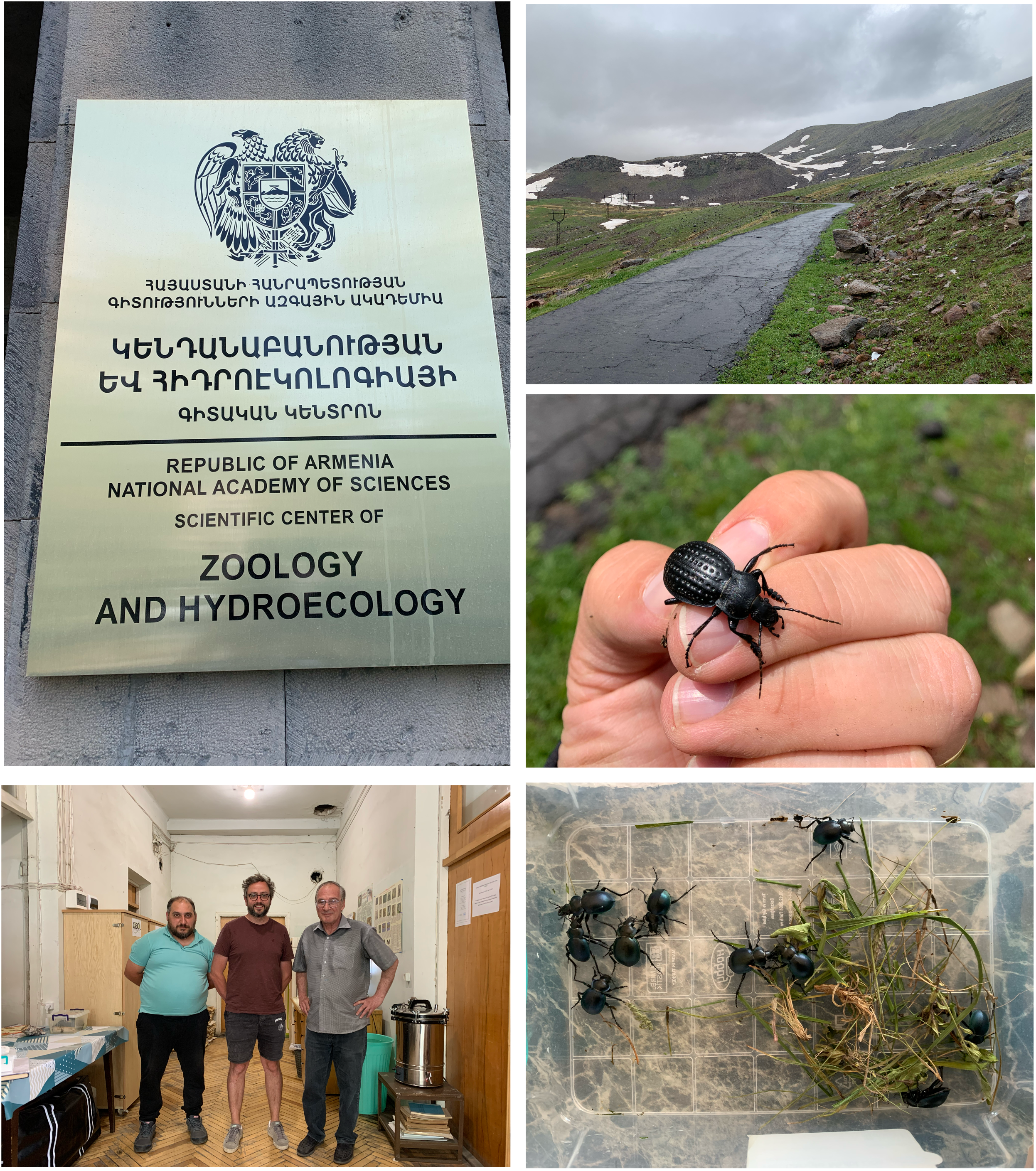
Engaging in new collaborations in the very interesting Caucasus region and doing some fieldwork in Aragats mountains where Carabus cribratus (middle right) and Calosoma breviusculum (bottom right) can be found among other interesting species of ground beetles.
- 06/2023 – Important field expedition with Harlan Gough and Mickael Blanc in Washington state (USA) and British Columbia (Canada) to collect samples for our wing loss evolution project. Most targeted species were found during the trip including rarely collected Calosoma species that will now be intensively studied in the lab using various genomic tools.
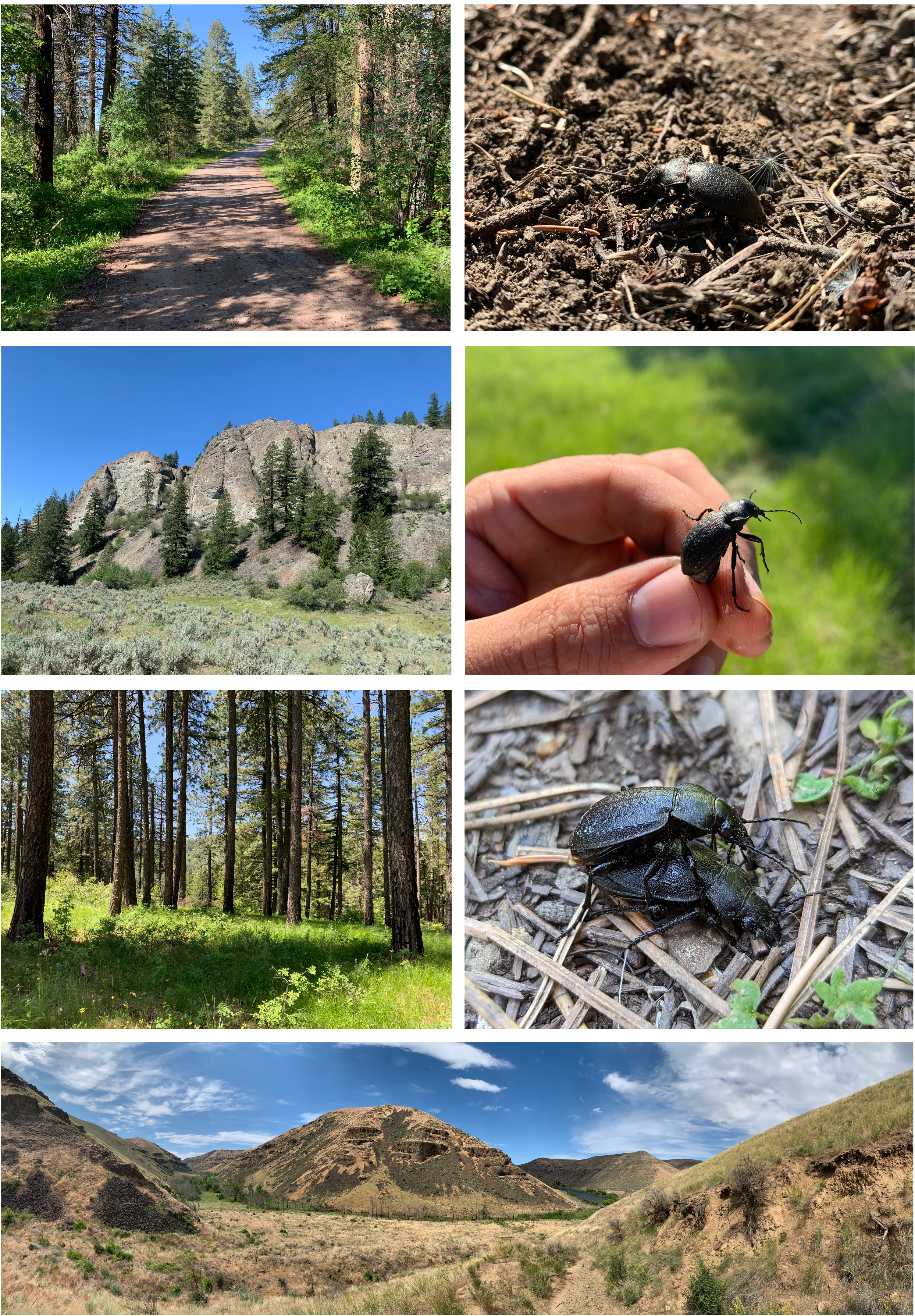
Beautiful landscapes and habitat of northwestern Nearctic Calosoma (top: Calosoma wilkesii and habitat, middle: Calosoma tepidum and habitat, bottom: Calosoma moniliatum and habitat)
- 05/2023 – Our new paper on the global phylogeny of butterflies just came out in Nature Ecology and Evolution. This is the fruit of many years of collaboration across continents to produce such a large-scale evolutionary tree. Lots of very interesting patterns discussed with respect to host plant use and biogeography.
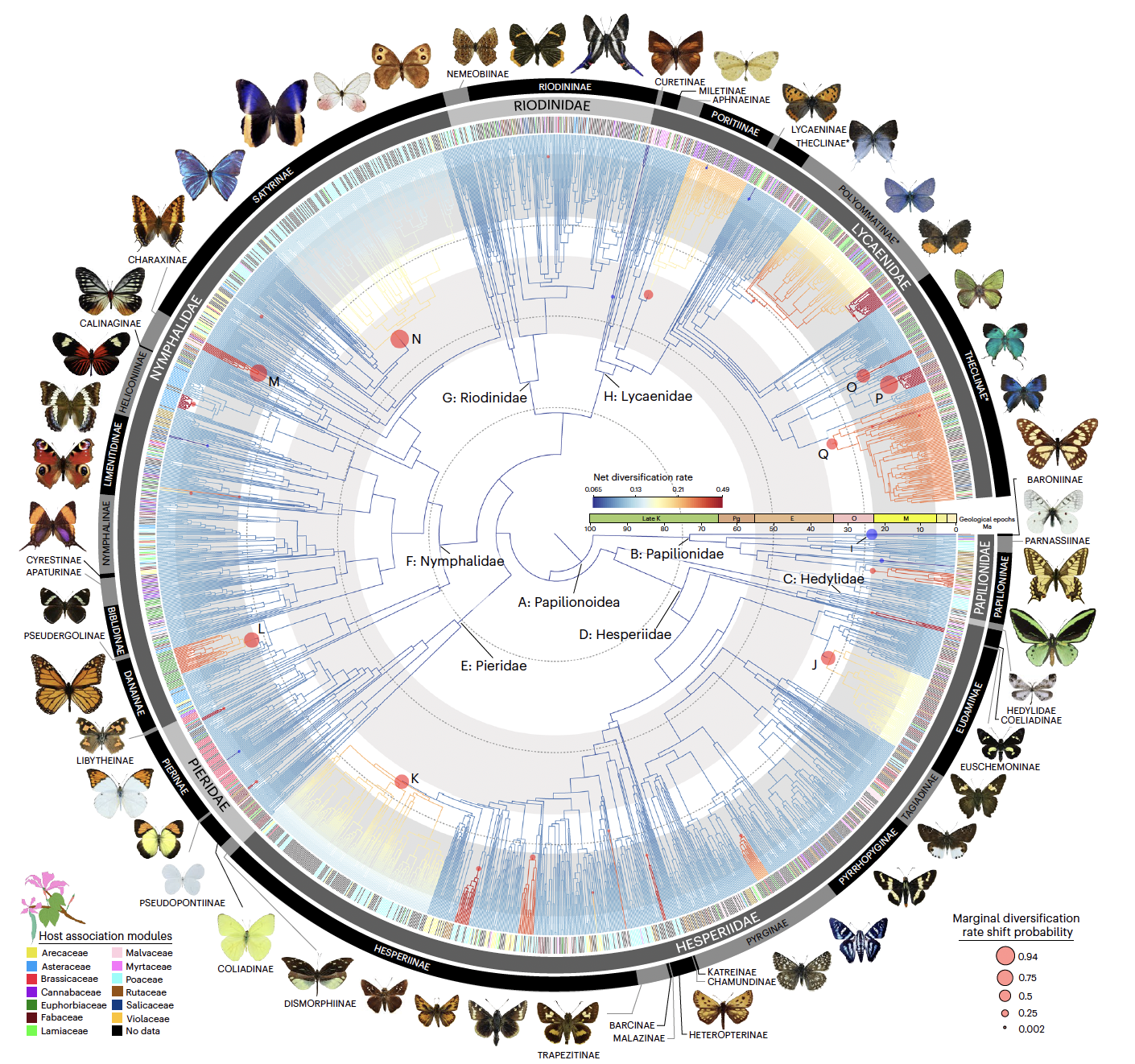
Phylogenomic tree of Papilionoidea (Kawahara et al. 2023 / Nature Ecology and Evolution)
- 01/2023 – The follow-up paper on Trapezitinae macroevolution just came out and should be an interesting read for anyone interested in the evolution of the Australian fauna. Lots of cool analyses looking into the drivers of diversification throughout the Miocene in these butterflies.
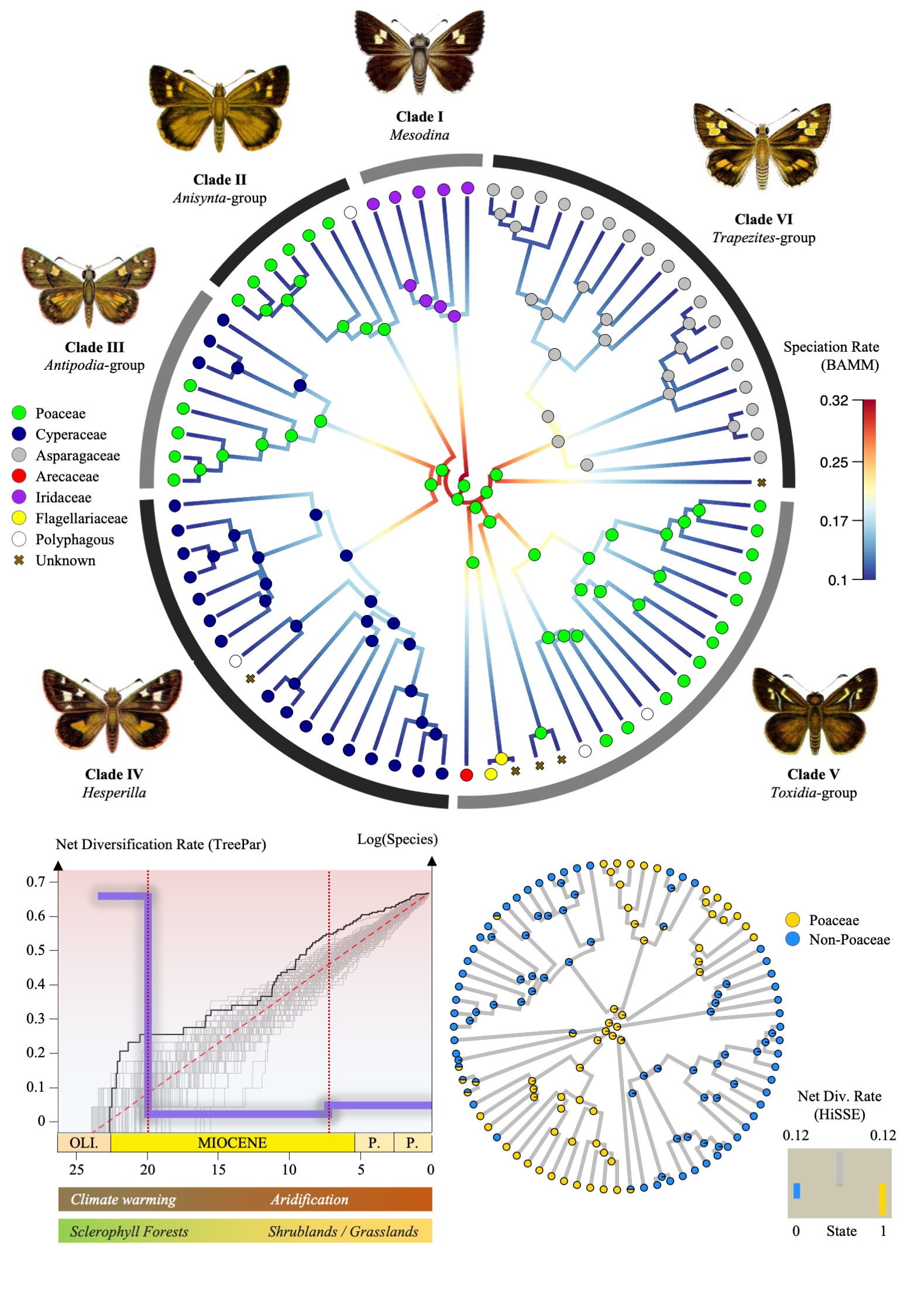
An interesting evolutionary history shaped the current diversity of Trapezitinae skippers in Australia (Toussaint et al. 2023 / Evol J Linn Soc)
- 12/2022 – New publication on Hydraenidae phylogenetics in collaboration with Dave, Manfred and the deeply missed Ignacio. We generated a new evolutionary tree of Prosthetopinae using Sanger data and looked at biogeographical and ecological shifts throughout the evolution of these beetles.
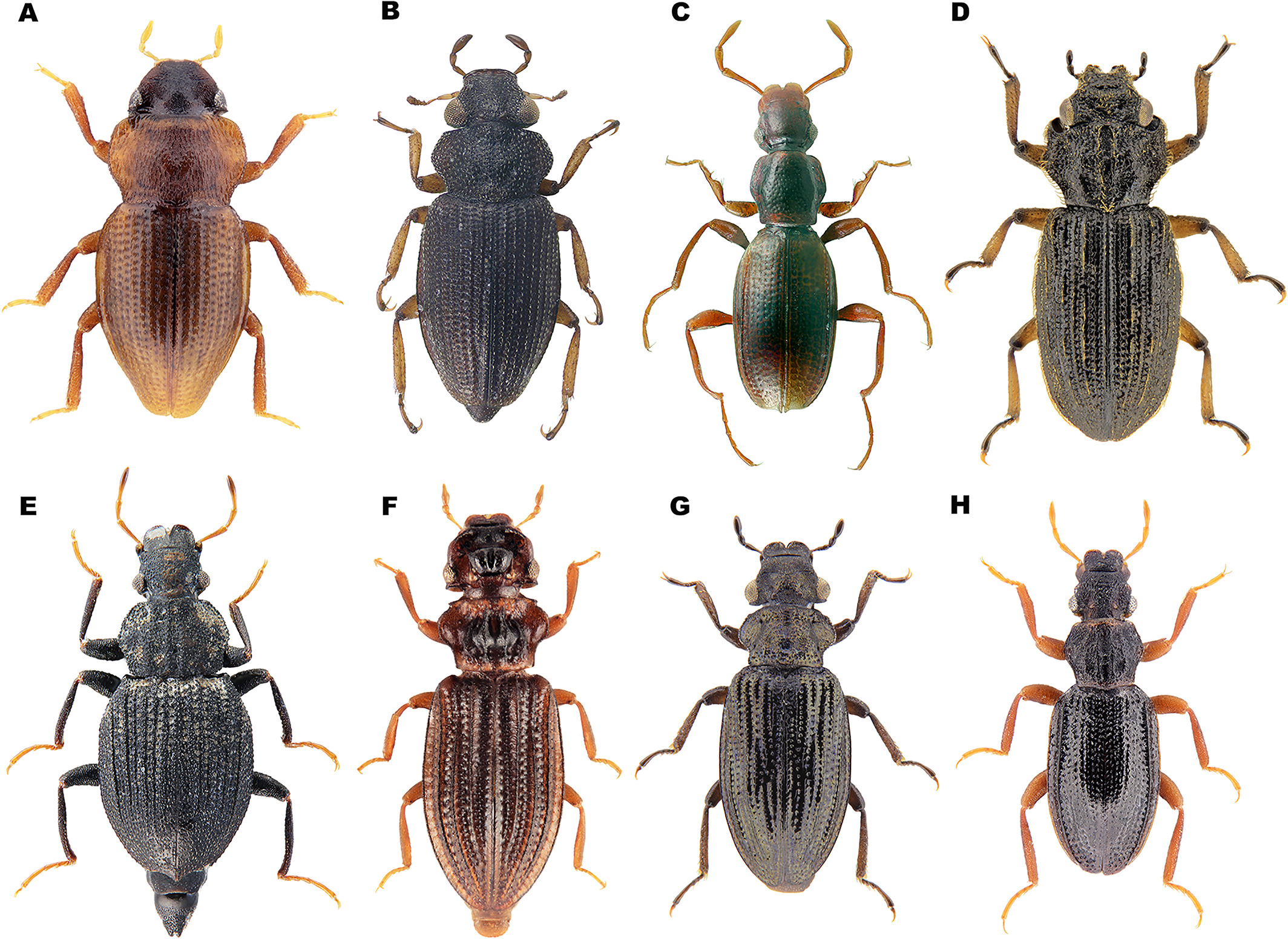
Morpohological diversity in “Gondwanan” Hydraenidae (Bilton et al. 2023 / Syst Entomol)
- 11/2022 – Guess what arrived today at the office? Our brand new Nanopore MinION MK1C that should be our fieldwork companion in the next couple years. Hopefully this will allow us to generate long-read genomic data abroad.
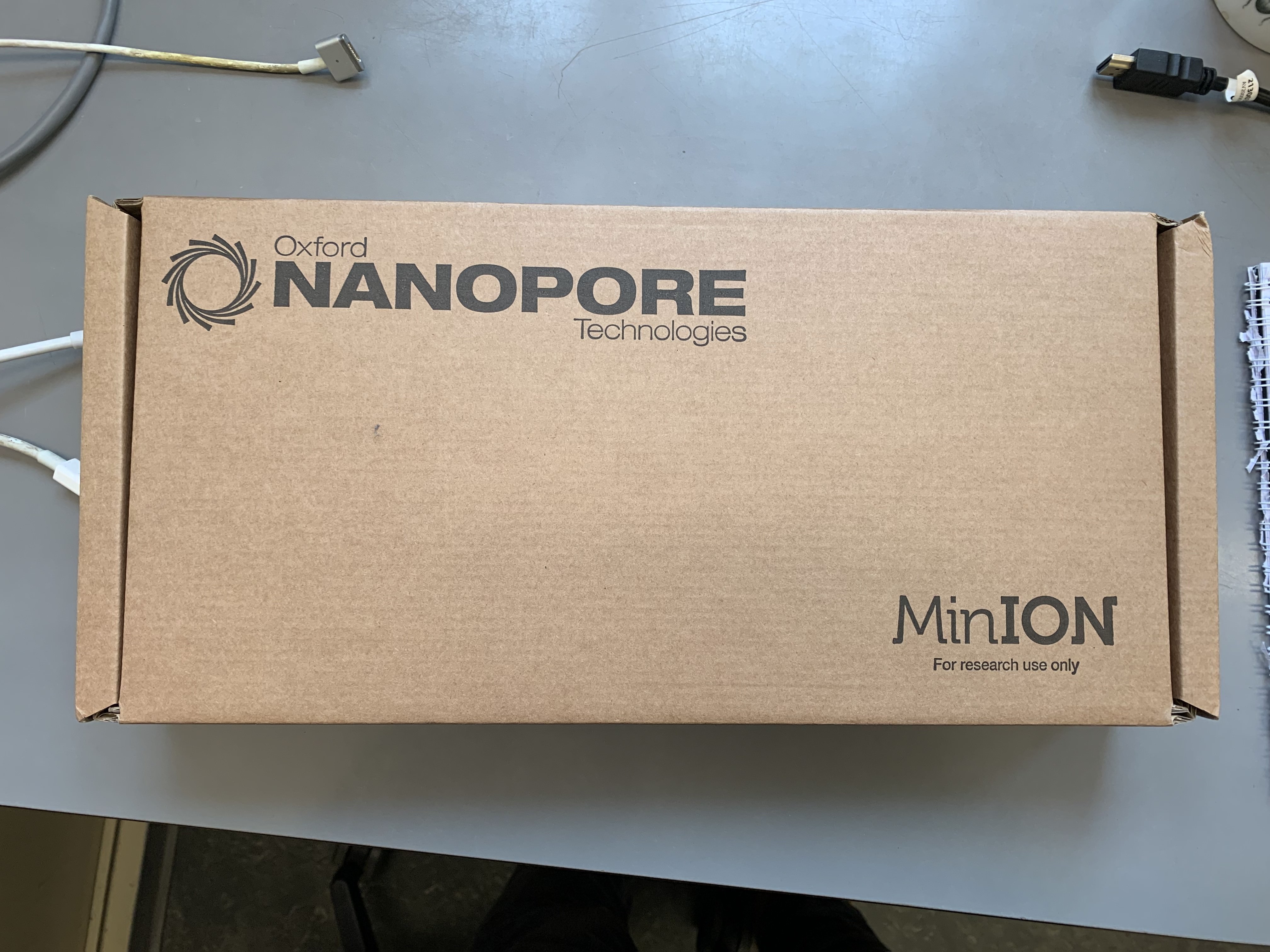
New team member!
- 08/2022 – Amazing opportunity to visit Luzon in the Philippines during the fourth international conference on Southeast Asian Gateway Evolution hosted in Manila. This was also the chance to explore some natural areas and reunite with old friends from ZSM, MFN and Singapore but also to make new ones!
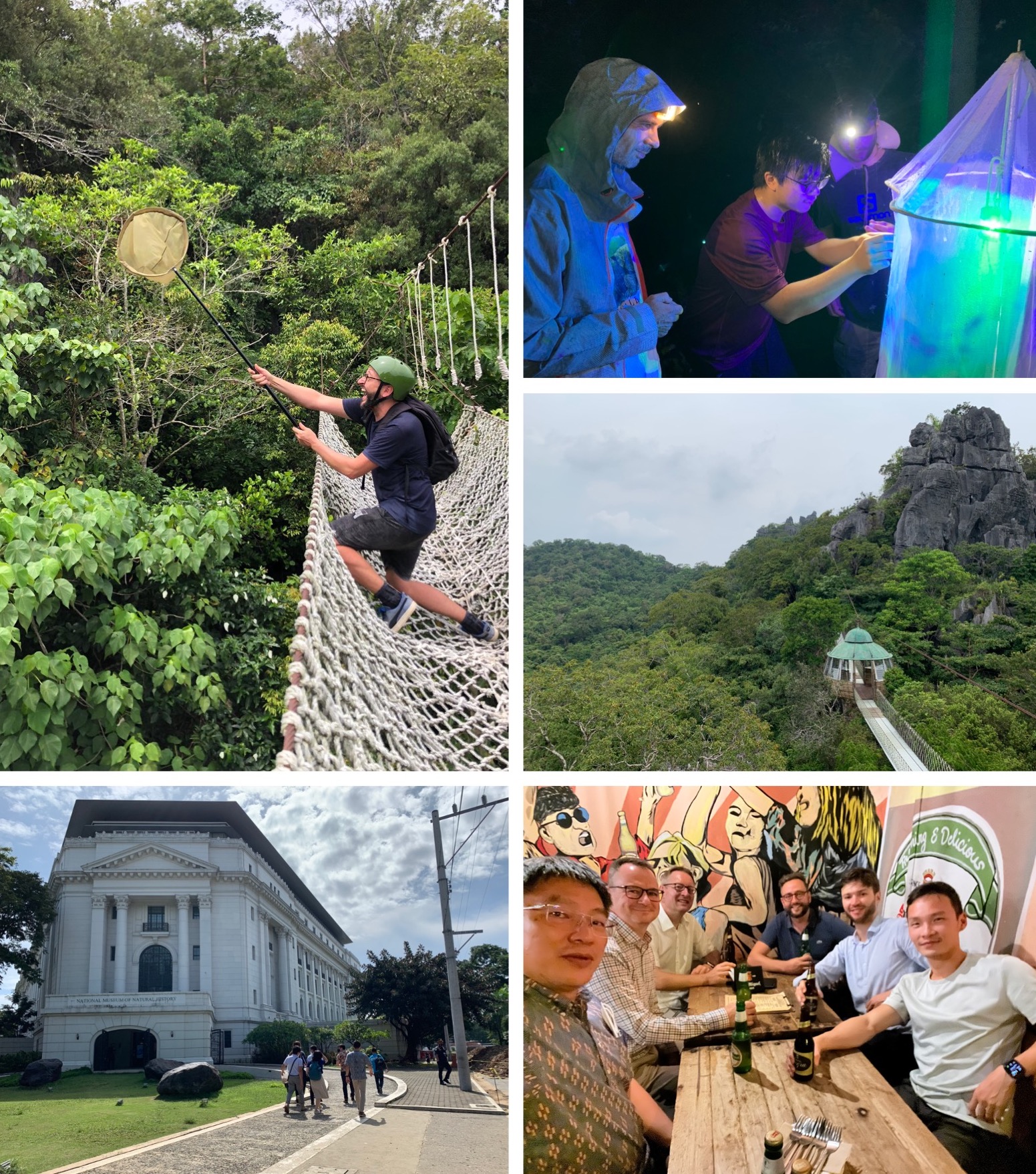
Exploring some nature in the Masungi Georeserve, visiting the National Museum of Natural History in Manila and having a couple beers with friends from Germany and Singapore.
- 06/2022 – A very successful fieldwork with Marie, Cody and our fantastic collaborator Slavčo. We were on the hunt for Calosoma pentheri relictum endemic to Albania and North Macedonia. We explored most alpine habitats in North Macedonia where the species occurs and were able to sample some specimens in multiple localities for a phylogeographic study. A lot of other cool beetles were encountered as well as excellent food and beer!
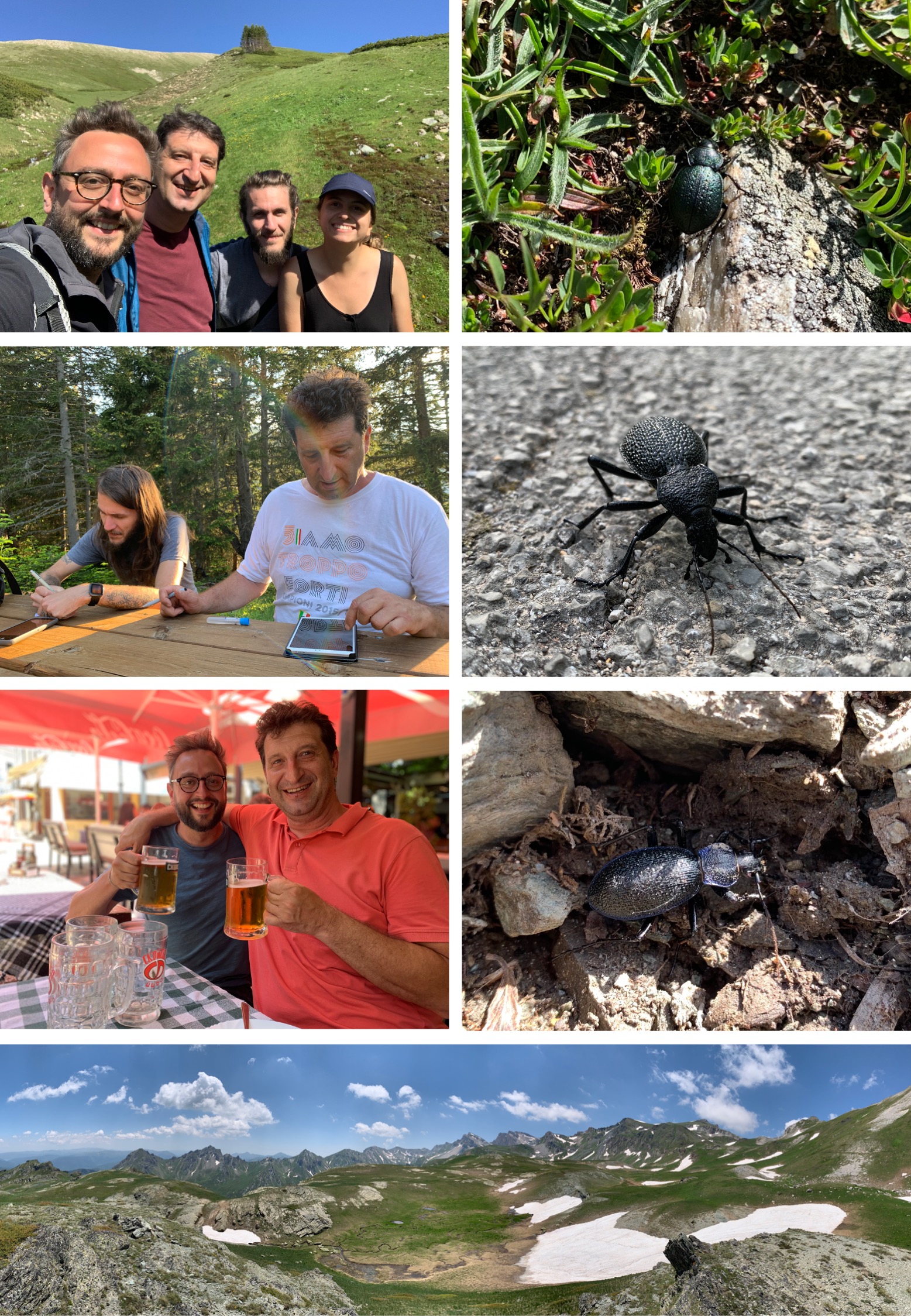
The hunt for Calosoma pentheri relictum across alpine North Macedonia with some of the coolest beetles encountered, from top to bottom on the right side; Calosoma pentheri relictum (!), Carabus gigas and Carabus croaticus (Credit: Emmanuel Toussaint)
- 02/2022 – New paper on Trapezitinae skippers out in the Zoological Journal of the Linnean Society with a molecular phylogeny and the description of a new genus of these butterflies. The following project will focus on expanding the taxon sampling and adding phylogenomic data to look at the evolutionary trends in this group.
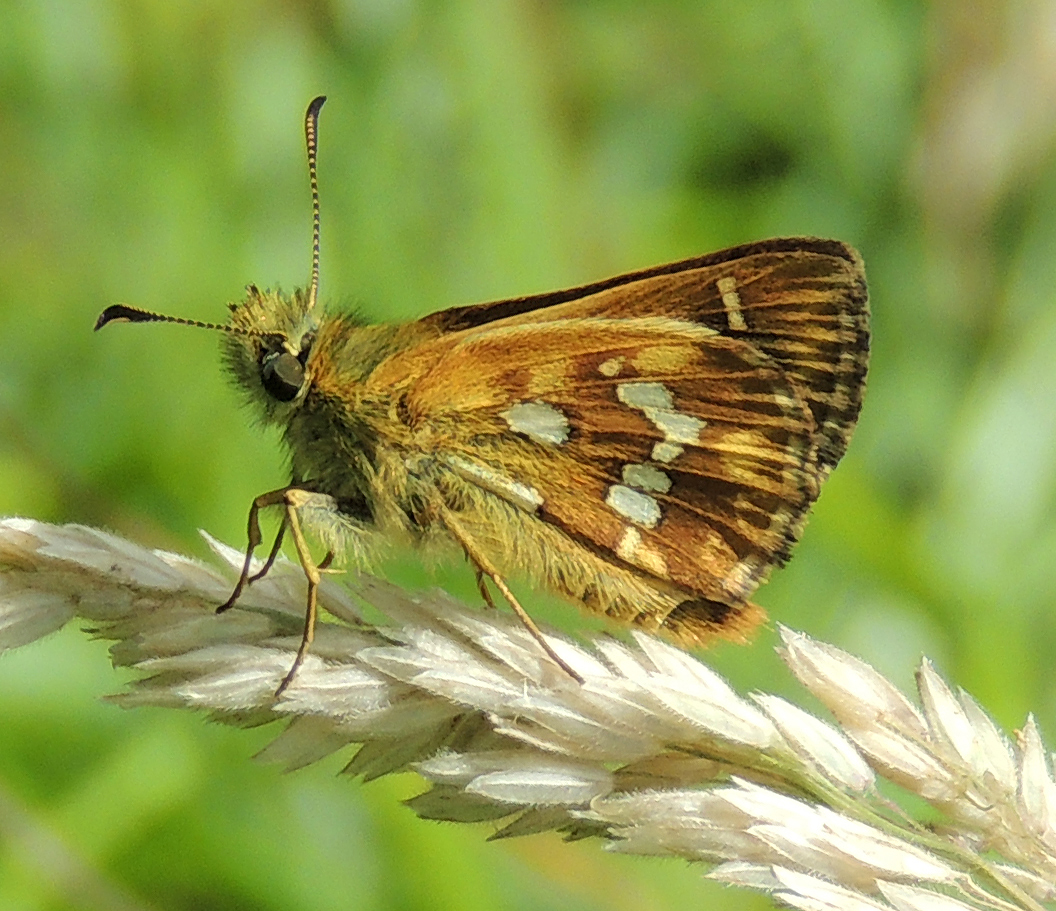
Atkinsia dominula from Polblue Swamp (Barrington Tops, NSW), a species for which we erected a new genus of Trapezitinae (Credit: Michael Braby)
- 02/2022 – Marie and Cody just joined the lab to start their respective projects. Marie will start working on the HyRAD-X data generated for her Carabus Master project while Cody will be focusing his next few months on deploying his Calosoma project and designing the chapters of his PhD dissertation.
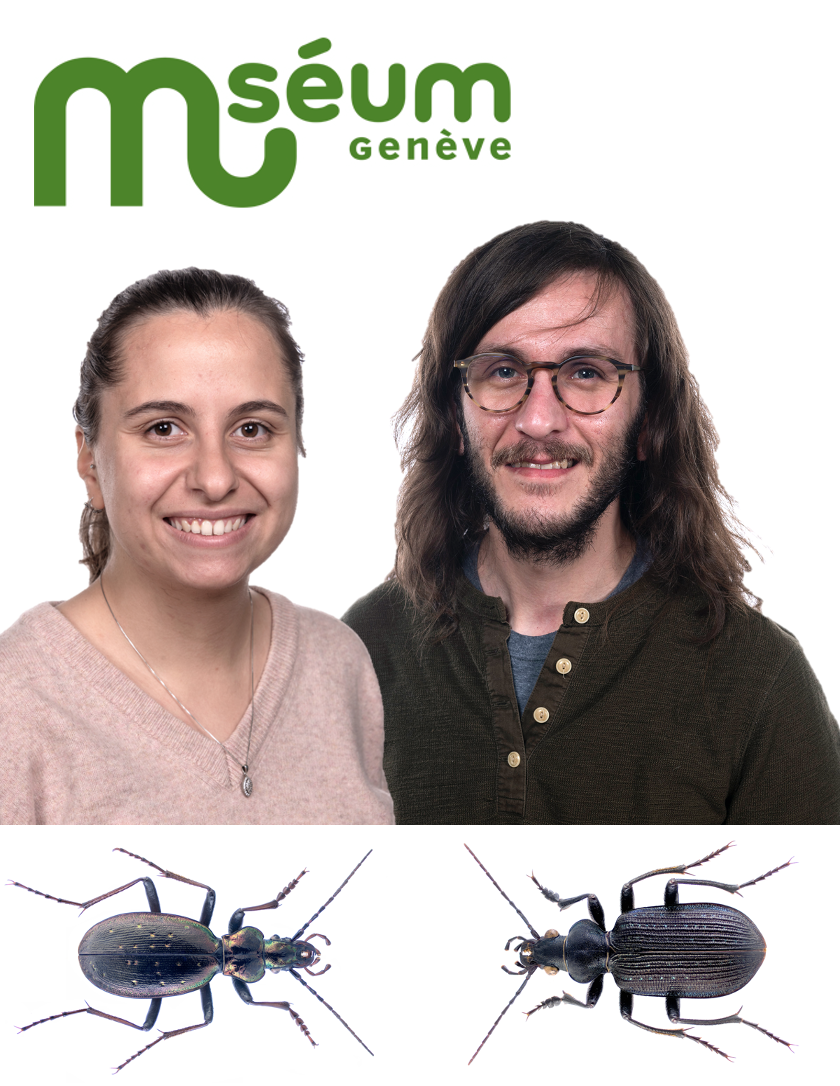
New recruits in the Toussaint Lab to start 2022!
- 12/2021 – Leo returned to Barcelona after three amazing months working at the Museum in Geneva on his Eumolpinae biogeography project. It was a real pleasure to host him in the lab and enjoy chill time outside of it too. We will continue to collaborate and start thinking about ways to bring him back to the lab next year!
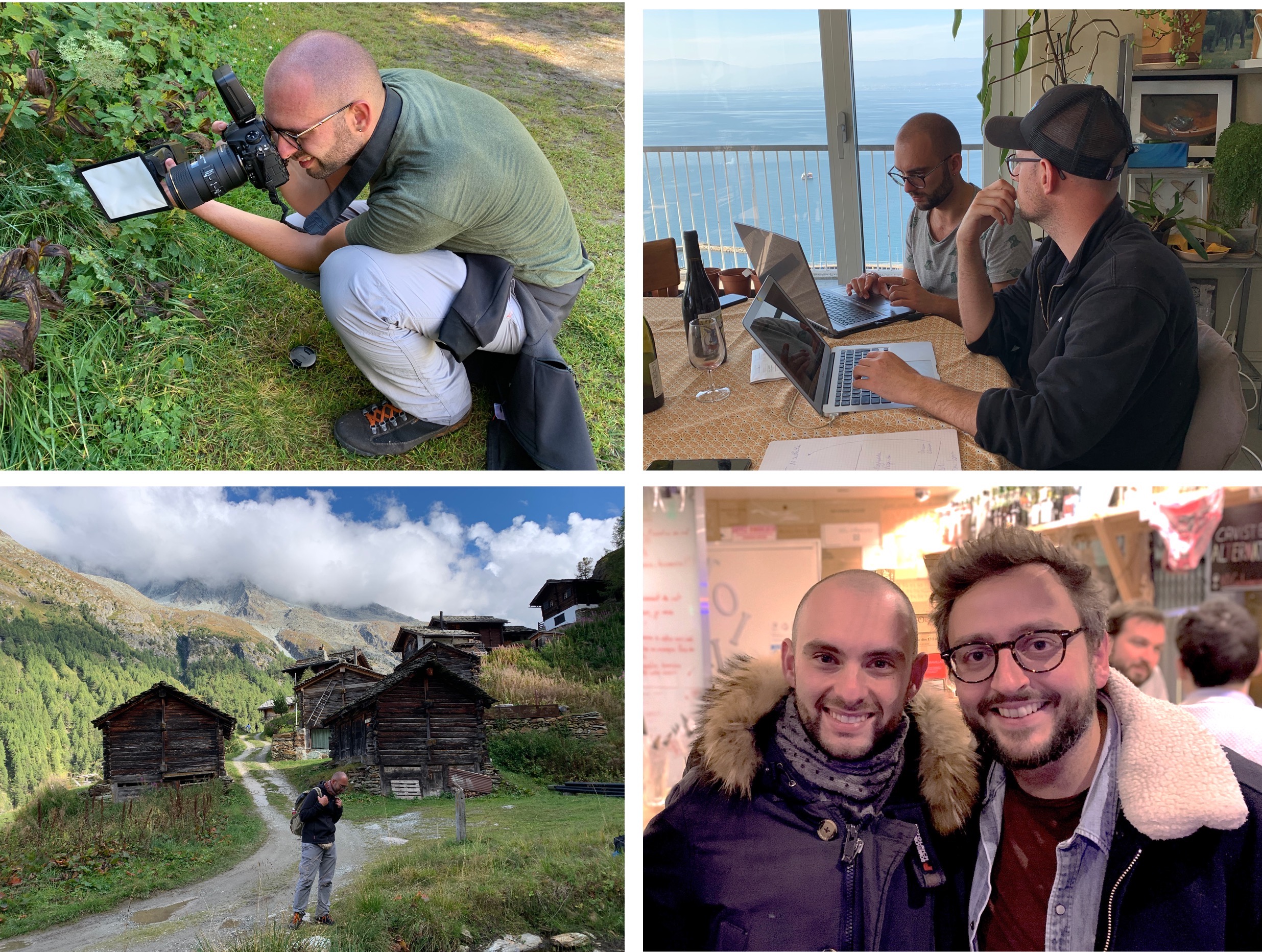
Farewell to Leo after a fantastic few months in Geneva !
- 11/2021 – Return from an expedition along with colleagues from the MHNG and Yves Hausser from the HEPIA and ADAP to discover and identify taxonomically poorly known sites and territories in western Tanzania. Despite missing the early new rains, we could observe a series of very interesting beetles.
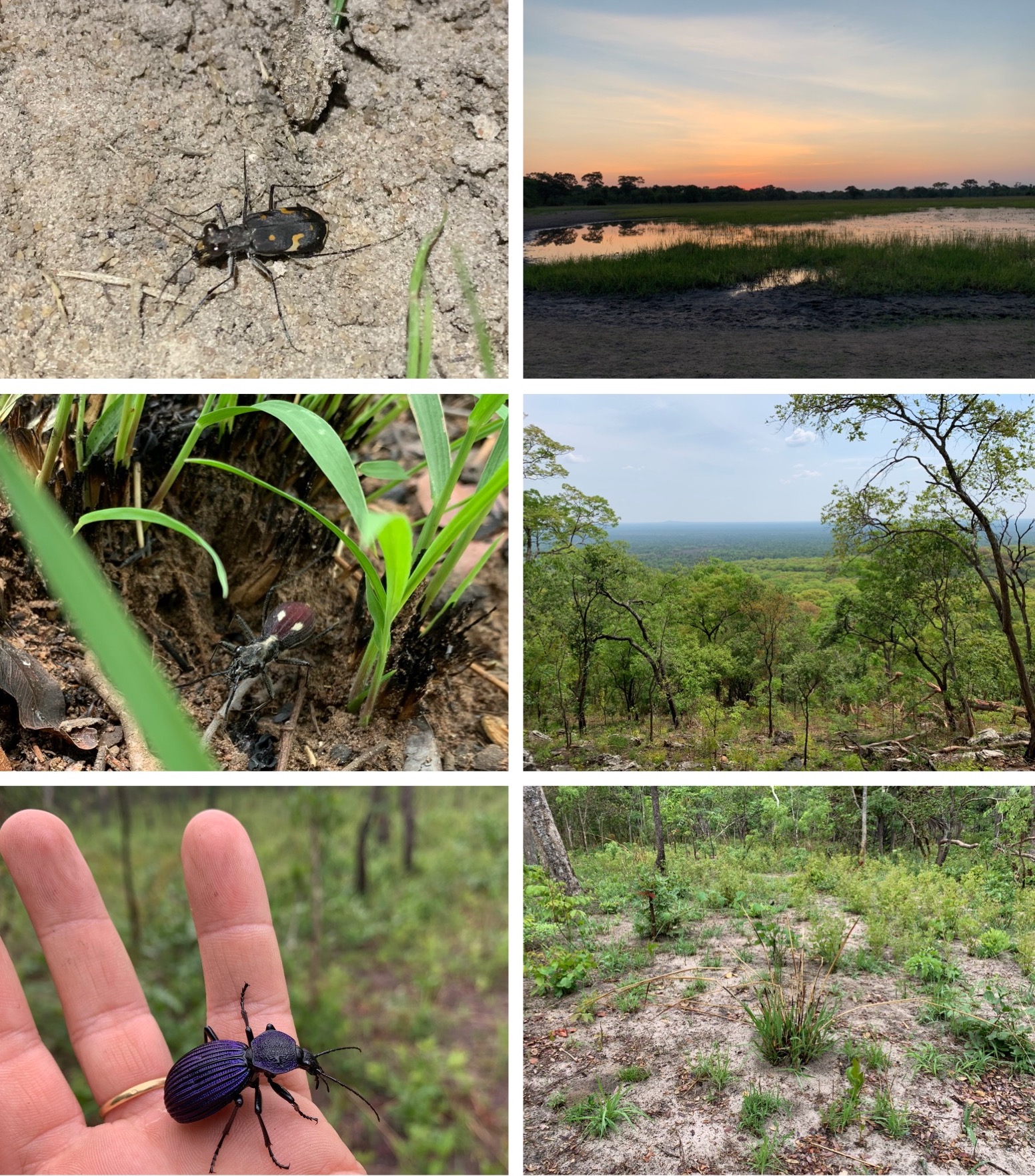
Some tiger and ground beetles from western Tanzania, from top to bottom with respective habitats on the right, Myriochila jordaniana, Dromica mauchii and Tefflus carinatus (Credit: Emmanuel Toussaint)
Hopefully we get to go back next year to help build the reference collection of insects in TAWIRI and to also collect potentially new or poorly known taxa in collaboration with local people with whom we have had a really nice time in western Tanzania.
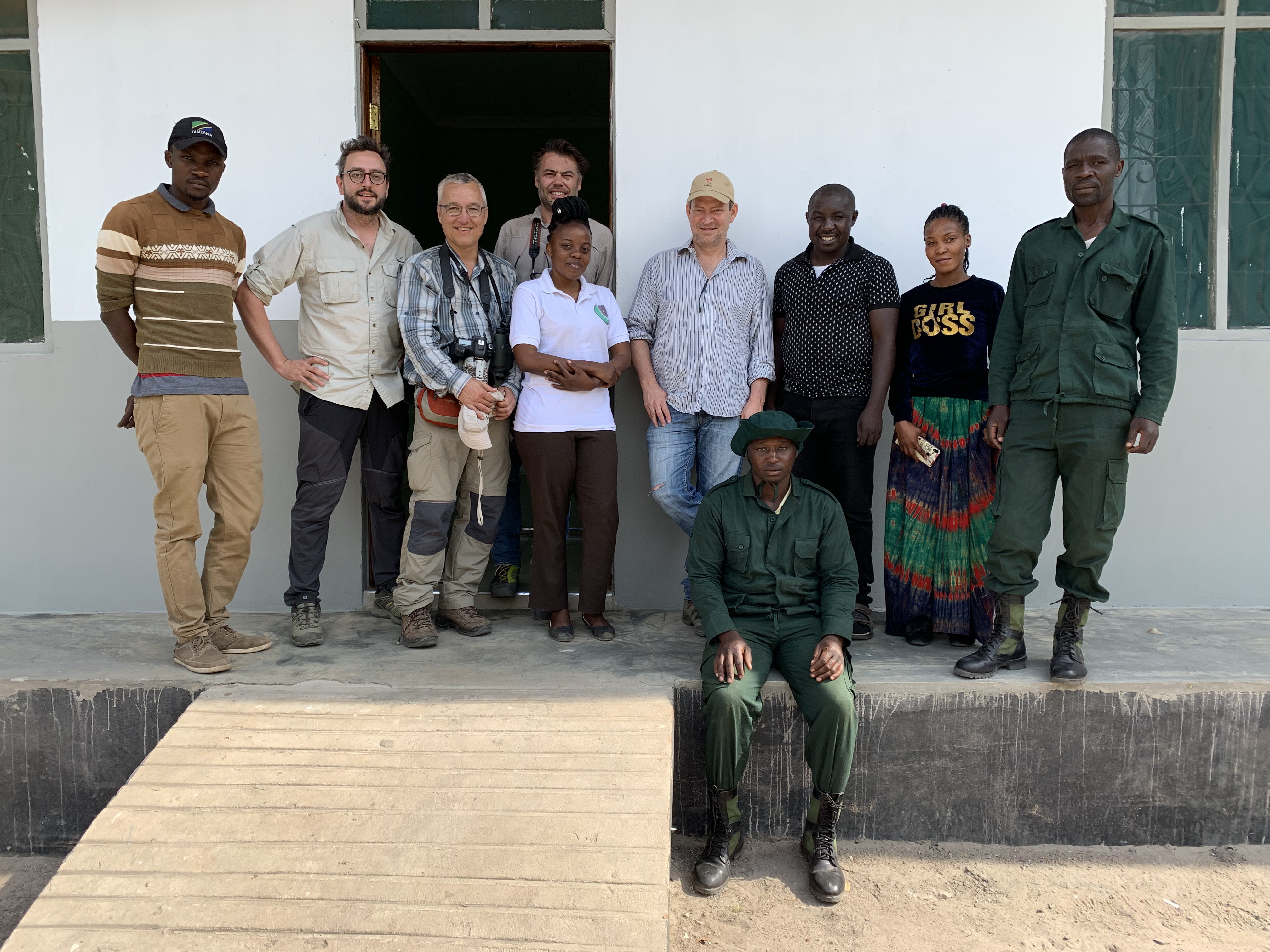
The ADAP and MHNG teams in an ADAP facility near Tabora close to the Rungwa Game Reserve (Credit: Emmanuel Toussaint)
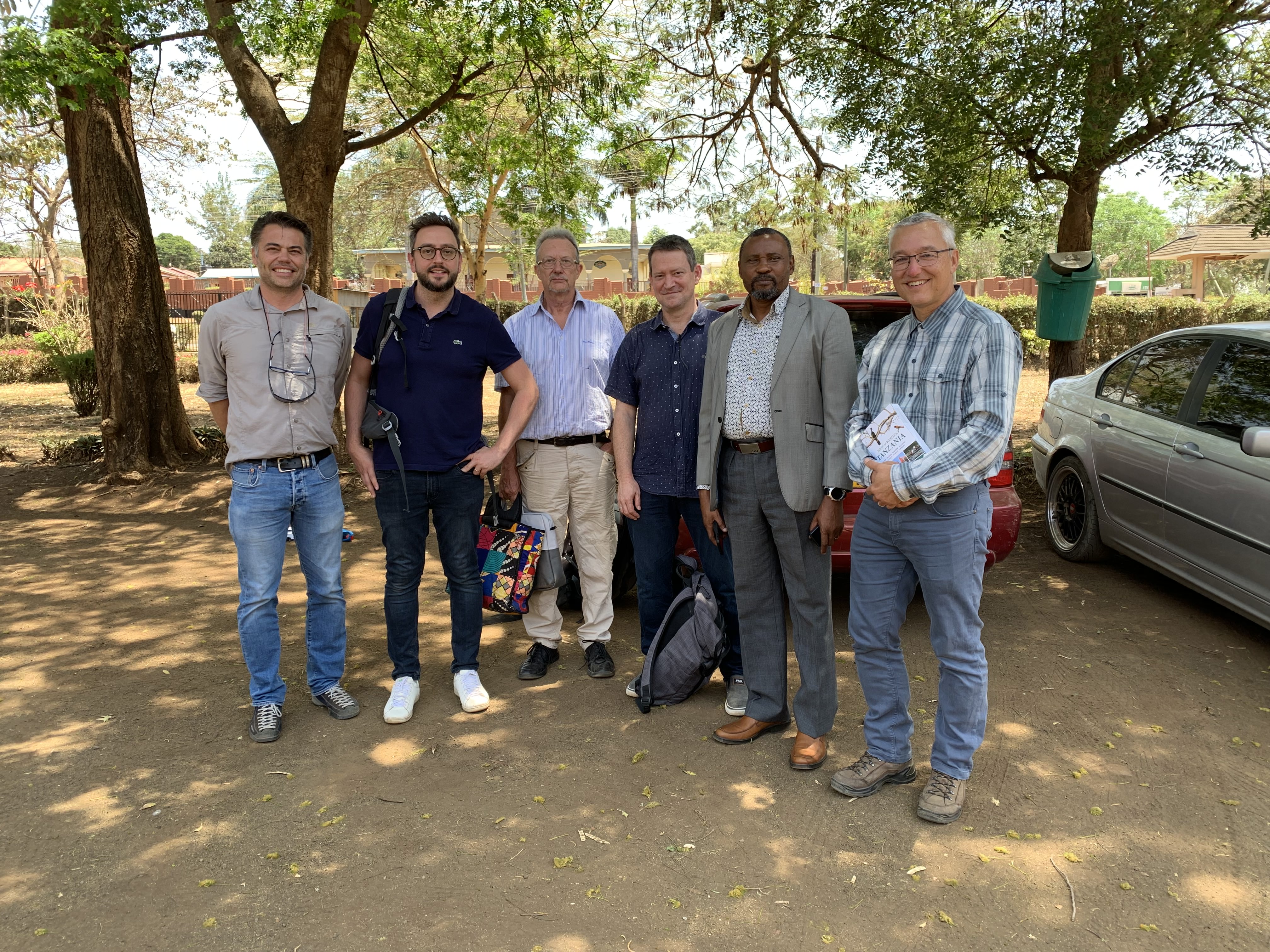
The MHNG team along with Yves Hausser from HEPIA, TAWIRI executive Ernest Mjingo and the TAWIRI research collection curator Alain Pauly in the premise of the TAWIRI headquarters in Arusha (Credit: Emmanuel Toussaint)
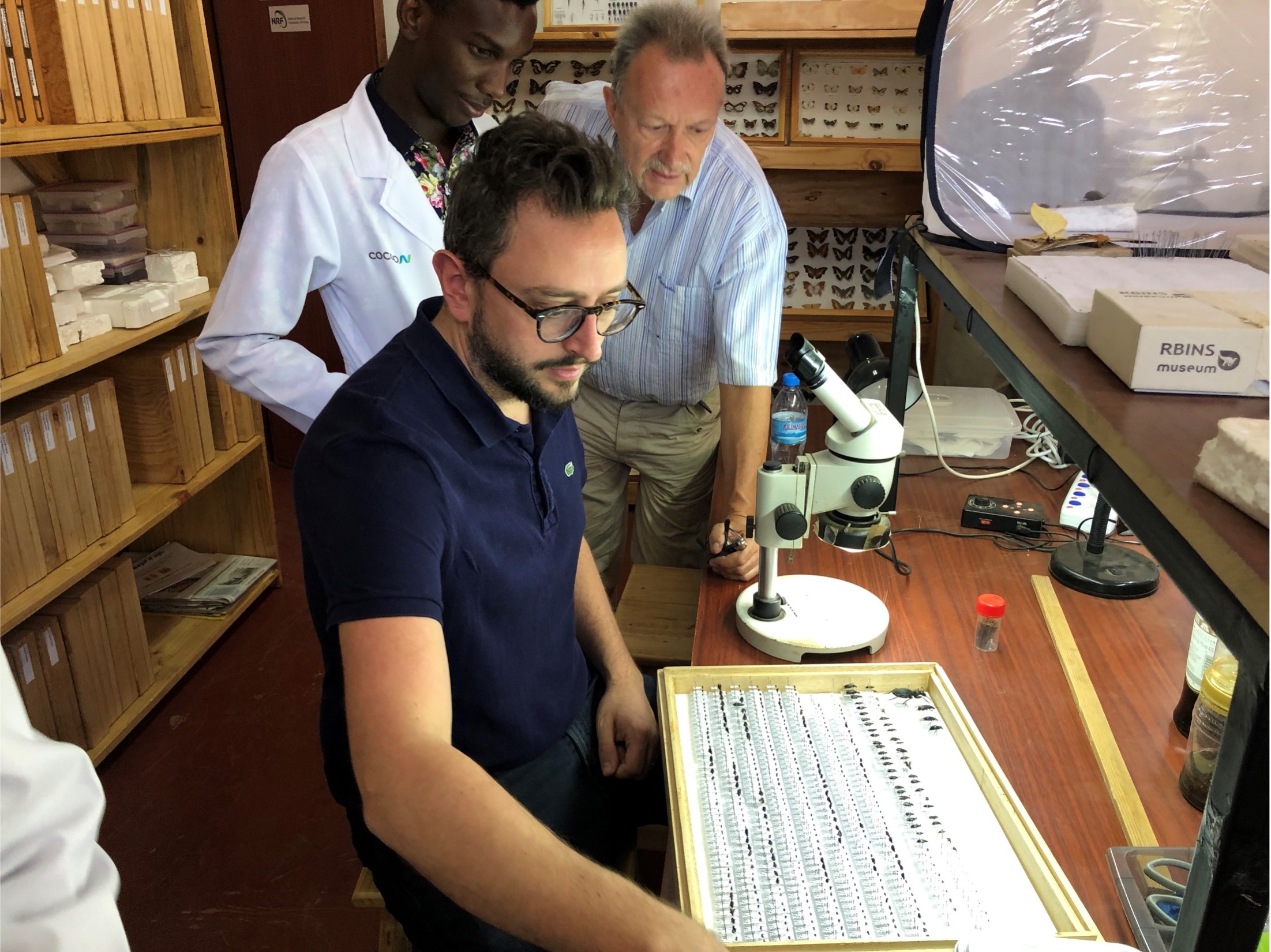
Looking at the insect collection curated by Alain Pauly and his team in TAWIRI, including some very interesting endemic brachypterous Calosoma from the Kilimandjaro (Credit: Laurent Valotton)
- 09/2021 – A brief apparition in the show Couleurs Locales on the RTS channel to present the diversity of xylophagous insects in the Canton of Geneva and their usefulness.
- 07/2021 – Stephen’s new article on the dating of Adephaga evolution just came out in Systematic Entomology. We use a comprehensive phylogenomic matrix combining UCE, RNAseq and WGS data to infer a robust phylogeny of the suborder. Using a revised fossil taxon sampling, we also provide a refined timeframe for the evolution of the group that will be extremely useful for subsequent biogeographical and macroevlutionary studies.

New insights into the evolutionary history of Adephaga based on phylogenomic data (Baca et al. 2021 / Syst Entomol)
- 05/2021 – Our new article on Carabinae evolution was just published in Genome Biology and Evolution. This is a study focusing on different evolutionary aspects, from the placement of the potentially extinct Saint-Helena endemic genus Aplothorax to the use of HyRAD-X to generate high-quality museomics data. We infer a robust backbone for the subfamily and propose a new evolutionary framework based on fossil data.
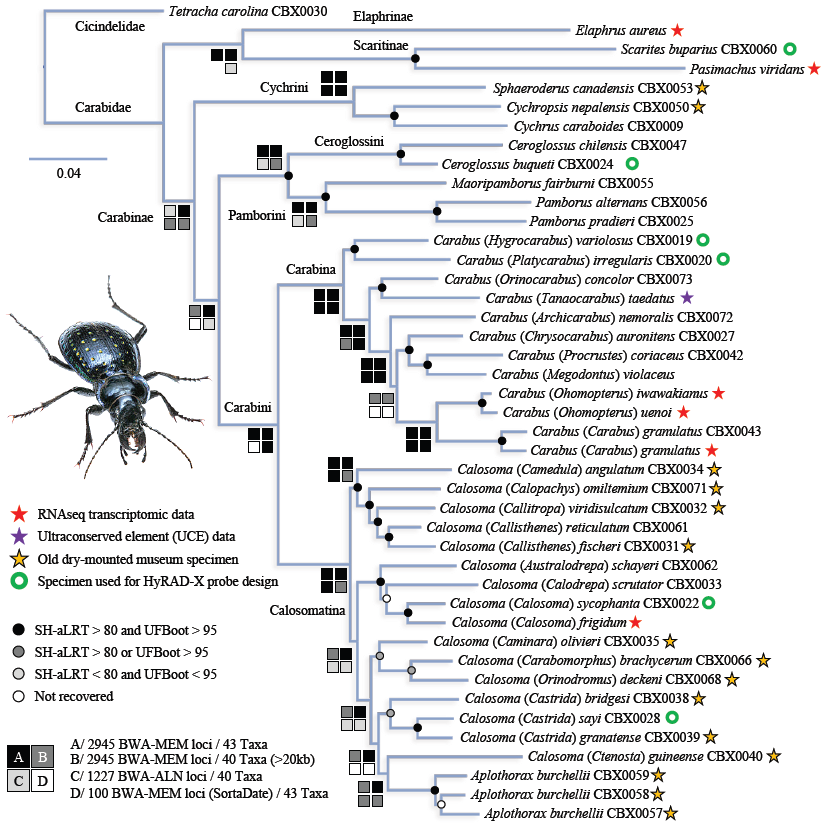
Phylogenomic tree of Carabinae based on HyRAD-X data generated from both fresh and museum specimens (Toussaint et al. 2021 / Genome Biol Evol)
- 04/2021 – I received confirmation from the Swiss National Science Foundation (FNS) that my project on Calosoma wing evolution is fully funded! This project comes with a 4-year PhD position and a 3-year postdoc position. It will start between the end of this year and early 2022 and will focus on building UCE phylogenomic trees, exploring the diversity of this genus, studying phylogeographic patterns but most importantly wing evolution with transcriptome and genome sequencing of key lineages! Drop me a line if you are interested!

Calosoma (Calosoma) inquisitor one of the winged species of the genus that can be found under temperate climate (Credit: Björn S.)
- 04/2021 – Our paper on Exocelina biogeography is out in BMC Ecology and Evolution. A new addition to the comprehensive study of this diverse diving beetle genus in New Guinea with a novel GIS-based approach that allows a more fine-scale investigation of lineage diversification in a geological framework.

Divergence time estimates of New Guinean Exocelina diving beetles representing the most comprehensive phylogeny ever inferred for this genus. (Toussaint et al. 2021 / BMC Ecol Evol)
- 01/2021 – New paper on the systematics and biogeography of Acidocerinae water scavenger beetles. This is the result of years of work by the Short Lab and is really a nice achievement. Some of these beetles are secondarily terrestrial including species from the remarkable genus Quadriops that I had the chance to observe in Suriname back in 2016.

A fragment of the very large new phylogeny fo Acidocerinae showing the placement of the terrestrial genus Quadriops that can be found in rotten Clusia fruits on the floor of Neotropical rainforests (Short et al. 2021 / Syst Entomol)
- 11/2020 – Two new papers published on skipper phylogenomics and biogeography. The first looks into the evolution of Heteropterinae skippers and finds interesting patterns of historical biogeography. The second one focuses on Coeliadinae skippers that are found in tropical regions of the Old World and also investigate the placement of the oldest known butterfly fossil †Protocoeliades kristenseni. Two subfamilies that are now completed with a robust evolutionary framework.

New timetree based on anchored phylogenomics for Heteropterinae (Toussaint et al. 2021 / Zool Scr)

New timetree based on anchored phylogenomics for Coeliadinae (Toussaint et al. 2021 / Syst Entomol)
- I am sharing a page of Terre & Nature with Ivan Löbl emeritus curator at the MHNG where we discuss the need for taxonomy to be recognized as crucial in the future of biodiversity research in general.

Press coverage of Terre & Nature on the topic of taxonomy and the difficulty to find funding and opportunities to train new scientists (Story by Clément Grandjean)
- 10/2020 – Elena’s paper on color evolution and biogeograohy of Preponini butterflies is out. This concludes the complete molecular revision of the subfamily Charaxinae and reveals very cool patterns of diversification both geographical and morphological.
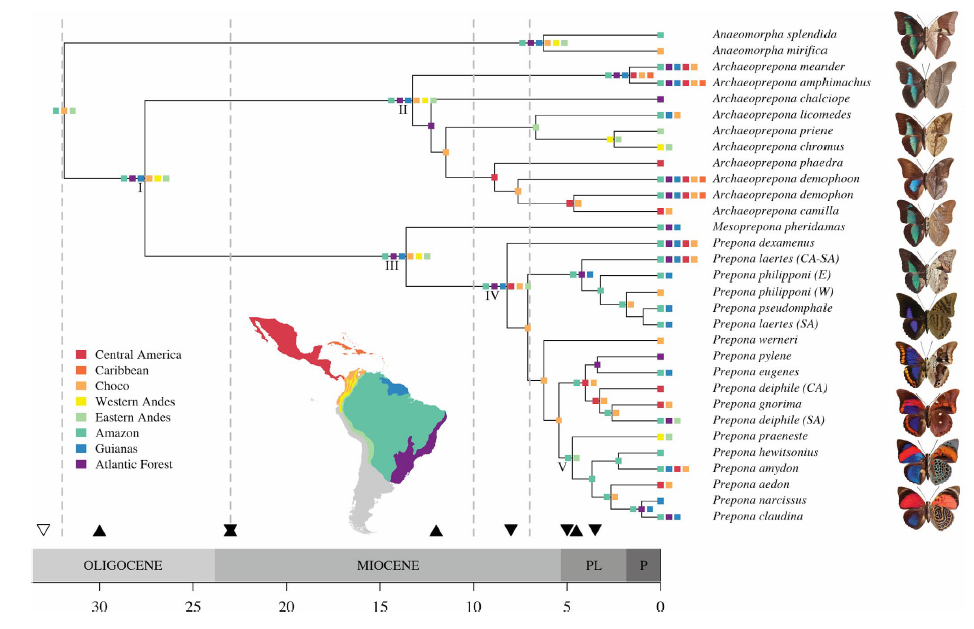
Historical biogeography of Preponini butterflies showing a complex pattern of diversification due to the widespread ragnes of several species in this tribe. (Ortiz-Acevedo et al. 2020 / Ecol Evol)
- 09/2020 – Ana’s paper on the evolution of sphragis in Acraeini is published in Systematic Biology! A comprehensive anchored phylogenomic tree of these butterflies is reonstructed along with cool macroevolutionary patterns.
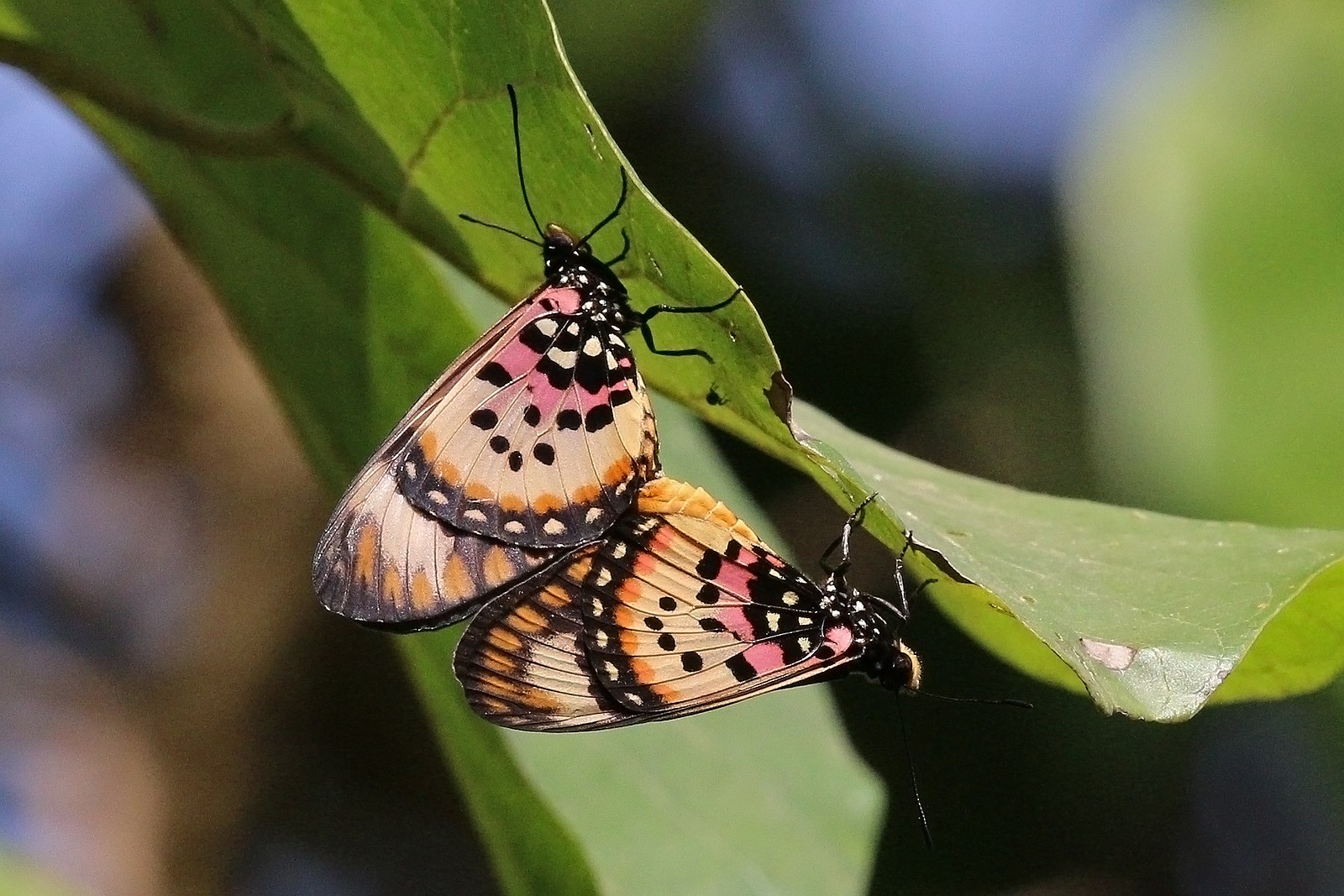
Acraeini is a diverse tribe of brushfooted butterflies in which the males of many species such as in Acraea zetes illustrated here (Credit: Charles J. Sharp), use a plug called sphragis to prevent future mating of the females.
- 06/2020 – Harald’s paper on the biogeograhical evolution of Trigonopterus is out in Ecography! This study focuses on the diversification of the genus in the Wallacea and on the potential role of the two ecologies found in these beetles (edaphic versus foliage-dweller).

Morphological diversity in the hyperdiverse genus Trigonopterus. Species in the green rectangle are foliage specialists while species in the brown rectangle are leaf litter specialists. (Letsch et al. 2020 / Ecography)
- 06/2020 – Our paper with Conrad on Phanaeini macroevolution got published in the Biological Journal of the Linnean Society. This study investigates the systematics and evolution of the tribe Phanaeini with a focus on the various ecologies of these beetles. Indeed, while most species are coprophagous, some lineages are necrophagous and others are even myrmecophilous. We provide new insights into this ecological evolution with a comprehensive timetree of the tribe.

Phylogenetic tree of Phanaeini showcasing their biogeographical evolution and the transitions from coprophagy to necrophagy and myrmecophily. (Gillett & Toussaint 2020 / Biol J Linn Soc)
- 02/2020 – A new paper investigating butterfly biogeograohy in the Indo-Australian Archipelago (IAA), this time using the diverse tribe Adoliadini. This study presents a new phylogeny of the IAA Adoliadini along with a reconstruction of ancestral areas that suggests an Indomalayan origin in the Oligocene followed by range expansion across the IAA as it is being progressively building up.
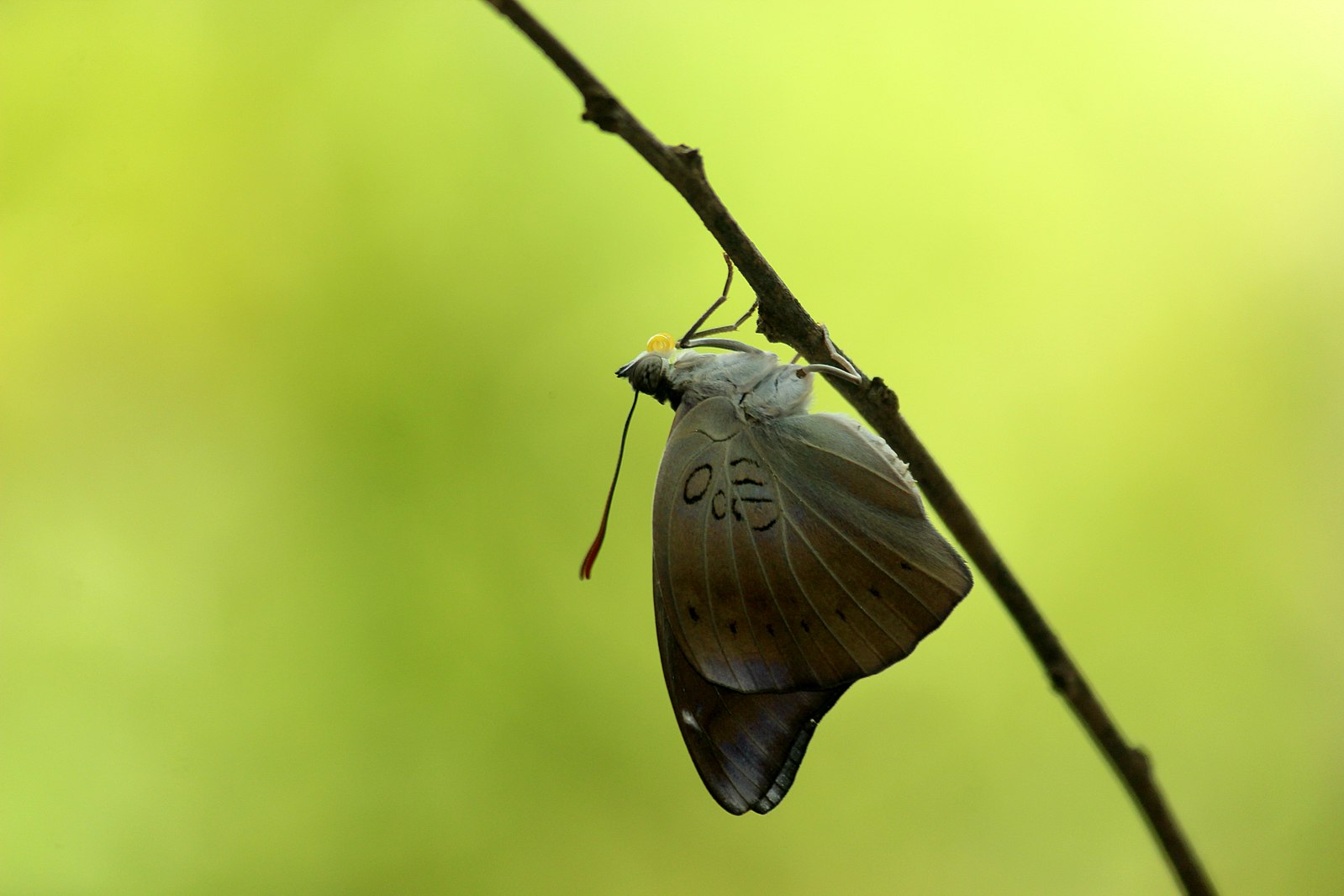
The Common Baron Euthalia aconthea, a widespread species of IAA Adoliadini butterflies which are the focus of our new phylogenetic study (Credit: Brijesh Pookkottur)
- 01/2020 – Two new papers published in the beginning of this year. One led by Harlan on tiger beetle transcriptomics revealing interesting new backbone relationships and the other led by Harald showcasing the complex evolutionary history of Cryptorhynchinae snout weevils. Both are available in the Publications page, make sure to check them out.
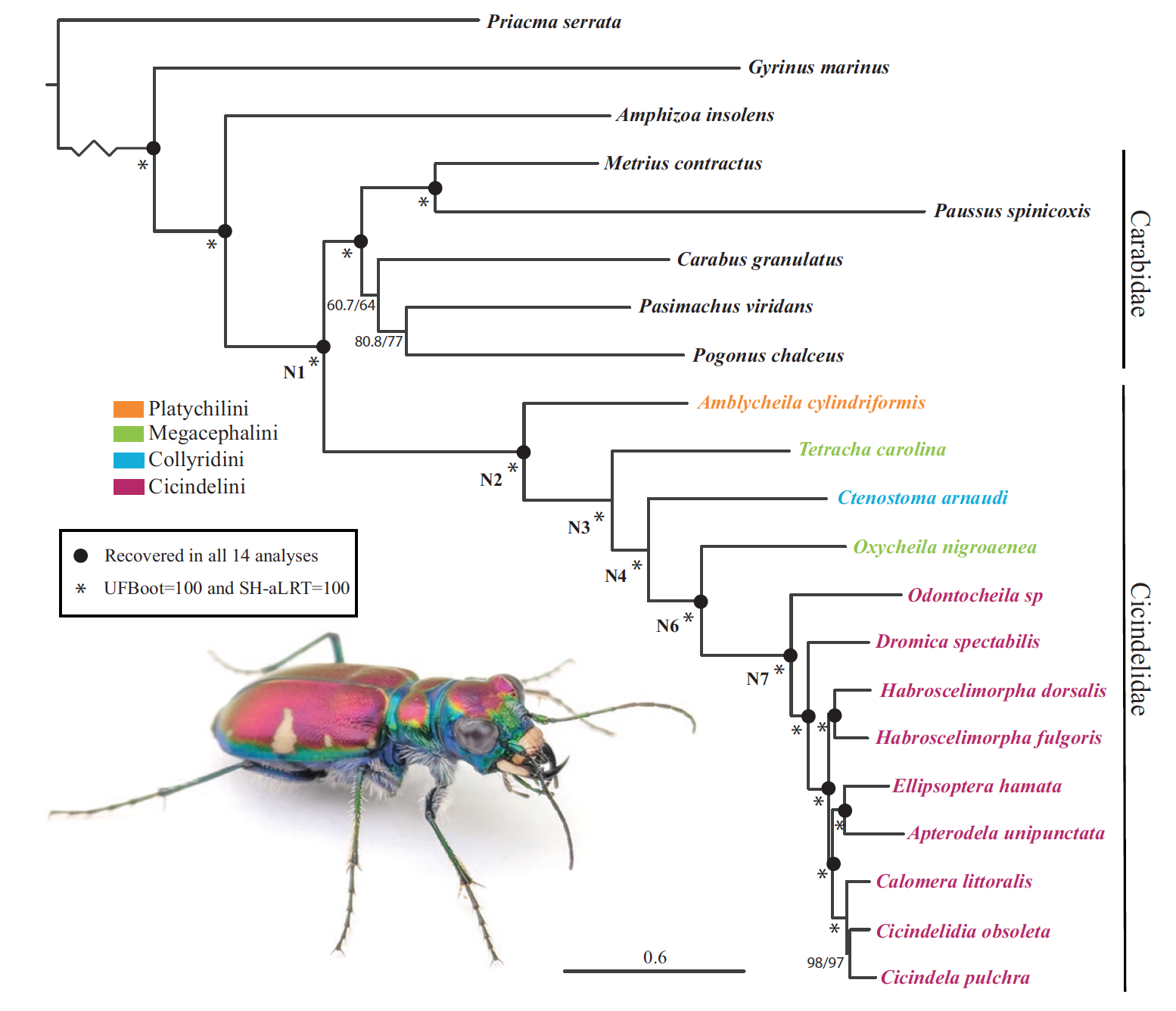
A new phylogenomic backbone for tiger beetles based on the analysis of new transcriptomes. (Gough et al. 2020 / Biol J Linn Soc)
- 11/2019 – We just published a study on preliminary of red-eye pigmentation in skippers and its possible evolutionary ties with diel activity. This study represents the first step toward a more in-depth investigation of the link between these biological patterns. Interestingly, we recover many independent isntancs of red-eye pigmentaitona cross the skipper tree of life and diel activity seems to be connected to this atonishing feature.

The species Matapa aria, an astonishing example of red-eye pigmentation investigated in this new paper. (Credit: Raju Kasambe)
- 10/2019 – The large 1KITE initiative on Lepidoptera phylogenomics was just released in PNAS. An incredible achievement with the inference of a stable fossil-based dated framework that wil serve as a reference for years to come. Amazing to see this collaborative piece get published knowing all the work required to analyze such a massive dataset. The study got some nice coverage in the press.
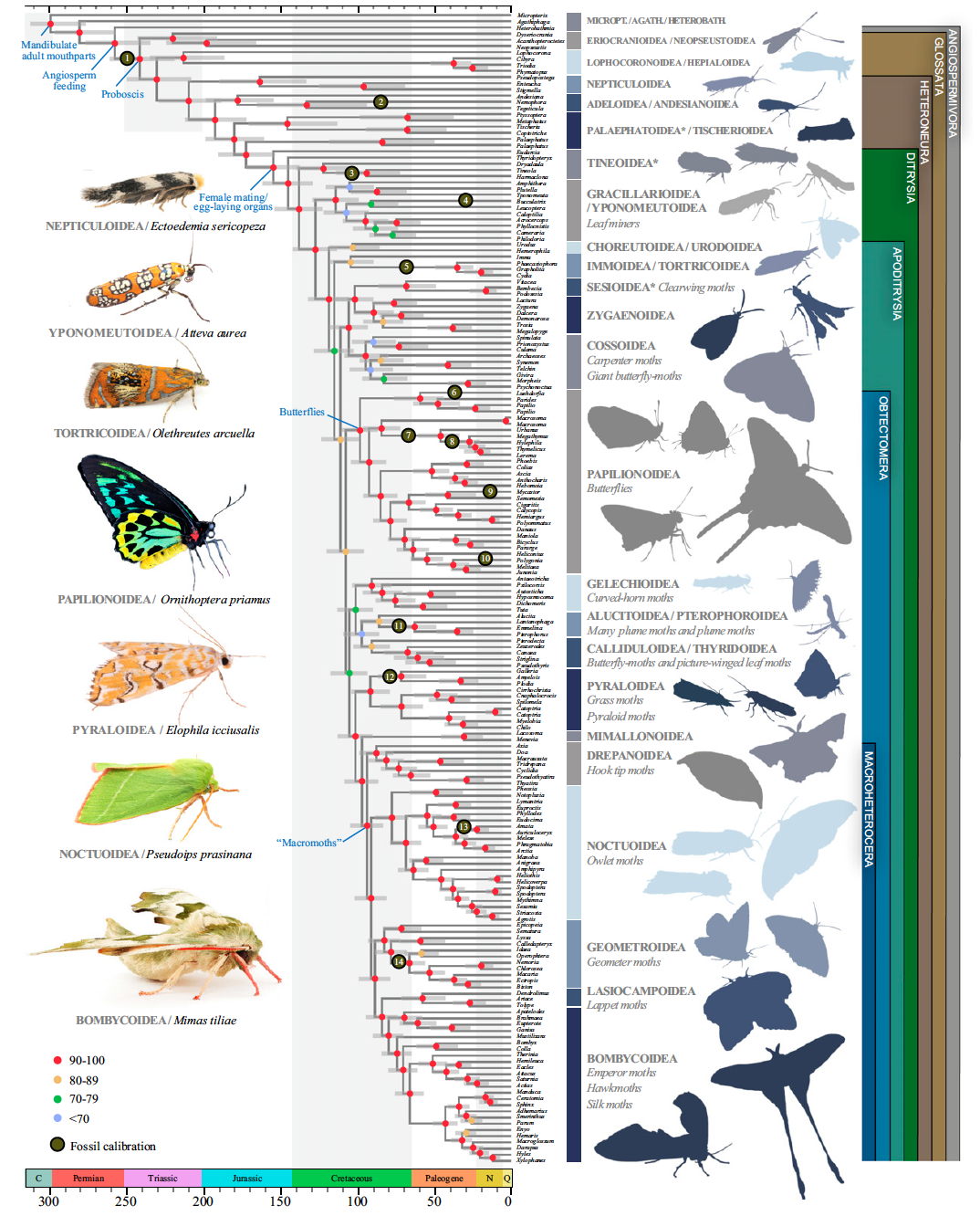
The new fossil-based dated phylogenomic framework for Lepidoptera based on an analysis of transcriptomic data. (Kawahara et al. 2019 / PNAS)

Press coverage in Le Dauphiné Libéré discussing the new important results of our study on Lepidoptera evolution.
- 10/2019 – Our new paper focusing on the systematics and biogeography of the water scavenger beetle genus Cymbiodyta is just out in the new ESA journal Insect Systematics and Diversity. We show that these beetles likely dispersed to colonize new continents rather than used land bridges that ephemerally appeared during the Cenozoic.

A photograph of Cymbiodyta marginella from Commanster, Belgian High Ardennes (Credit: James K. Lindsey)
- 06/2019 – Digitization of all Calosoma ground beetles and most of tiger beetles (Cicindelidae) is in the works thanks to our two volunteers! This project is completely new and represented the first digitization setup at the MHNG for insect collections. It includes a Canon 80D with an EFS-60mm macro lens setup on a Kaiser stand and with several LED lamps for lighting. All digitized specimens receive a unique MHNG label and are entered into our FileMaker database for archiving with a high-resolution habitus picture including a color chart and scale. We are already updating the system to improve some aspects, for instance the Canon 80D will be replaced by a Canon 90D, the Kaiser stand will be replaced by one with a motorized ramp for stacking and lighting will be replaced by flexible Kaiser LED vertical lamps. We are also crossing fingers to migrate our database to Specify next year.
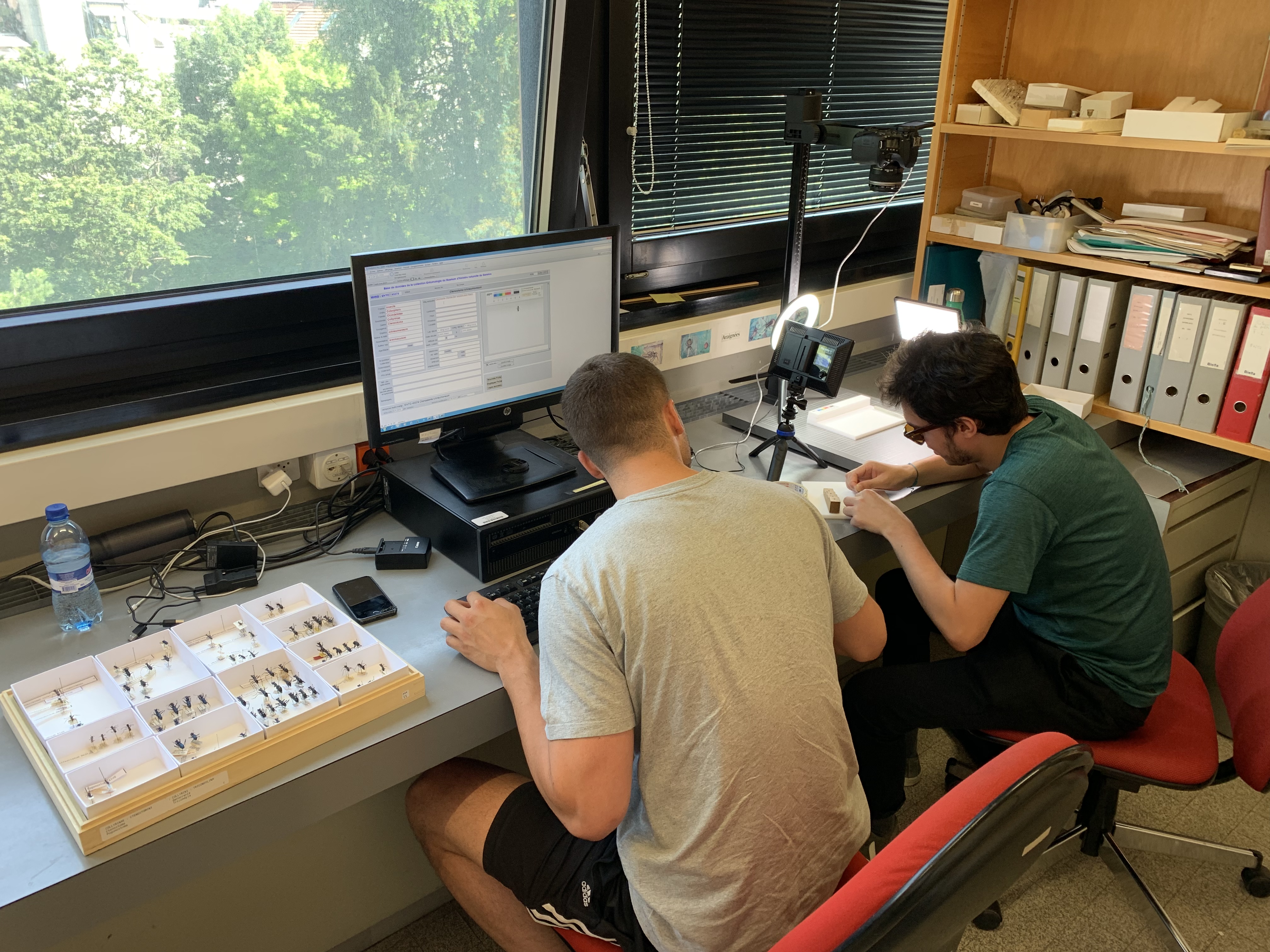
Completely new and first digitization setup at the MHNG for insect collections operated by two volunteers from the University (Credit: Emmanuel Toussaint)
- 06/2019 – Some fieldwork in Corsica helped to sample Calosoma sycophanta that was out in large numbers following the outbreak of Lymantria dispar across the island. This spectacular beetle is far from being common and except during years like this one is a very difficult beetle to see. Other beetles of interest were Calomera littoralis and the endemic Percus. No sign of the three Carabus species found in Corsica, despite intense efforts to find C. genei in the central montane areas.
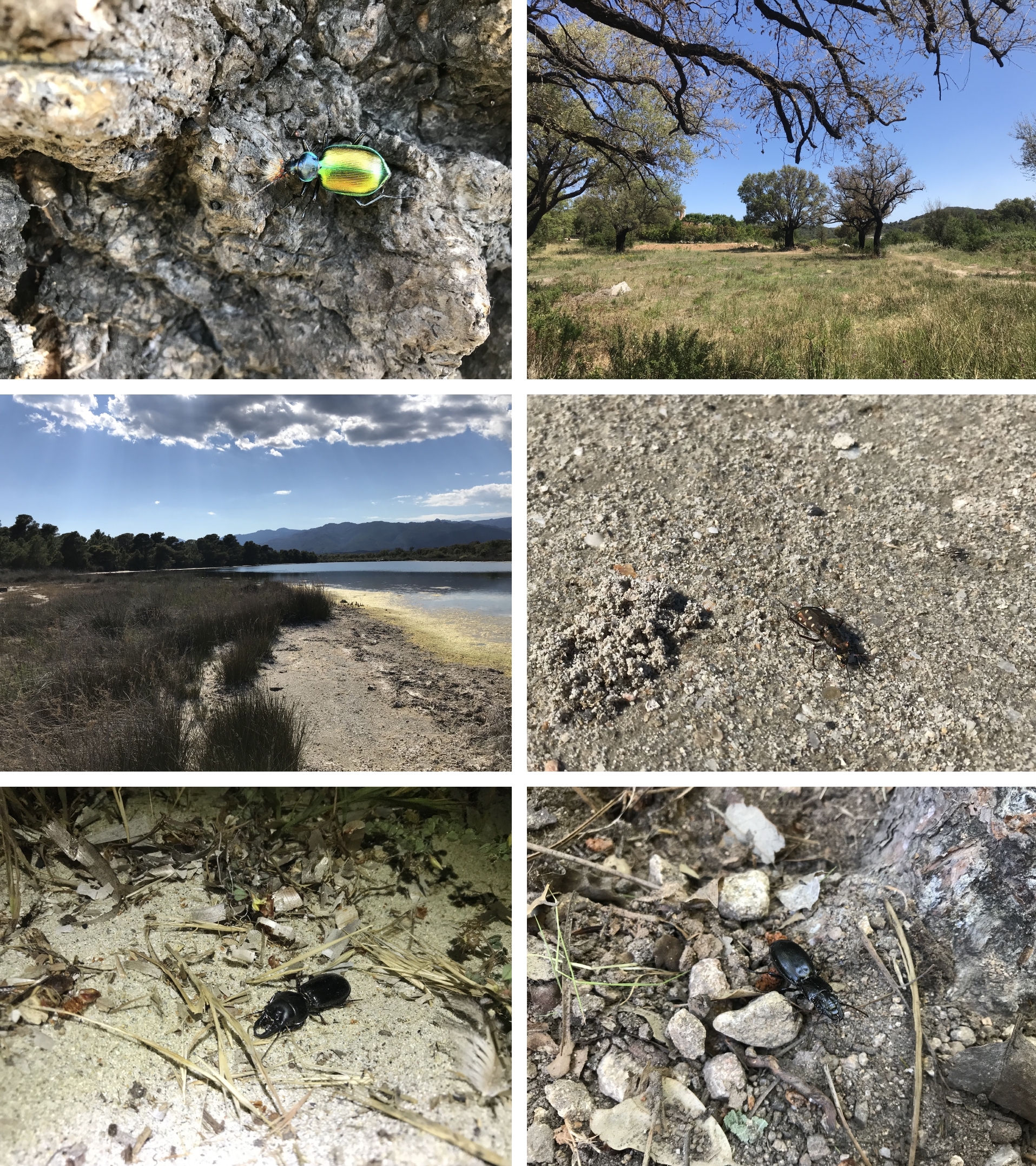
The caterpillar hunter beetle Calosoma sycophanta and its habitat (top row), the tiger beetle Calomera littoralis and its habitat, and two large ground beetles from Corisca, Scarites buparius and Percus grandicollis. (Credit: Emmanuel Toussaint)
- 05/2019 – An intensive fieldwork session in eastern Europe allowed us to observe many interesting species of Carabus including the rare and endangered semi-aquatic Carabus variolosus but also C. coriaceus, C. granulatus, C. glabratus, C. hortensis, C. intricatus, C. irregularis, C. nemoralis, C. scheidleri, C. ullrichi and C. violaceus.
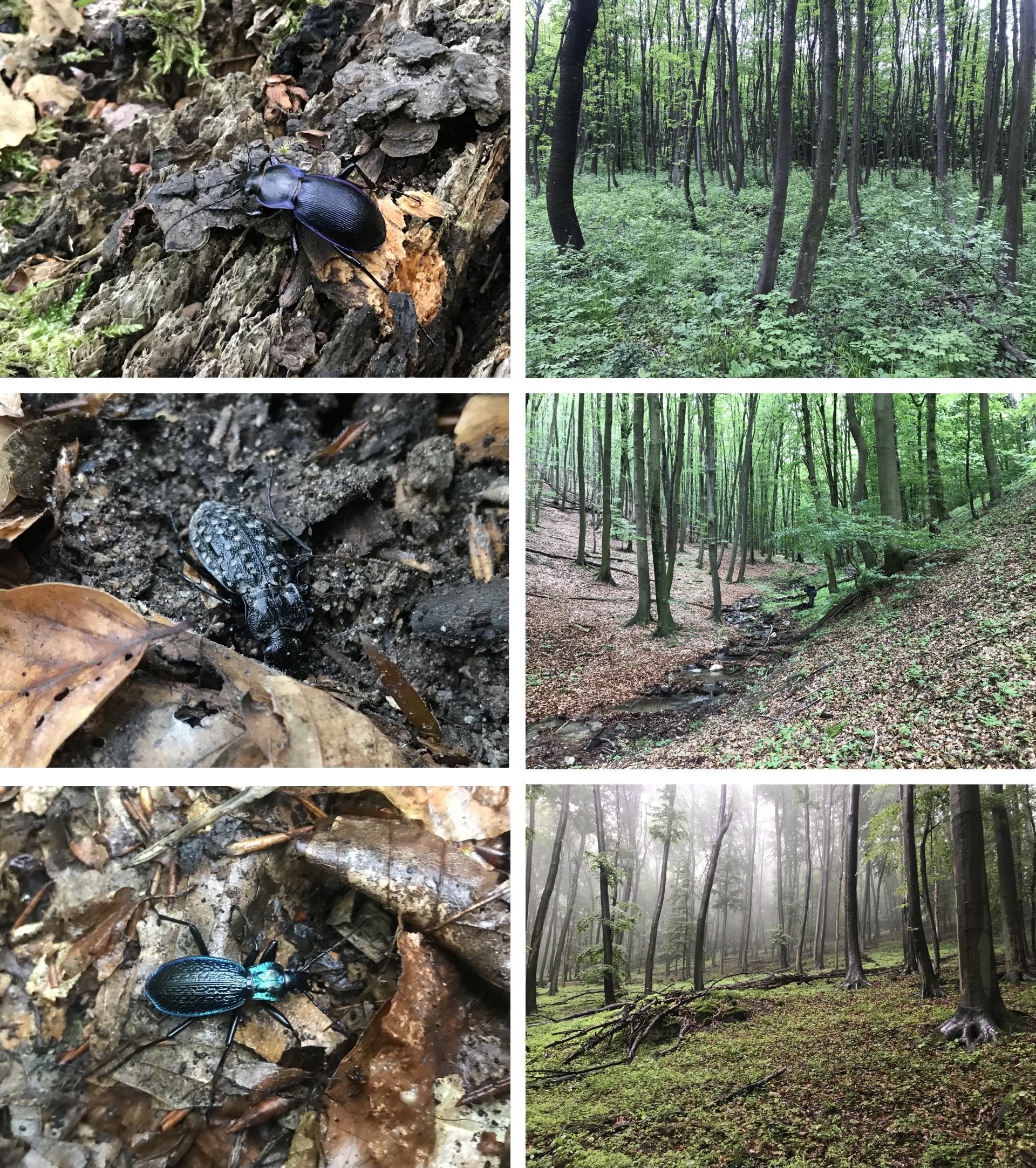
From top to bottom: Carabus scheidleri and its habitat, Carabus variolosus and its habitat, and Carabus intricatus and its habitat (Credit: Emmanuel Toussaint)
- 05/2019 – Our new paper on skipper phylogenomics is out in Systematic Entomology. We explore the compatibility of different hybrid enrichment kits with legacy data and using this new phylogenomic framework, we investigate the systematics and biogeography of the widespread tribe Baorini. We find surprising results with respect to the colonization of the Afrotropics in the Miocene. Find out by reading the paper available in the Publications page.

The skipper Iton semamora, a beautiful representative of the rather uniformly looking tribe Baorini (Credit: Antonio Giudici)
- 04/2019 – Our new paper on Anaeini butterflies is out in Molecular Phylogenetics and Evolution! This has been one of the most challenging studies for us going through many rounds of reviews. In the end the paper is a really interesting in depth study of this tribe, with particular focus on the historical biogeography of the group in the Neotropics and the role of host-plant shifts in its evolution. Have a look at the paper in the Publications page.

Memphis anassa, a stunning species belonging to the tribe Anaeini which was the focus of our latest study on the biogeography of Neotropical butterflies (credit: Andrew Neil)
- 04/2019 – Several collecting sessions in the Alps to sample specimens for an upcoming project on Carabinae systematics using HyRAD-X, a novel phylogenomic method developed in Geneva at the Museum. We were looking for multiple representatives of species groups in Calosoma, Carabus and Cycrhus, the three European genera of the subfamily. We did manage to find Carabus and Cychrus but it is apparently too early for Calosoma.

The splendid Carabus (Platycarabus) irregularis found in the Alps and in the Jura in France at mid elevation. Here near the Col de la Faucille in southern Jura mountain ranges (Credit: Emmanuel Toussaint)
- 03/2019 – I was interviewed in Leman Bleu TV to talk about local butterflies in the Geneva region. Despite a very cold and windy day, we did manage to see some of the most charismatic species of Central Europe, such as Vanessa atalanta or Polygonia c-album. You can watch the show in replay by clicking below:
- 02/2019 – Our paper on the remarkable convergent evolution of giant damselflies is in early view in Evolution. This study relied on morphological and molecular phylogenies to show that disjunct lineages of giant damselflies do not share a common ancestor but rather originated well after the break-up of Gondwana. They have evolved similar ecologies and behaviours including a stunning diet of orb-weaver spiders that they pluck from the webs using stationary flight. The result of our study have also found an echo in the press!
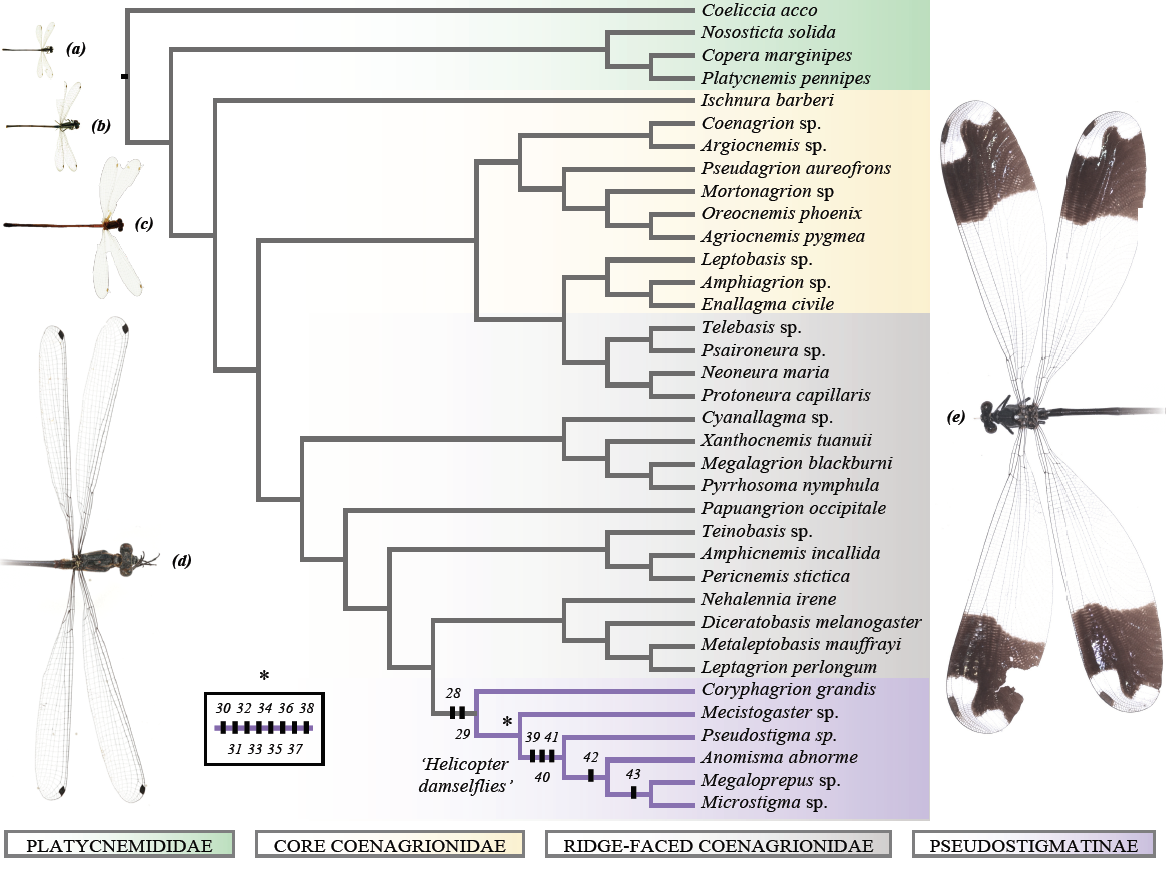
Phylogeny of Pseudostigmatinae inferred with maximum likelihood and 153 morphological characters. (Toussaint et al. 2019 / Evolution)

Press coverage in the Swiss journal La Tribune de Genève.
- 01/2019 – I officially started a new position as research officer and entomology curator at the Natural History Museum in Geneva, Switzerland. I will be working on various topics focusing on insect systematics and evolution. Stay tuned for opportunities to join this new lab in the future.

The Natural History Museum of Geneva, Switzerland.
- 12/2018 – Farewell to the Kawahara Lab in Gainesville, Florida. These have been 2 amazing years in contact with very dynamic and stimulating researchers and students. I will be back soon for collaborations and fun.
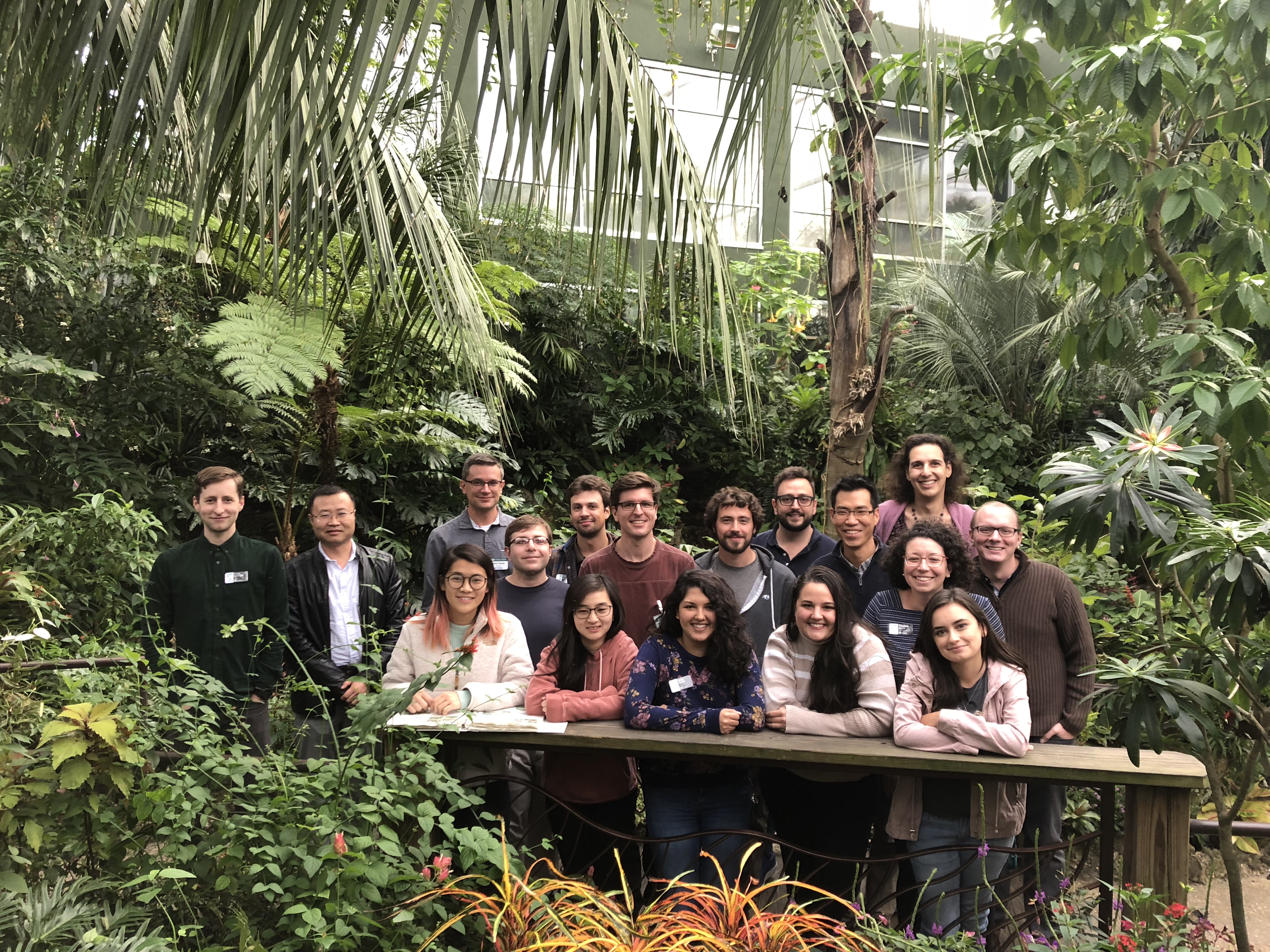
The Kawahara Lab Winter 2018 photograph session in the butterfly rainforest.
- 12/2018 – Marianna’s amazing paper on the taxonomy, systematics and morphological evolution of the tortoise beetle tribe Dorynotini just came out in the Zoological Journal of the Linnean Society. Using a multimarker dataset she shows that some morphological characters that have been traditionally used in this group are homoplastic.

Ancestral character state reconstruction of selective characters traditionally used to classify different genera of Dorynotini. (Simões et al. 2018 / Zool J Linn Soc)
- 11/ 2018 – Our study on the evolution of the Charaxes solon complex is just out in the Biological Journal of the Linnean Society. What was suspected for decades is supported by different lines of evidence. Specifically, each major biogeographical group is a valid species. We raise back to species status three subspecies: Charaxes echo from the Greater Sunda Islands, Charaxes hannibal from Wallacea and Charaxes lampedo from the Philippines. An interesting development not only for the taxonomy of the group but also for the biogeography of the genus as a whole since this is the third Charaxes lineage that colonized South East Asia from Africa.
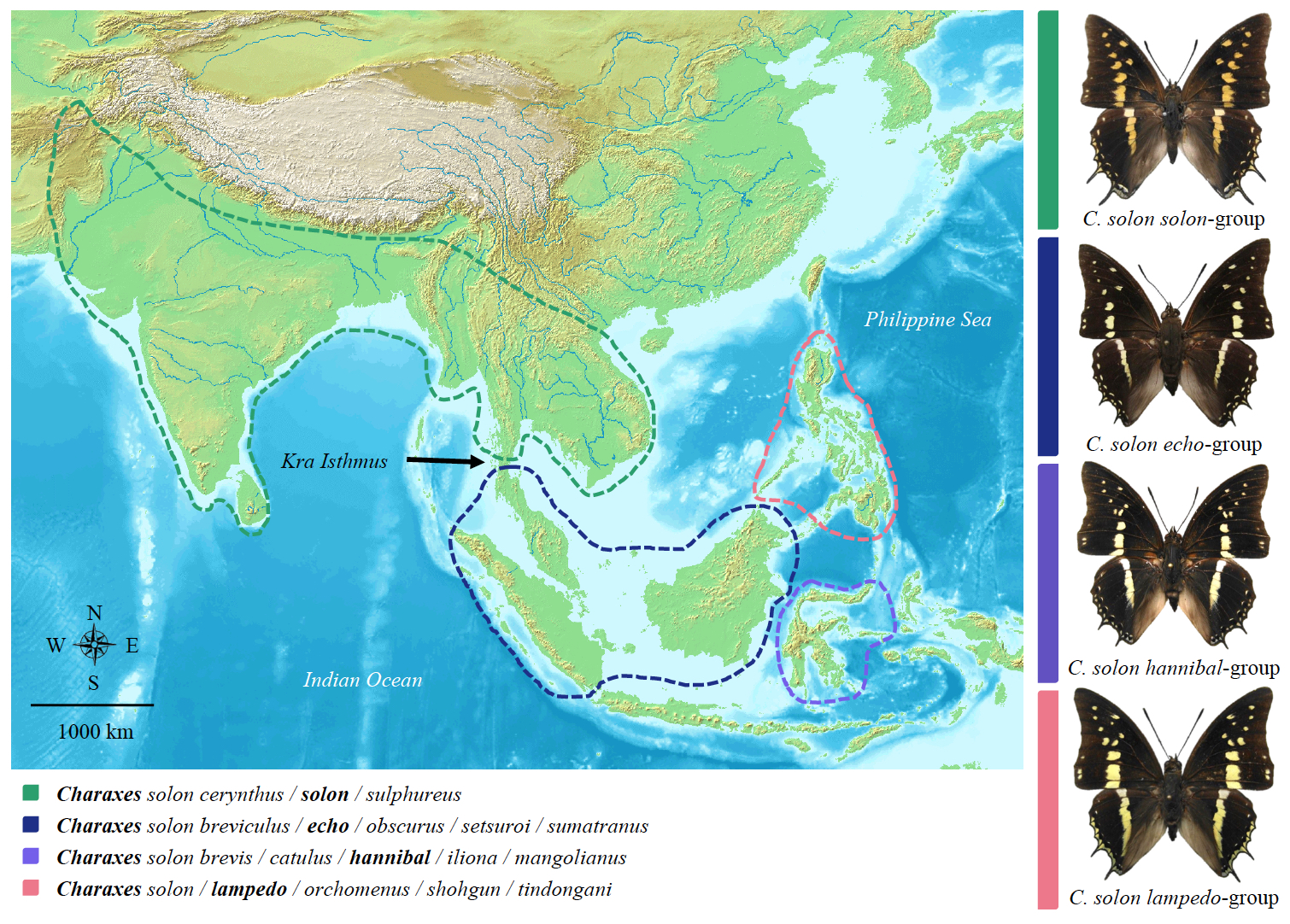
Topographic map presenting the geographical ranges of the different morphological groups within Charaxes solon. (Toussaint et al. 2018 / Biol J Linn Soc)
- 09/2018 – Multiple small fieldwork sessions in Normandy and the Alps in France to look for tiger beetles and other ground beetles but also to check historical collections. In particular, we had the chance to be warmly welcomed by Frédéric Durand and François Fournier of the Société d’Histoire Naturelle Alcide-d’Orbigny in Aubière near Clermont-Ferrand (SHNAO). They were kind enough to accept our request to visit Roger Naviaux’s tiger beetle collection under very short notice. This is a remarkable collection in terms of curation, type and specimen numbers.
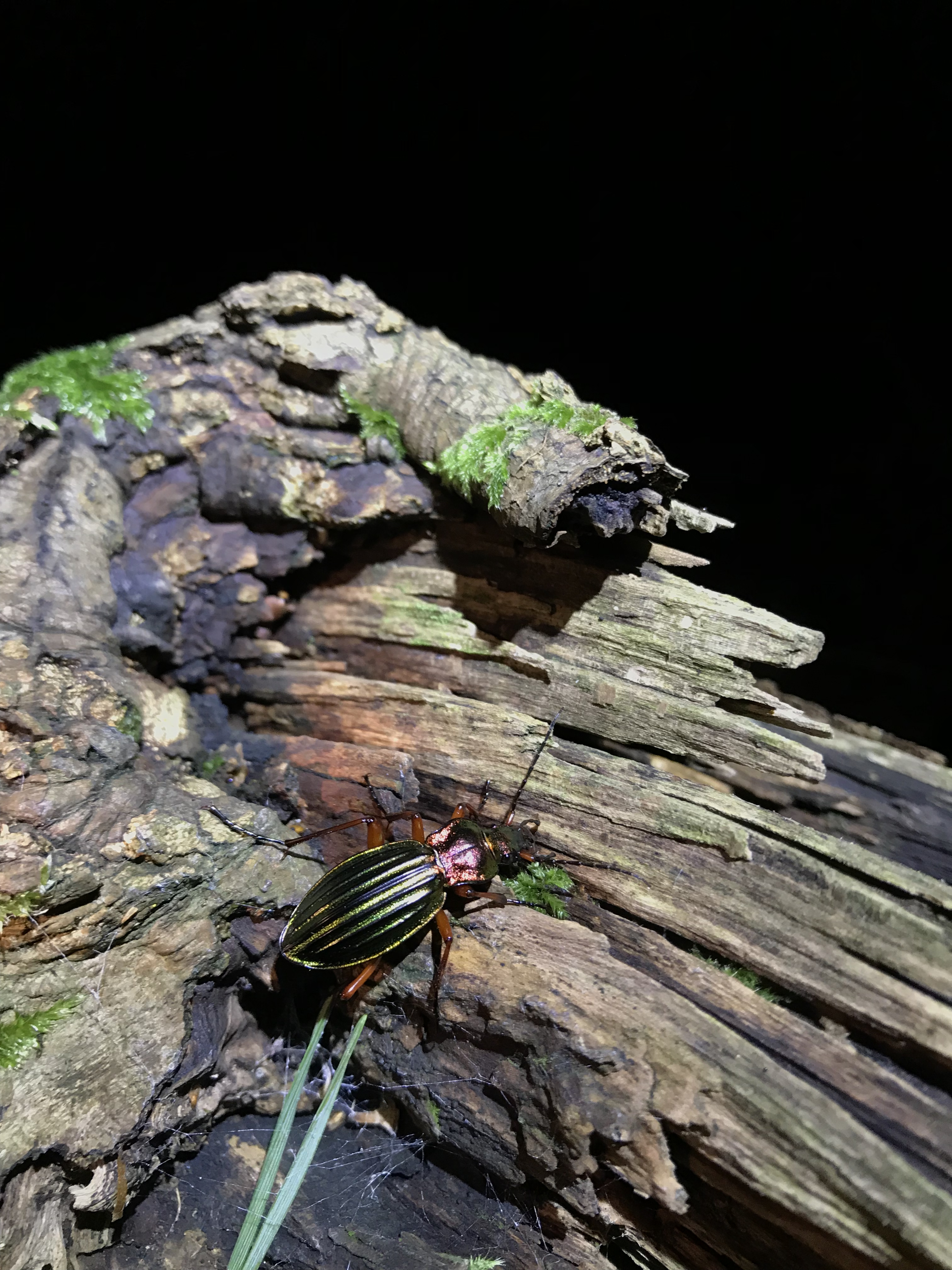
Carabus auronitens, a real beauty from the Forêt d’Ecouves in Normandy. (Credit: Emmanuel Toussaint)
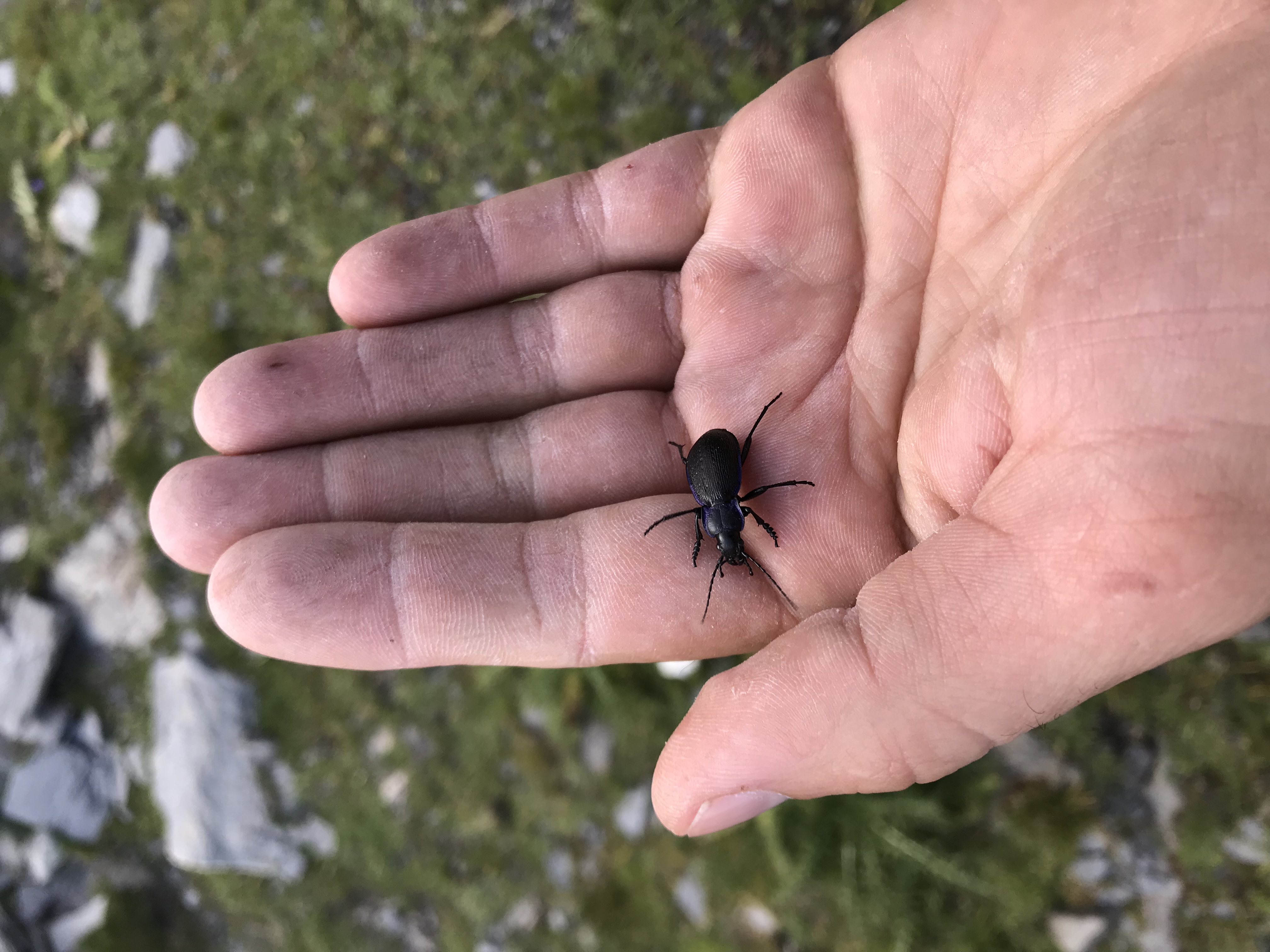
Carabus problematicus at the Col du Petit St Bernard close to Italy and up in the mountains (Credit: Emmanuel Toussaint)

Roger Naviaux’s gorgeous tiger beetle collection that is looked after by fantastic people of the Société d’Histoire Naturelle Alcide-d’Orbigny in Aubière near Clermont-Ferrand (Credit: Emmanuel Toussaint)
- 09/2018 – Harlan Gough’s paper on the phylogeny of tiger beetles is finally out in Systematic Entomology! It took us an enormous amount of time to gather all the molecular data that has been generated for decades by various research teams in the world. The tree will be useful to many people working on this group by providing a first large-scale phylogenetic framework for tiger beetles.

Phylogenetic hypothesis for the placement of tiger beetles within Carabidae. (Gough et al. 2018 / Syst Entomol)
- 09/2018 – Athena Lam who was finishing her PhD with Michael Balke in Munich just published a really nice study in Molecular Ecology. She was looking at fine-scale phylogeographic structure in New Guinean water beetles. Our results support the idea that ecology has an important impact on the evolution of lineages but the story is more complicated than we though as is often the case with these beetles! Here are the original drawings of Philaccolilus species from Michael’s 2000 paper on the genus:

The diversity of habitus and coloration across the New Guinean diving beetle genus Philaccolilus (Balke 2000 / Mitt Mus Nat kd Berl Dtsch Entomol Z)
- 08/2018 – Chris Johns from the Kawahara Lab just published the biggest study of his PhD before graduating! A beautiful paper published in Proceedings B on the biogeography and host-plant diet evolution in the charismatic Hawaiian Philodoria micro-moths. We look at divergence times in detail and suggest that this group of moths is one of the oldest lineages to have colonized ancient Hawaiian islands that are now submerged in the middle of the Pacific Ocean.

Philodoria auromagnifica from Hawaii. (Credit: Chris Johns)
- 08/2018 – Darcy Herlihy, a science writing intern at UF made a really nice story on my work that is available on UF News. Here is the link: Building a bug’s life or click on this image:
- 07/2018 – Our report on the conservation status of the rare Marquesan snout butterfly was just published in the Proceedings of the Hawaiian Entomological Society. Unfortunately we could not find this beautiful butterfly but all hope is not lost, we are thinking of going back to the Marquesas in August next year to check again on Nuku Hiva and Ua Pou.
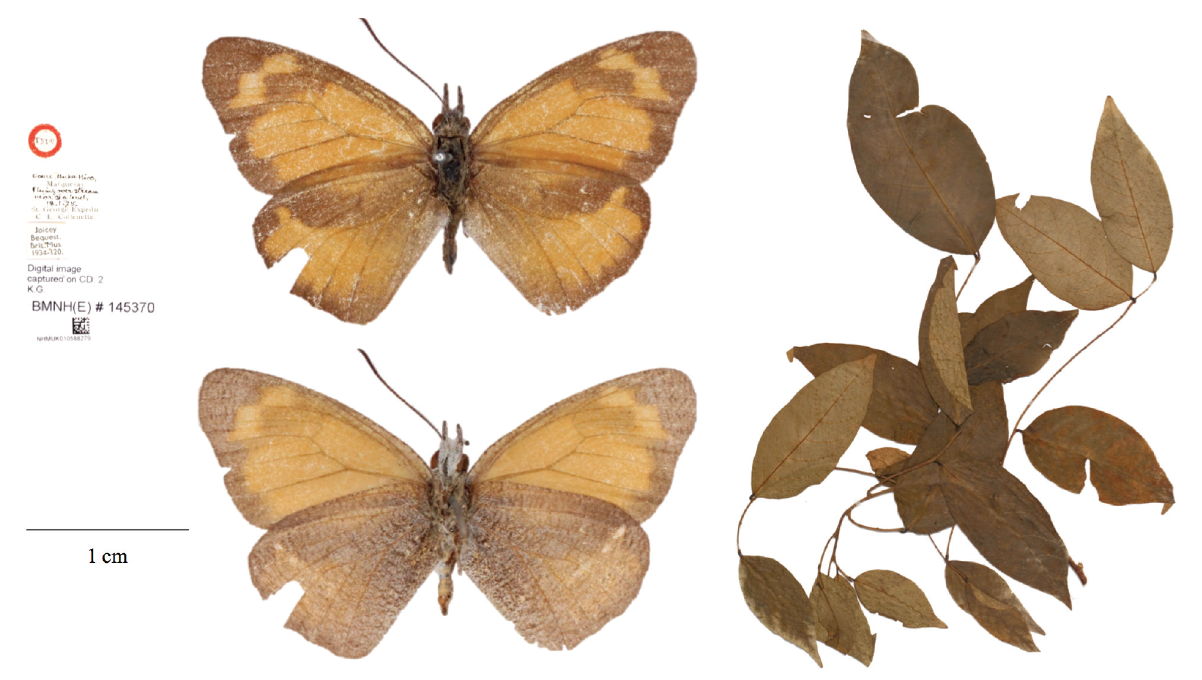
Habitus of the Marquesan snout butterfly, Libythea collenettei, known as “Papillon à museau des Marquises” and its putative host plant, Celtis pacifica. (Kawahara & Toussaint 2018 / Proc Entomol Soc Hawaii)
- 06/2018 – The first part of our large skipper project has just been published in BMC Evolutionary Biology. It is a new phylogenomic tree for skippers using anchored hybrid enrichment. Our results provide a robust tree for skippers and lay the foundation for upcoming projects on these amazing butterflies.

Phylogenomic skipper tree of life using target exon capture phylogenomics. (Toussaint et al. 2018 / BMC Evol Biol)
- 06/2018 – The 8th International Conference on the Biology of Butterflies was a fantastic chance to catch up with colleagues and friends, but also to see some Indian butterflies in the Western Ghats. Thanks to Krushnamegh and Ulassa for organizing such a great gathering.
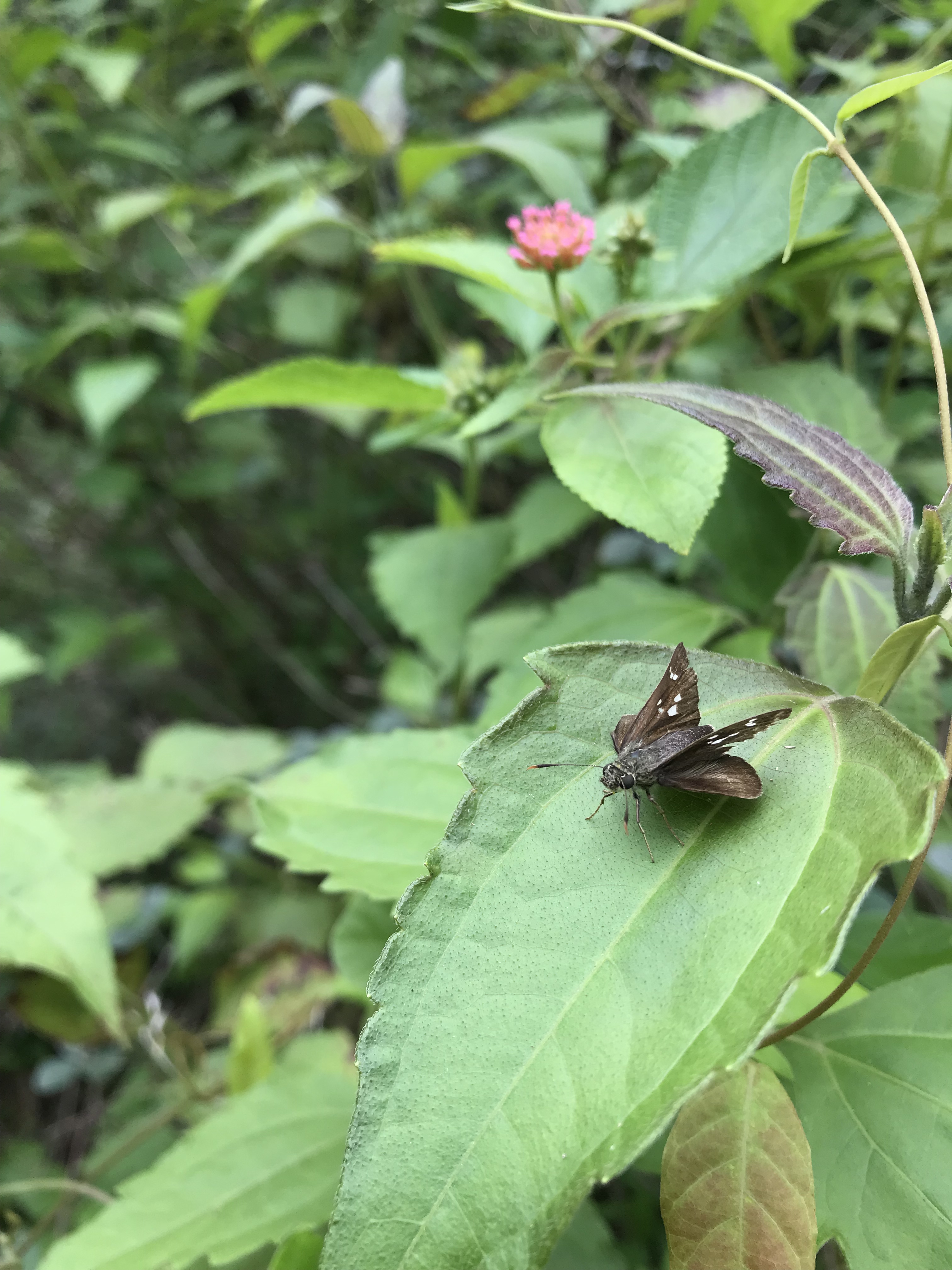
Halpe porus, a member of the distinctive tribe Aeromachini (Credit: Emmanuel Toussaint)

Coladenia indrani, a beautiful pyrgine skipper observed along the trail (Credit: Emmanuel Toussaint)

A view of Bannerghatta National Park south of Bangalore (Credit: Emmanuel Toussaint)
- 05/2018 – Our latest paper on water scavenger beetles just came out in Molecular Phylogenetics and Evolution. A comprehensive methodological (to some degree) study of Oocyclus historical biogeography. This genus comprises extremely cool water beetles that have a fairly modified morphology that allows them to cope with extreme habitats such as waterfalls and rock seepages. Their current distribution is puzzling as some species are found in India, others in Southeast Asia and the rest in the Neotropics. Our study suggests a rather unusual biogeographical pattern possibly obscured by extinction. Read more about it in the Publications page.

Dorsal picture of Oocyclus sapphirus from Coastal Mountains in Venezuela (Credit: Andrew Short)
- 04/2018 – Back from a two-week expedition in French Guiana looking for butterflies, beetles and moths. We stayed at the Nouragues CNRS station in the heart of the Amazonian rainforest where we sampled along trails and in the canopy. Many interesting species of skippers, satyrines and tiger beetles among other insects collected during this trip.
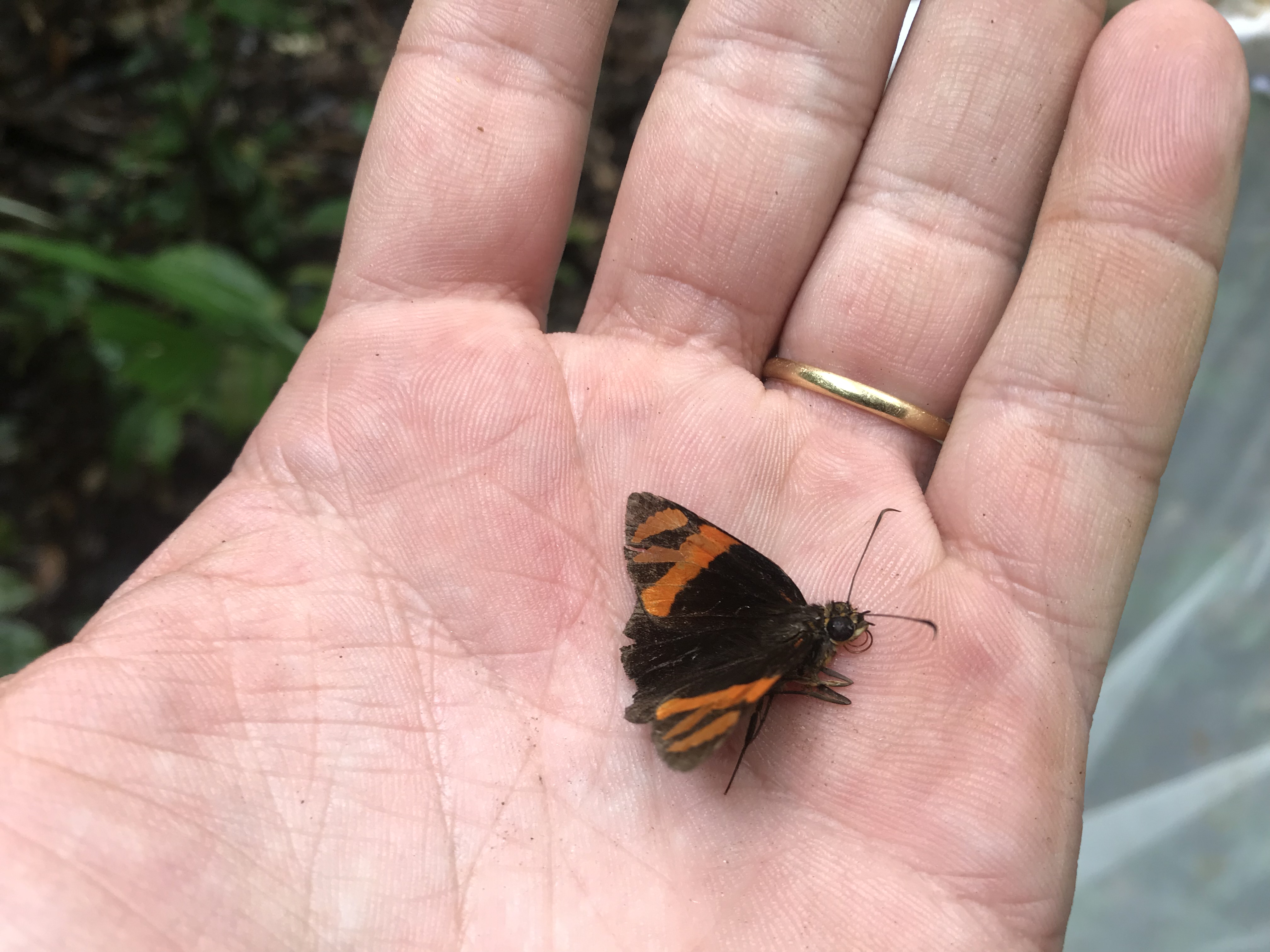
A really nice male skipper collected during this trip, a species of the Neotropical genus Entheus that presents a strong sexual dimorphism (Credit: Emmanuel Toussaint)

Baits made of paper and saliva can be efficient to attract and catch skippers (Credit: Emmanuel Toussaint)

A quick picture before a few hours in the rainforest to look for Leps (Credit: Emmanuel Toussaint)

The fabulous Hypna clytemnestra, the sister lineage to all other Anaeini leafwing butterflies (upcoming study), as difficult to catch with a net as any Charaxinae (Credit: Emmanuel Toussaint)
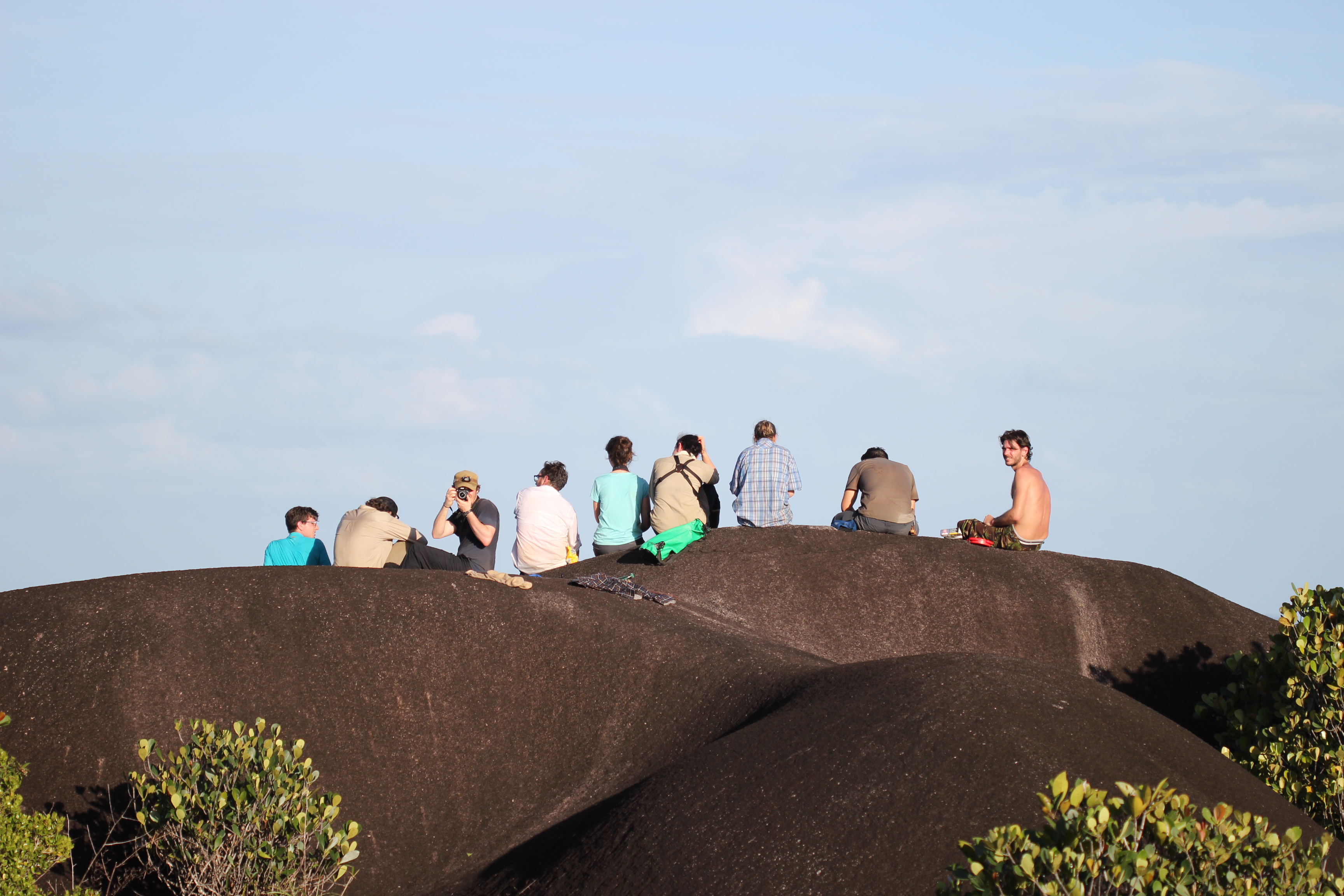
The entire team and friends on the top of the rock outcrops above the CNRS Inselberg station a couple of hours of rainforest hiking from Pararé (Credit: Emmanuel Toussaint)
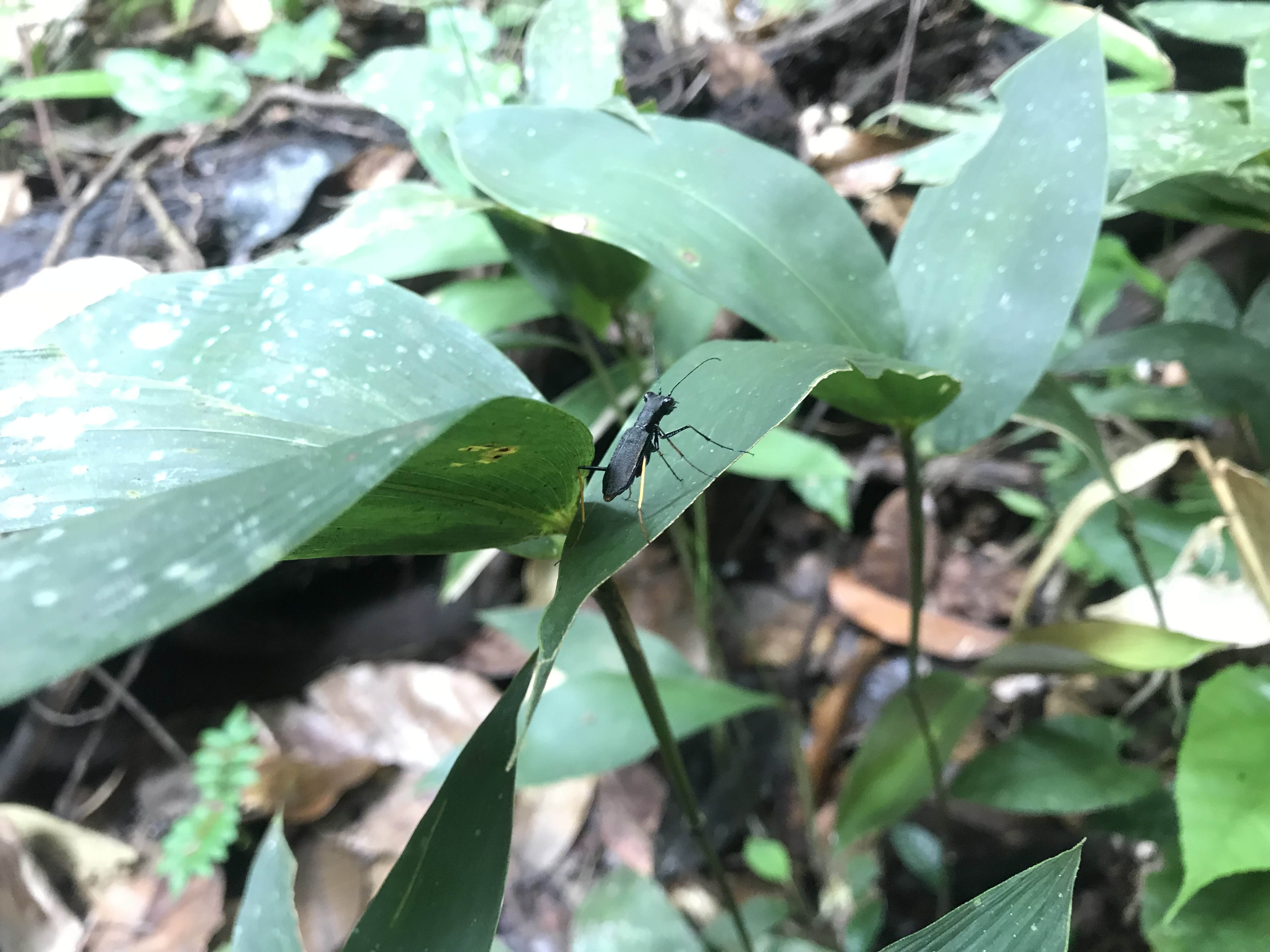
The fairly common tiger beetle species Odontocheila cayennensis flying from the trail to lower vegetation to hide (Credit: Emmanuel Toussaint)

A stunning Prepona that came down from the canopy. This genus belongs to Charaxinae (Credit: Emmanuel Toussaint)

CNRS forest towers, our way to get to the canopy and light trap moths during the trip (Credit: Emmanuel Toussaint)
- 02/2018 – Just back from a long expedition across the Marquesas islands in French Polynesia. We were looking for the rare endemic butterfly Libythea collenettei (Marquesan snout butterfly or Papillon à museau des Marquises in French). Only five specimens have ever been collected to date, and the most recent sightings on Nuku Hiva and Ua Pou date back from 2001. Unfortunately we could not find this species. The disruption of natural habitats might be a reason for its possible extinction.
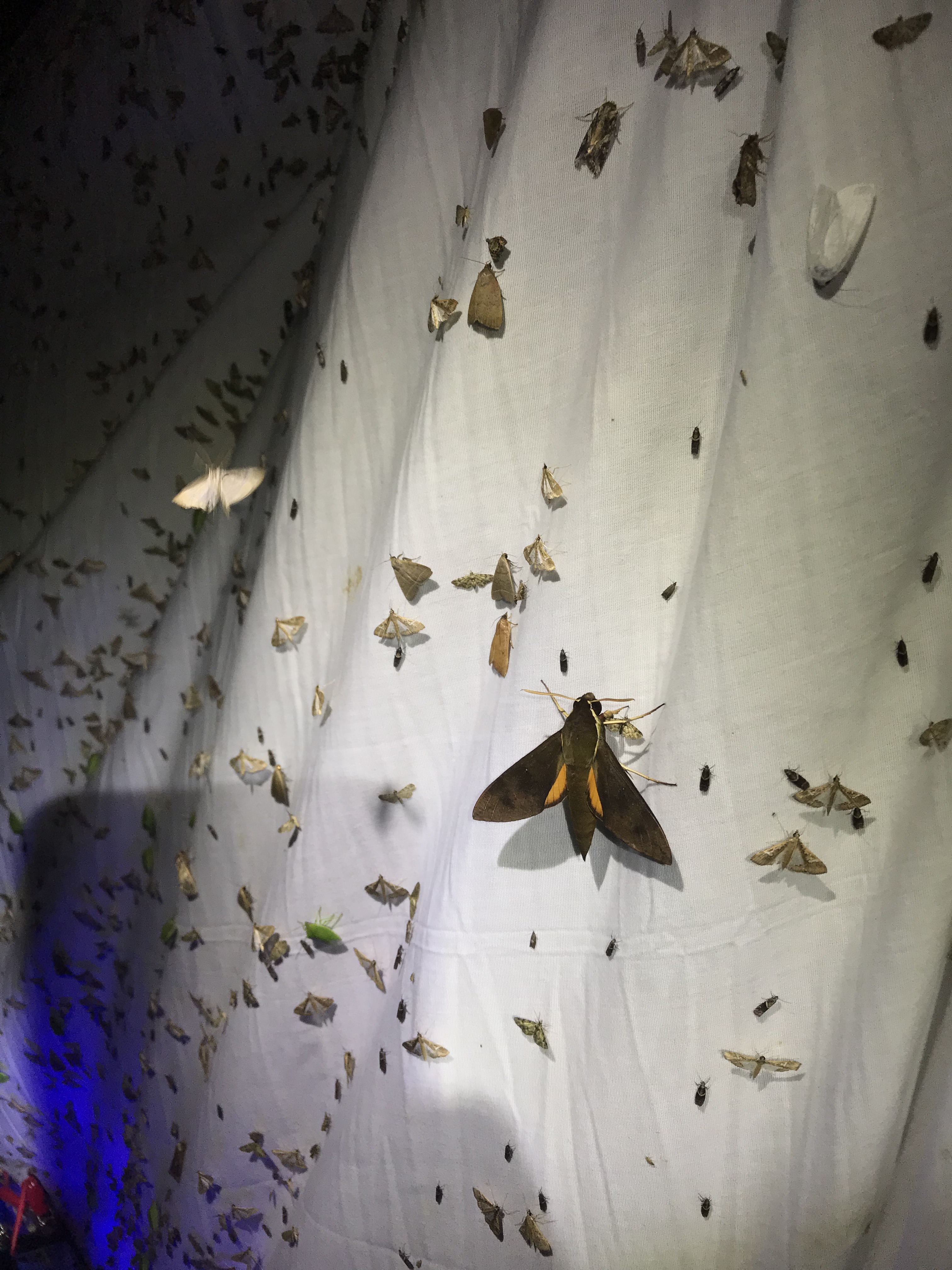
The diversity of moths is fantastic in the Marquesas, there are several endemic radiations on different islands. (Credit: Emmanuel Toussaint)

Likewise, there are endemic lineages of Marquesan weevils like on Mt Temetiu, in Hiva Oa. (Credit: Emmanuel Toussaint)

The habitat where the Marquesan snout butterfly was last seen in 2001, in front of Pouhekaei, and in one of the highest places on Ua Pou. (Credit: Emmanuel Toussaint)
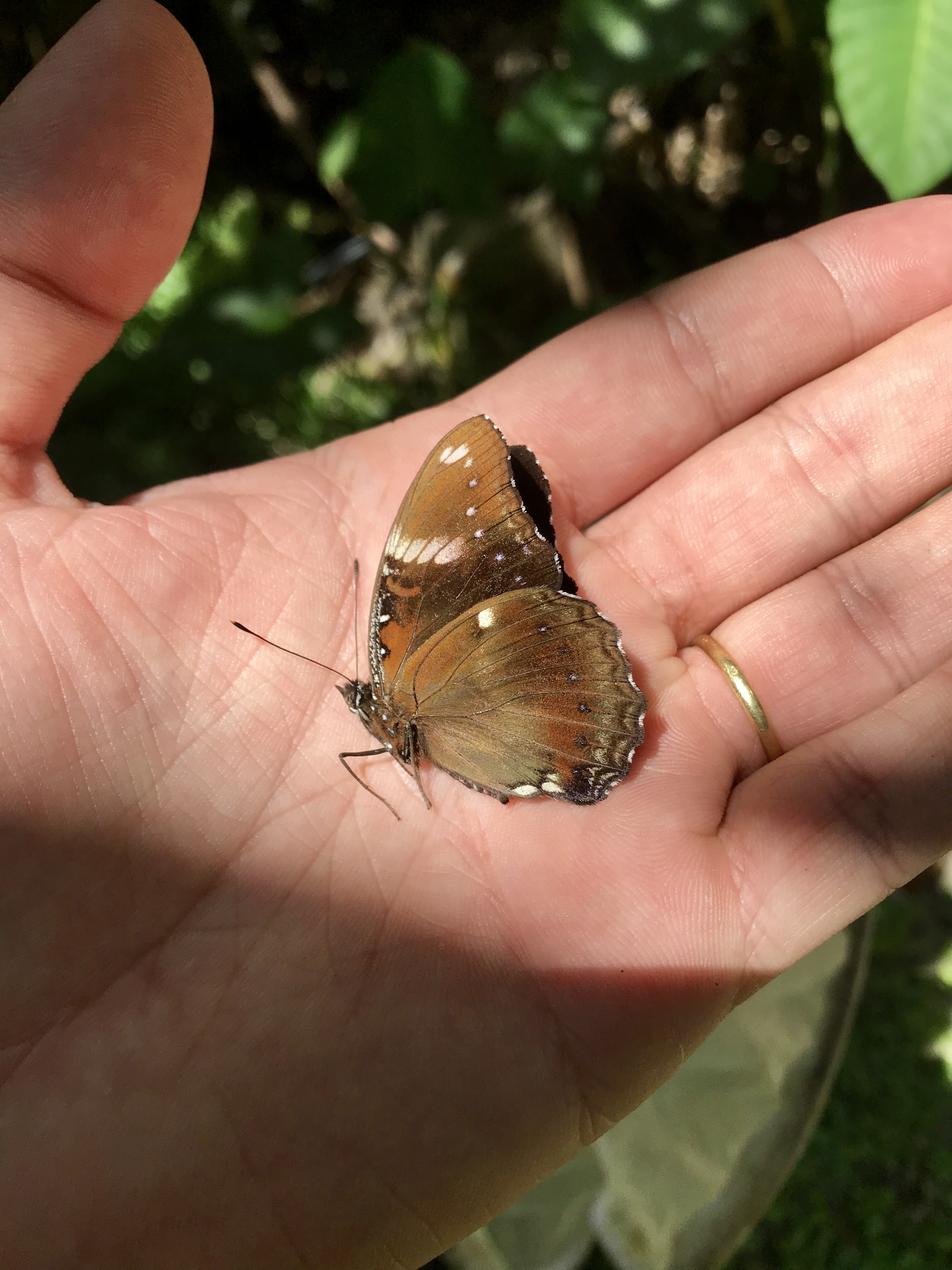
Hypolimnas bolina otaheitae, a subspecies endemic to French Polynesia (here in a valley in Ua Pou). (Credit: Emmanuel Toussaint)
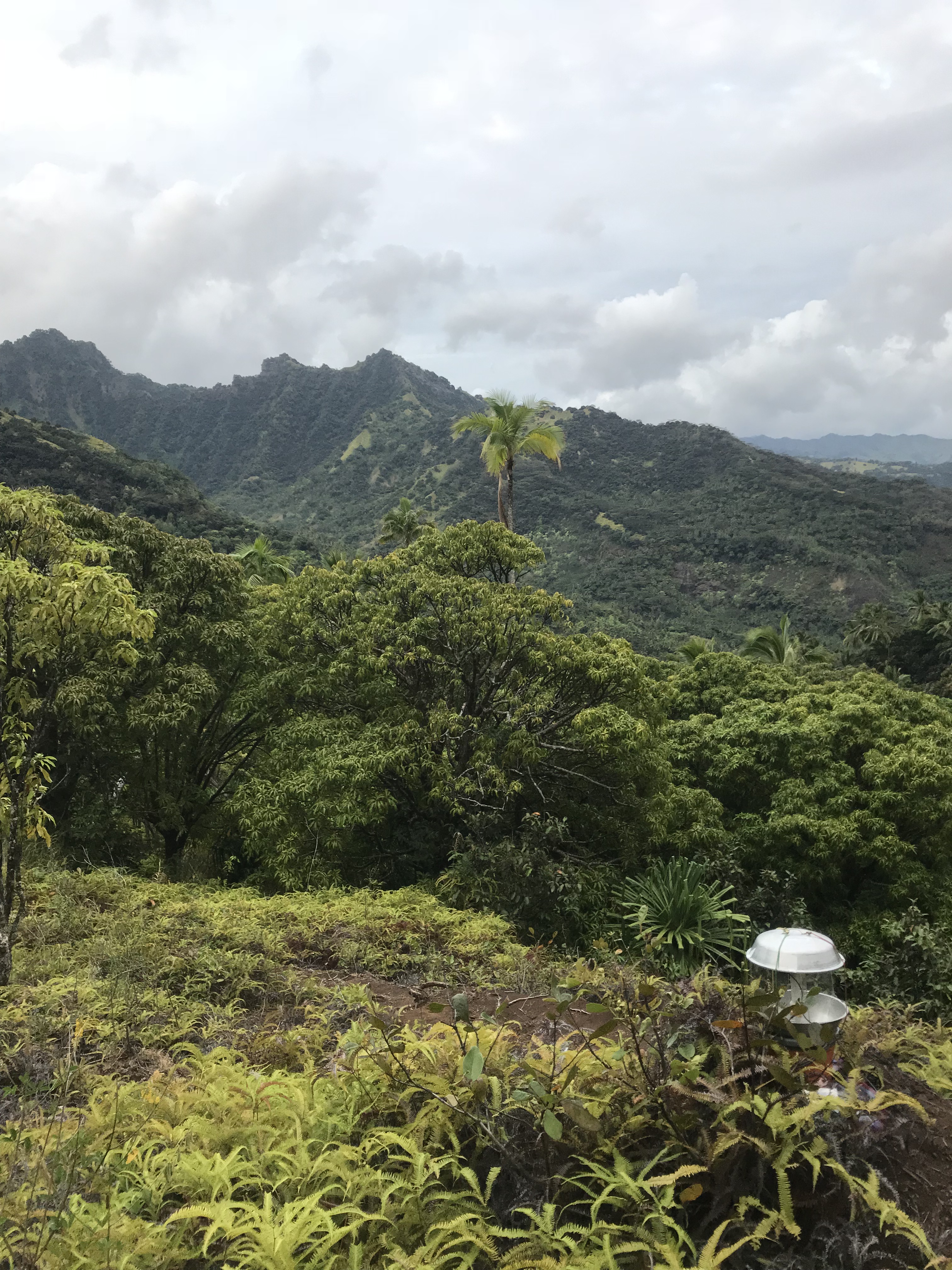
Higher altitude bucket trap setup in Mt Temetiu on the island of Hiva Oa to sample moth biodiversity. (Credit: Emmanuel Toussaint)

Some endemic damselflies and dragonflies can be found along rivers and near waterfalls (Waterfall near Hakahetau, Ua Pou). (Credit: Emmanuel Toussaint)
- 02/2018 – Our paper presenting a new dated phylogeny of butterflies based on target exon capture has been published. It provides strong phylogenetic relationships for the first time in many parts of the tree and supports an origin of butterflies in the Cretaceous about 120 million year ago!
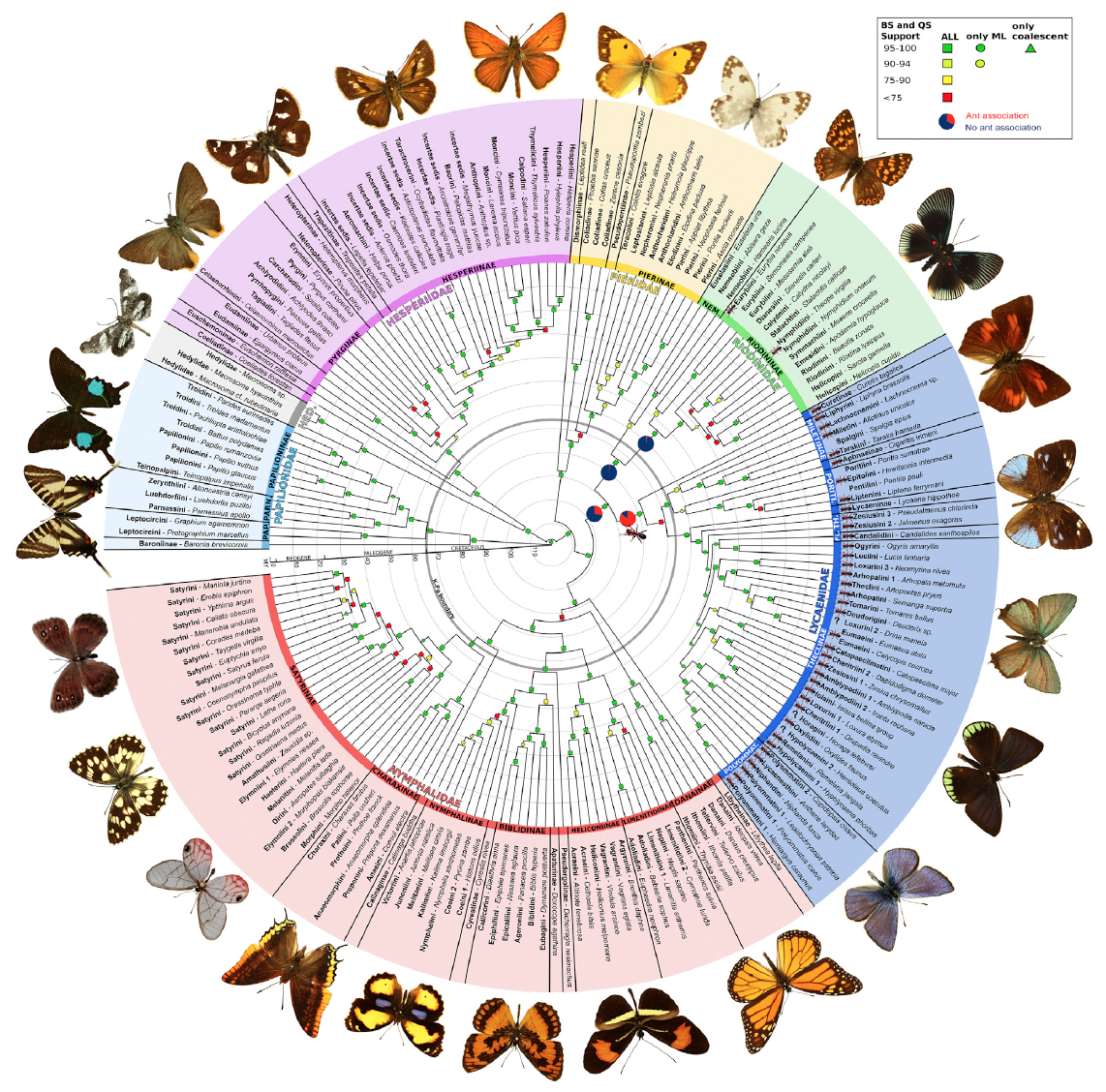
Dated phylogeny of butterflies based on anchored phylogenomics (> 400 loci). (Espeland et al. 2018 / Curr Biol)
- 11/2017 – Our paper on the molecular phylogeny of caterpillar hunter beetles (Carabinae, Calosoma) was just published in the Biological Journal of the Linnean Society. We also provide a new view on the evolution of the subfamily Carabinae with a potential older origin of the clade in the Jurassic.

Calosoma sycophanta in a forest south of France (Hérault) (Credit: Bernard Dupont)
- 10/2017 – A successful field trip in the Sierra Gorda Biosphere Reserve north of Mexico City with Milan Janda, Michael Branstetter and Rubi Itzel, looking for ants, bees and of course skippers and beetles:

The gorgeous skipper Astraptes alardus collected in a dense forest of Querétaro, Mexico. (Credit: Emmanuel Toussaint)

Beautiful river with lots of skippers from the subfamily Pyrginae and brush-footed butterflies. (Credit: Emmanuel Toussaint)
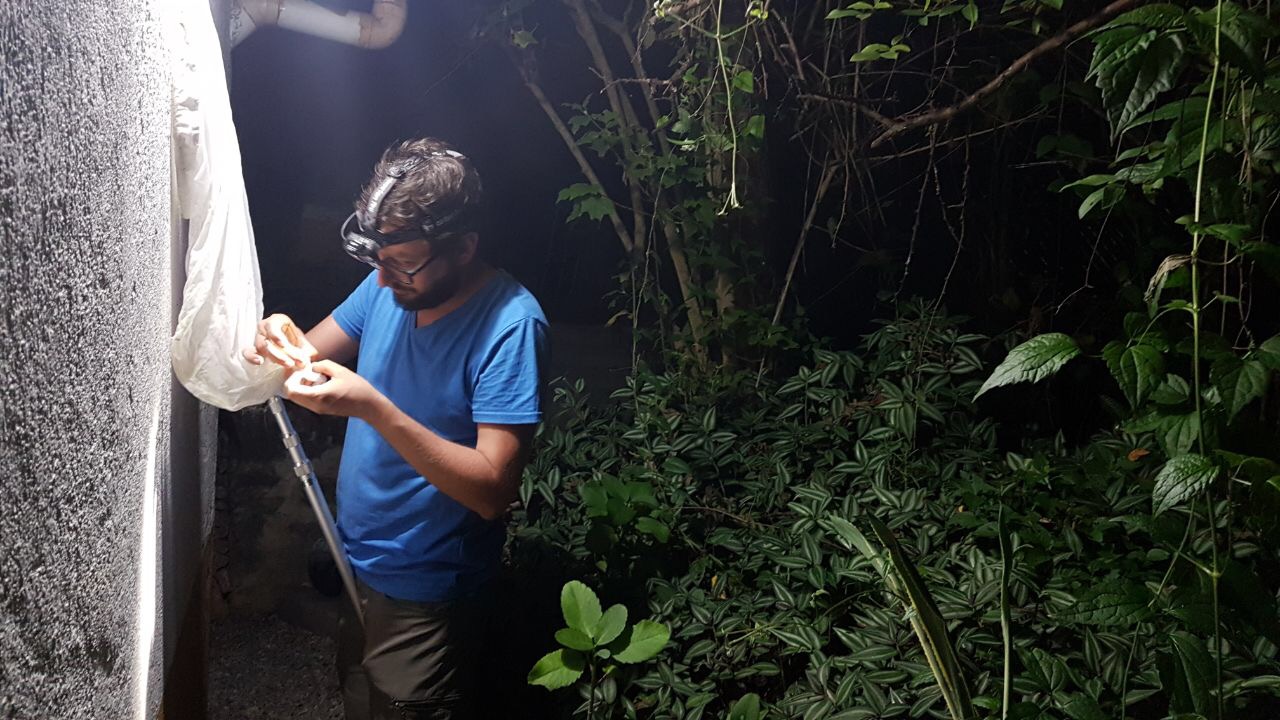
Collecting beetles at the light of our cabañas in Querétaro, Mexico. (Credit: Emmanuel Toussaint)

Our little team near a waterfall in lowland Querétaro, Mexico. (Credit: Emmanuel Toussaint)

Good alpine habitat with some nice skippers like Piruna and nymphalids. (Credit: Emmanuel Toussaint)
- 10/2017 – I was invited by Milan Janda at LANASE (www.lanase.unam.mx) to give a seminar during the conference Frontiers in Insect Genomics in Morelia, Mexico. You can find the recorded talks of all participants here.

Poster of the conference Frontiers in Insect Genomics in Morelia, Mexico.
- 09/2017 – Our paper on the rediscovery and phylogenetic placement of the rare Ricksecker’s water scavenger beetle Hydrochara rickseckeri is out, check it out in the Publications page.
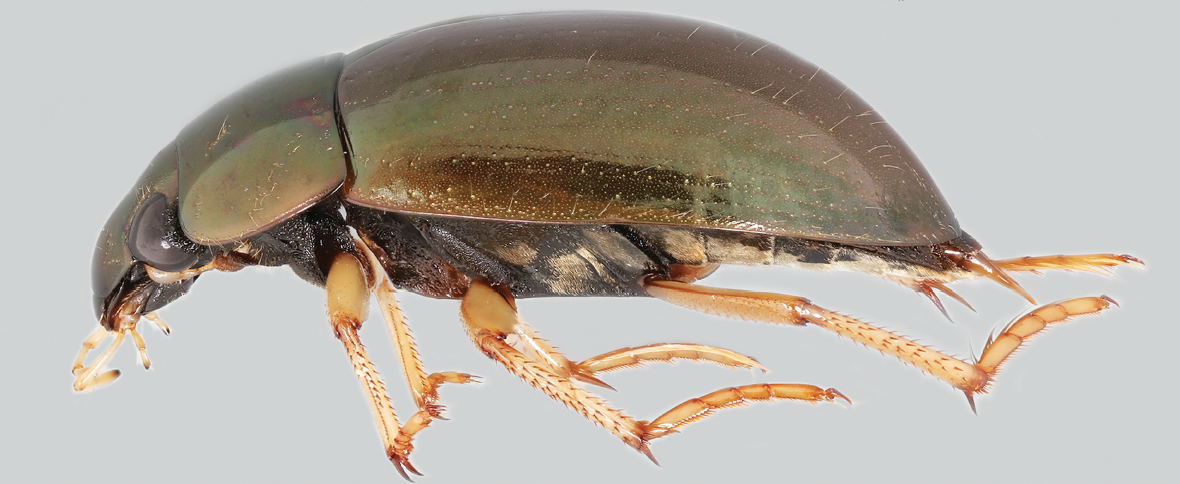
The rare water beetle Hydrochara rickseckeri (Hydrophilidae) (Credit: Andrew Short)
- 08/2017 – Excellent fieldwork session with a reduced team of the Kawahara lab and amazing local scientists in Veracruz near Zongolica and in Las Tuxtlas research station looking for skippers, moths and beetles. The collecting was as good as the food:

Memphis proserpina (Charaxiane) collected at 1600m in the mountains above Zongolica, Mexico. (Credit: Emmanuel Toussaint)
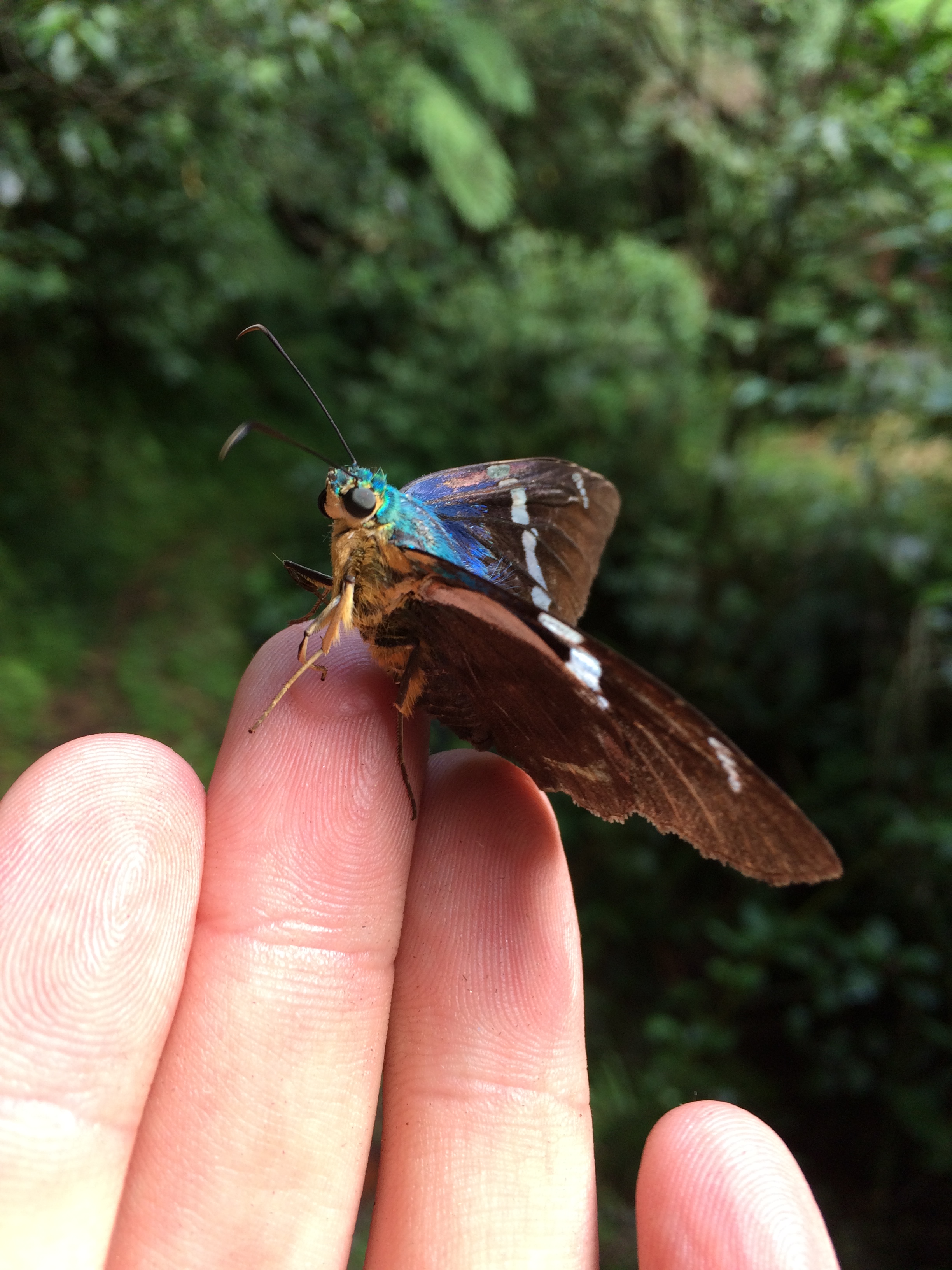
The infamous Astraptes fulgerator (Eudaminae), a (very) fast-flying gem from the forest in Mexico. (Credit: Emmanuel Toussaint)

A very cool Callipogon longhorn chilling in the rainforest (Credit: Emmanuel Toussaint)

Chilling at a roadside bar after collecting skippers and swallowtails near Zongolica (Credit: Emmanuel Toussaint)

Identification (sometimes excruciating) of skippers and other leps before dinner with a young amateur entomologist that sometimes got the ID faster than the pros. (Credit: Emmanuel Toussaint)
- 07/2017 – Back from almost a month of intermittent collecting in the Alps and Corsica, with some really cool beetles and butterflies. Just a glimpse of it:

Collecting Netocia morio and other beetles attracted to thistles in Corsican mountains (Credit: Emmanuel Toussaint)

Netocia morio in a wine trap near Oletta in Haute-Corse. These traps also allowed the capture of the large endemic ground beetle Percus corsicus (Credit: Emmanuel Toussaint)
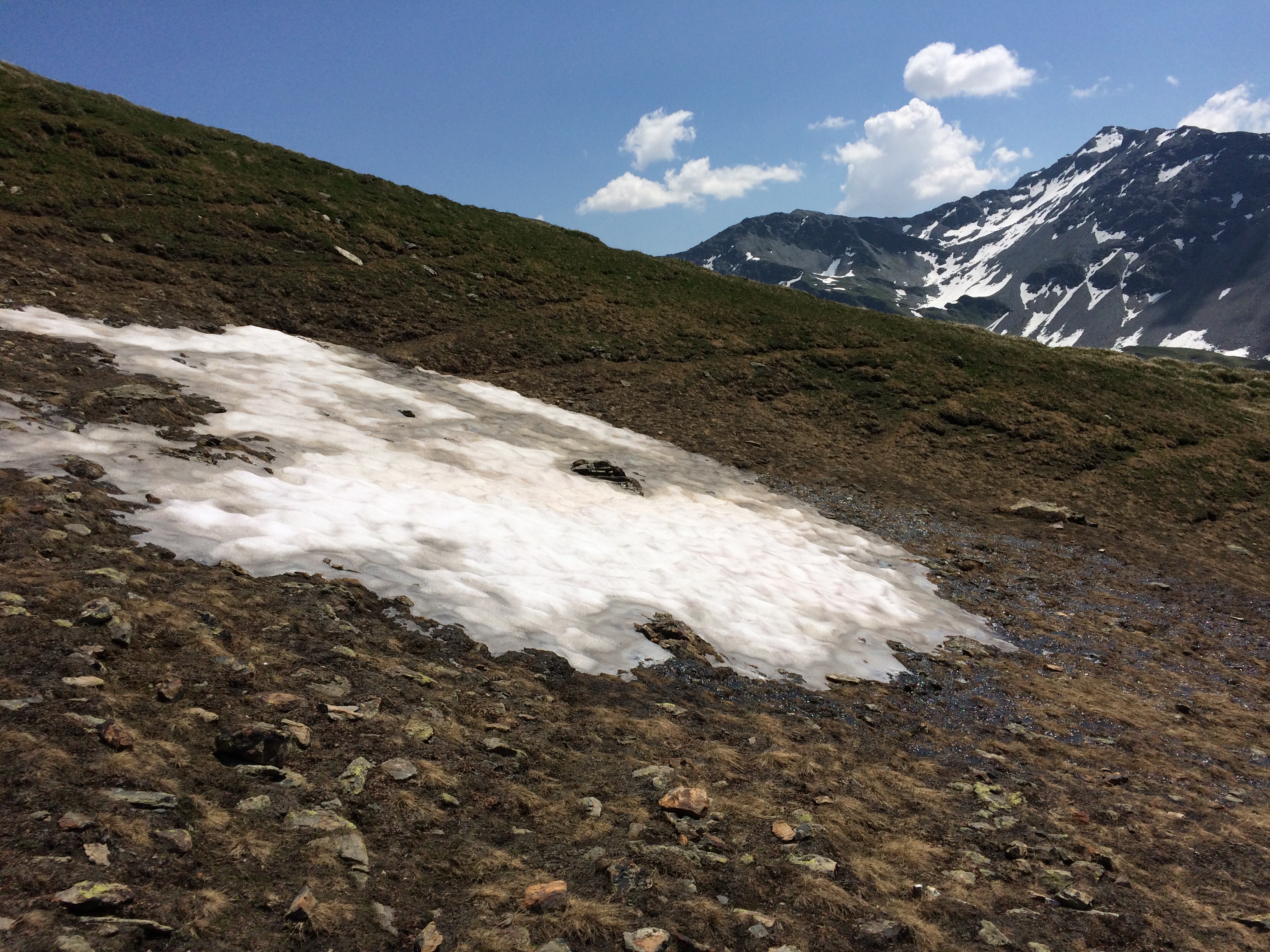
Fantastic locality for Cicindela gallica found above 2000m in the Alps. One of the tiger beetles collected in this trip to France along with C. hybrida, C. sylvicola and Calomera littoralis (Credit: Emmanuel Toussaint)
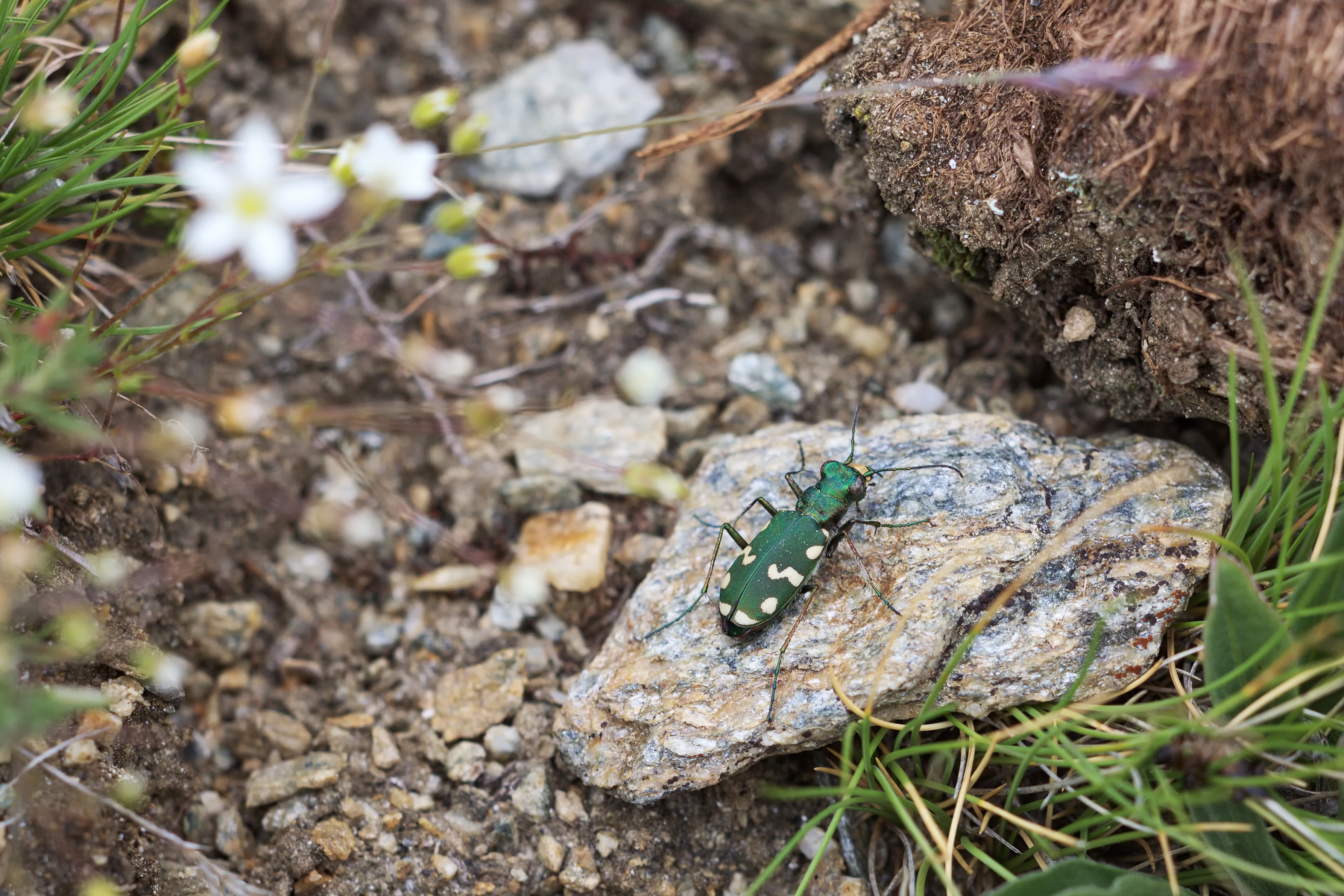
The alpine tiger beetle Cicindela gallica (Credit: Robin Holler)

A beautiful Colias (most likely C. phicomone) a few hundred meters higher (2500m) above the Col du Petit Saint-Bernard neat Italy. (Credit: Emmanuel Toussaint)
- 06/2017 – Our companion papers on the systematics and evolution of Hydrobiusini water beetles just came out in Systematic Entomology. Some very interesting findings about acoustic organs, dispersal-driven colonization of Gondwana and Hawaiian progression rule to check out in the Publications page!

The water beetle Hydrobius fuscipes (Hydrophilidae). (Credit: Udo Schmidt)
- 06/2017 – Our paper on very tiny microendemic weevils from New Caleodnia just came out in Royal Society Open Science. Some nice biogeographic patterns!

An Aussie Trigonopterus (Curculionidae). (Credit: Deb Yarrow)
- 02/2017 – Our paper on the intricate biogeography of giant water scavenger beetles just came out in Journal of Biogeography, check it out in Publications. These big guys are very cool indeed, they might be one of the few examples of West Gondwana vicariance with a joint origin in Africa and South America followed by tectonic allopatric divergence.
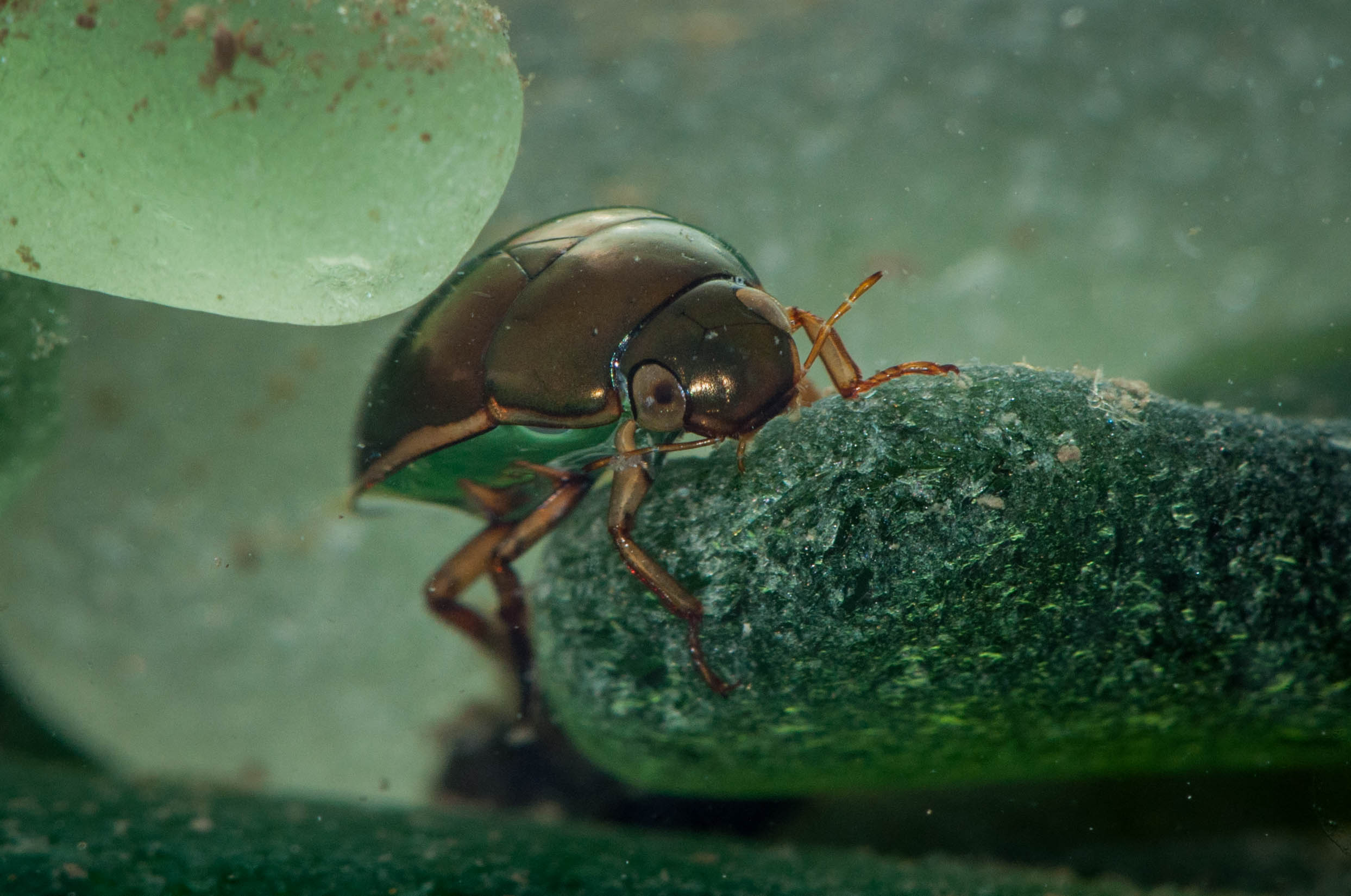
A nice picture of Tropisternus (Hydrophilidae). (Credit: Mark Yokoyama)
- 01/2017 – Very excited to be joining the Kawahara Lab this month and start a new project on large-scale phylogenomics of skippers within the ButterflyNet community. See you soon Shortlab!
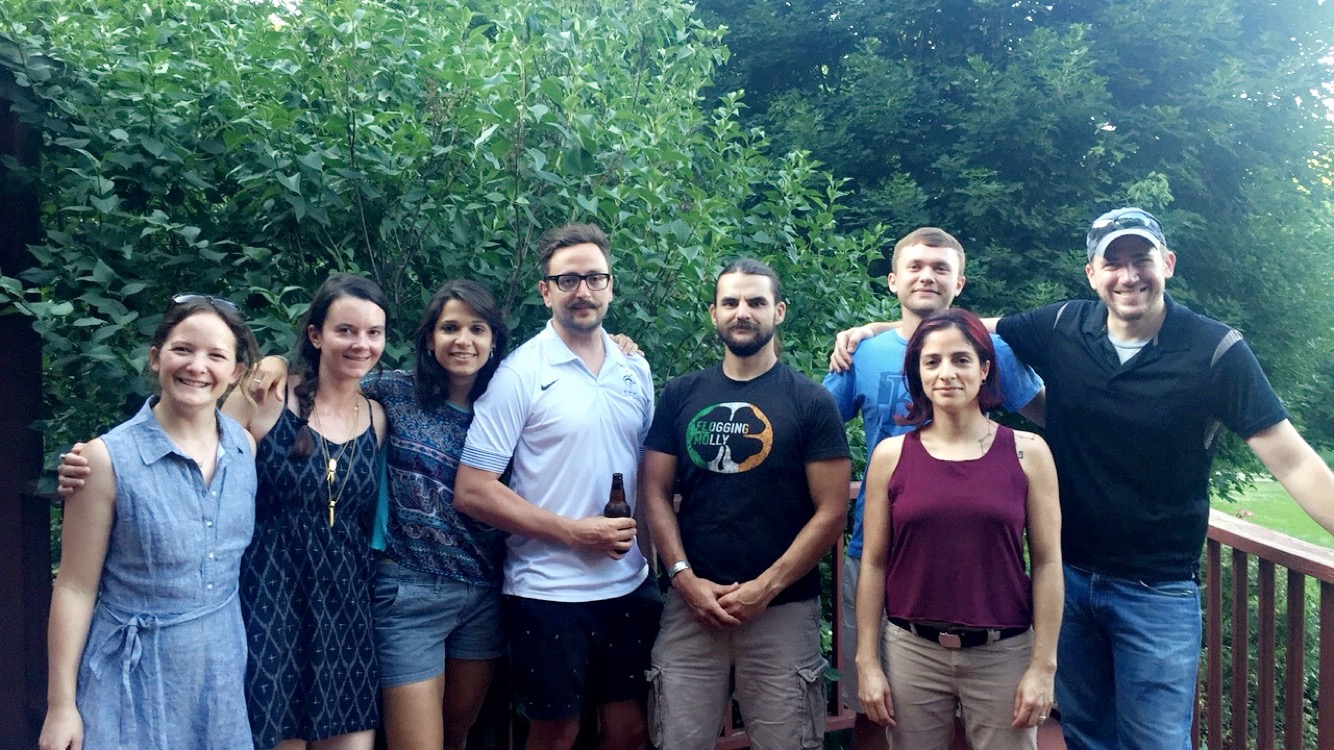
A nice picture of the Short Lab at the Short mansion. (Credit: Andrew Short)
- 10/2016 – Stephen’s paper on noterid water beetles is in press in Molecular Phylogenetics and Evolution. Pretty cool systematic study with a focus on the (confusing) performance of the recent k-means algorithm to partition molecular data.

Here is a picture of Hydrocanthus (Noteridae). (Credit: Udo Schmidt)
- 08/2016 – Our paper revisiting the dating of the beetle tree-of-life is out and open access. We find a much older origin for the crown of the group and most larger clades.
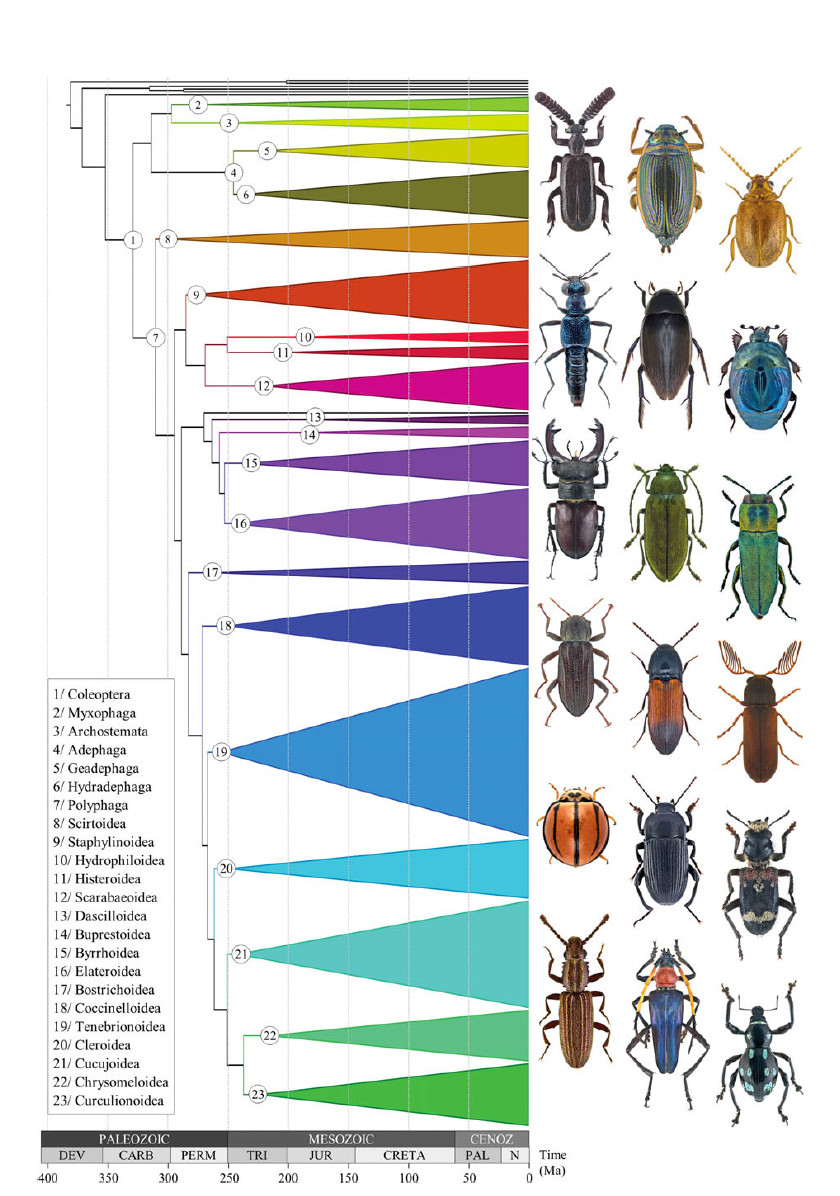
Evolution of the main beetle clades through geological time. (Photograph Credit: Udo Schmidt)
- 07/2016 – I am now on Twitter, check out my account @EmmanuelTouss1 for news on our research and sciency stuff. Thanks Andrew for the amazing Twitter advertisement:
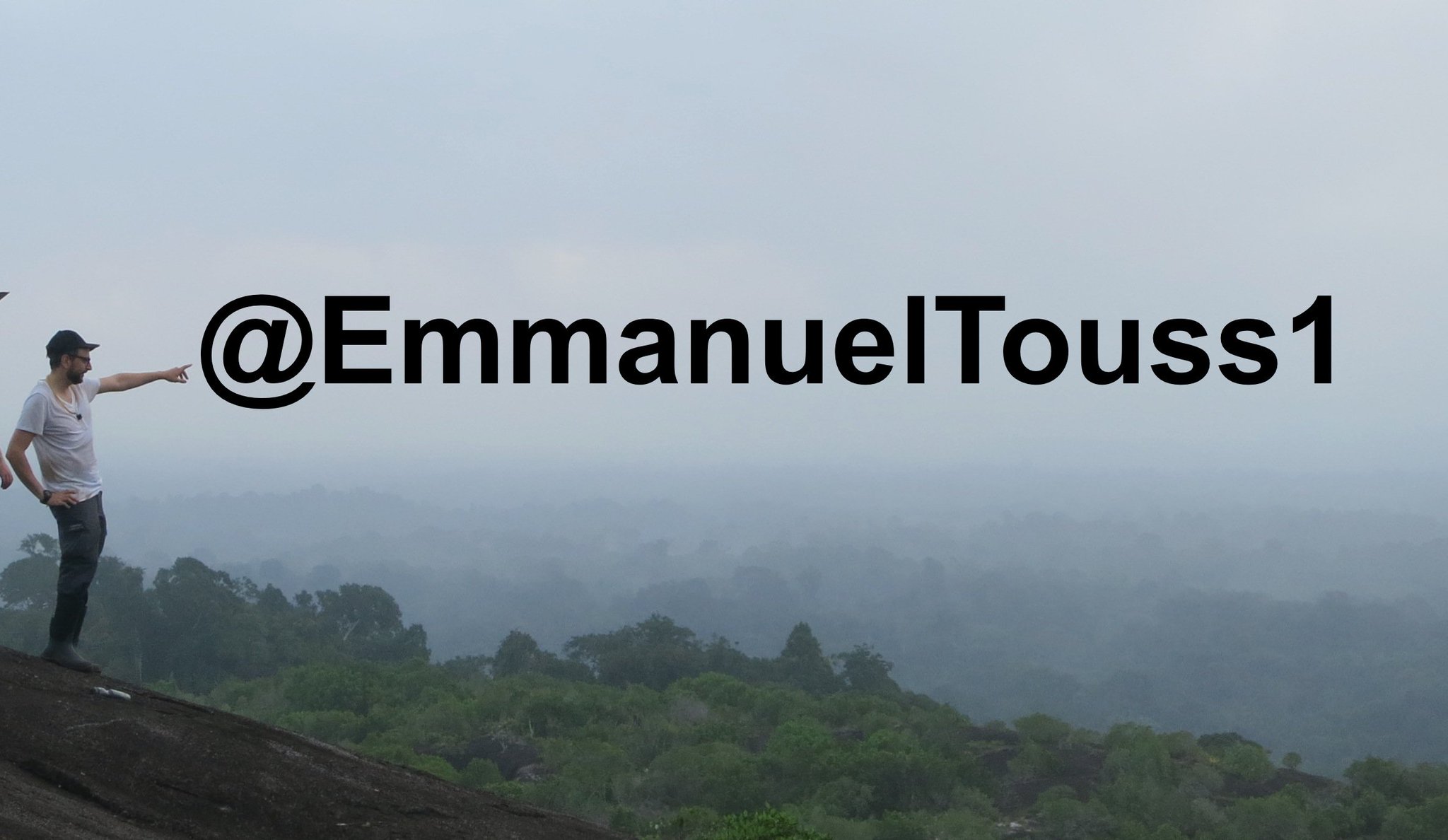
Pointing at my new Twitter account from the top of Voltzberg in Suriname (Credit: Andrew Short)
- 06/2016 – The fourth paper on Polyura just came out in Journal of the Lepidopterists’ Society. We are done revising this genus for the moment, Polyura attalus is back to species level and is officially the 34th species in the group.

Polyura attalus stat. rev. (Credit: Didier Descouens)
- 06/2016 – Jérôme’s master thesis paper finally came out, and it came out real nice. This new molecular phylogeny of Colymbetinae with macroevolutionary analyses has just been published in Scientific Reports.
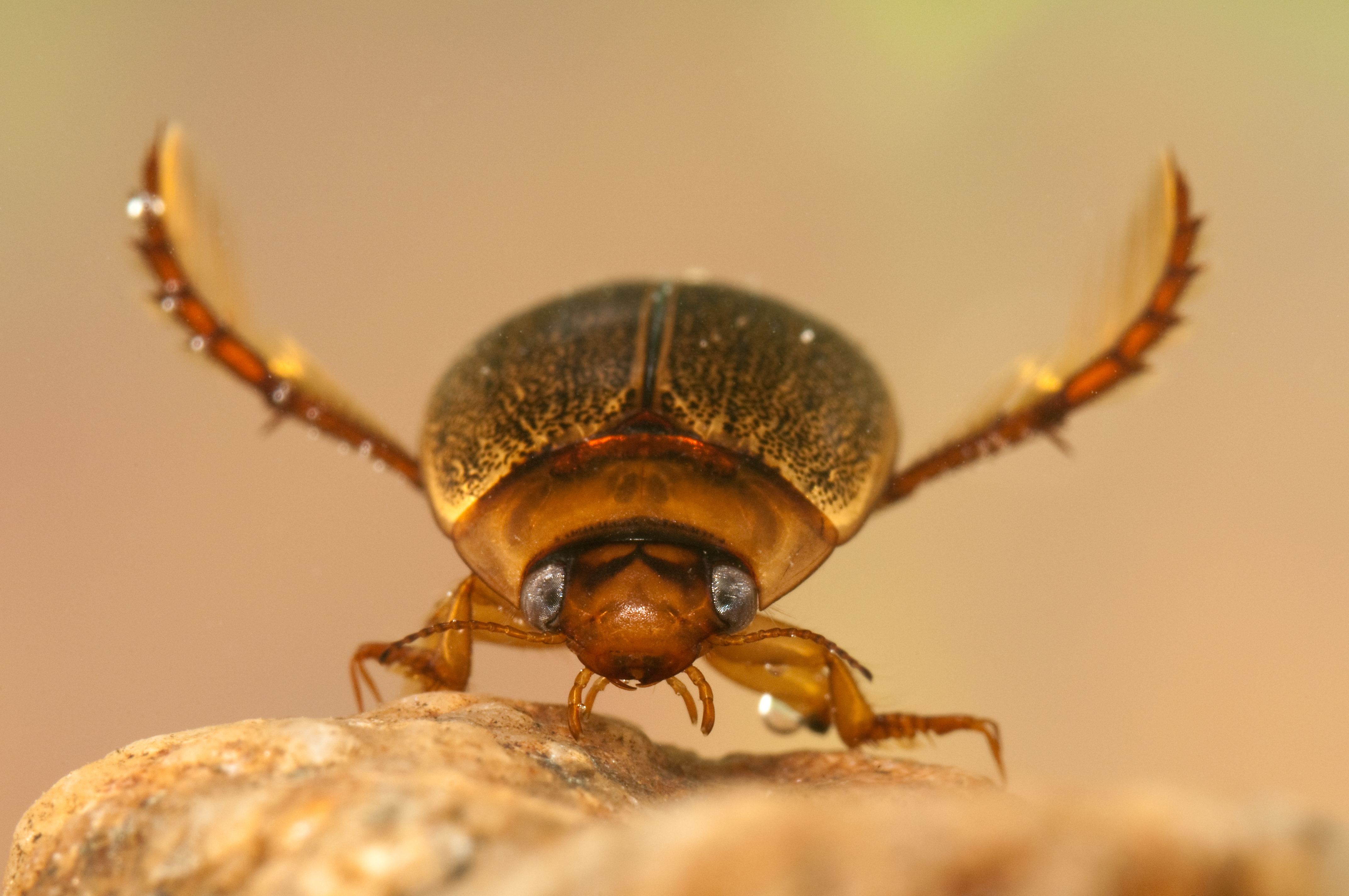
Here is a picture of Rhantus suturalis (Dytiscidae). (Credit: Jan Hamrsky)
- 04/2016 – April is a productive month, three of our papers on aquatic beetles and tropical butterflies just came out. Check these out on the Publications page.
- 03/2016 – We came back from our field trip in Suriname with lots of aquatic beetles. A very successful expedition that was entirely filmed by a KU student. The documentary and pictures should be available in the next few months. Great to be back in the jungle!
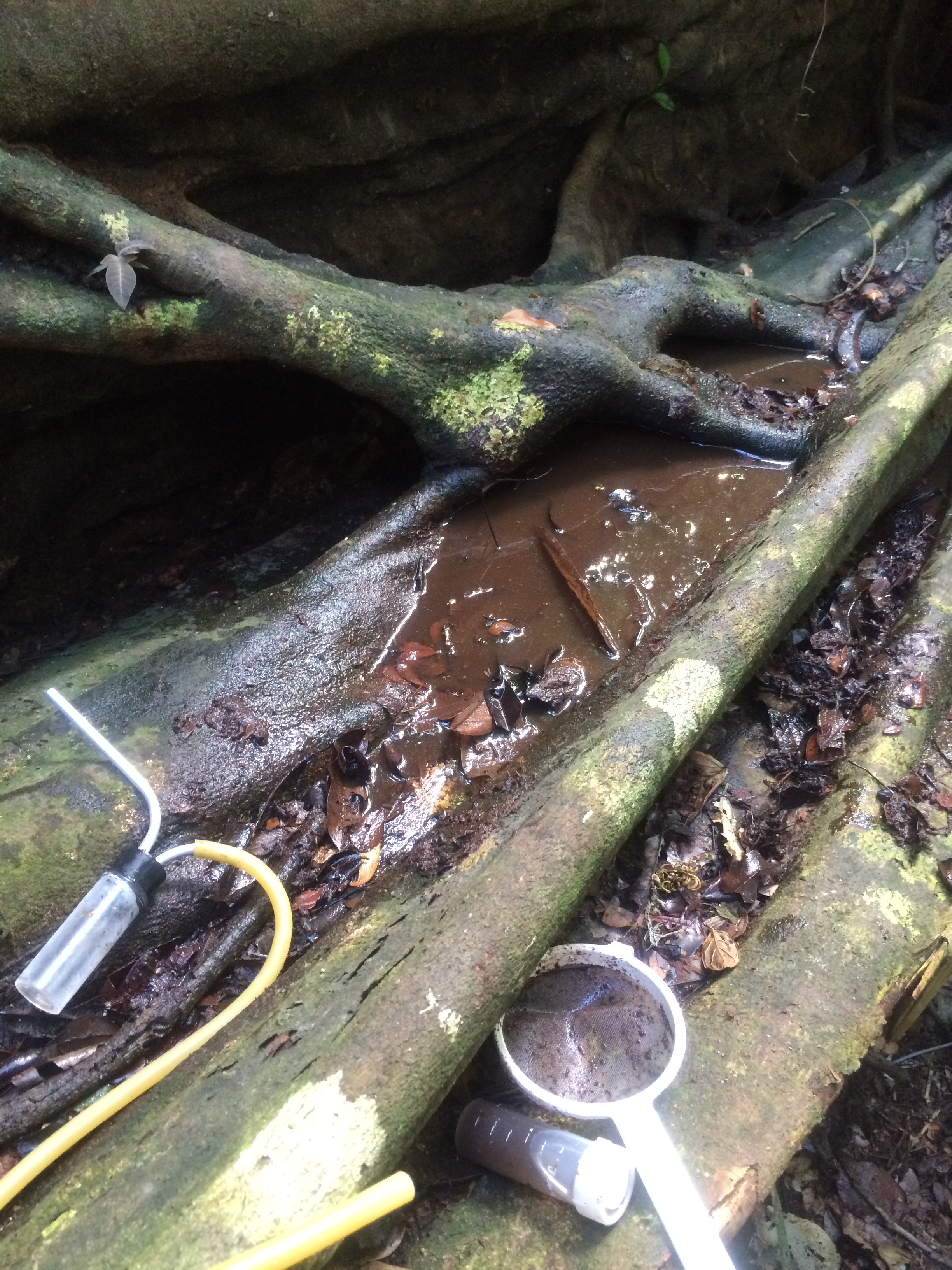
Collecting Platynectes (Dytiscidae) in a tree trunk puddle in the Surinamese jungle. (Credit: Emmanuel Toussaint)
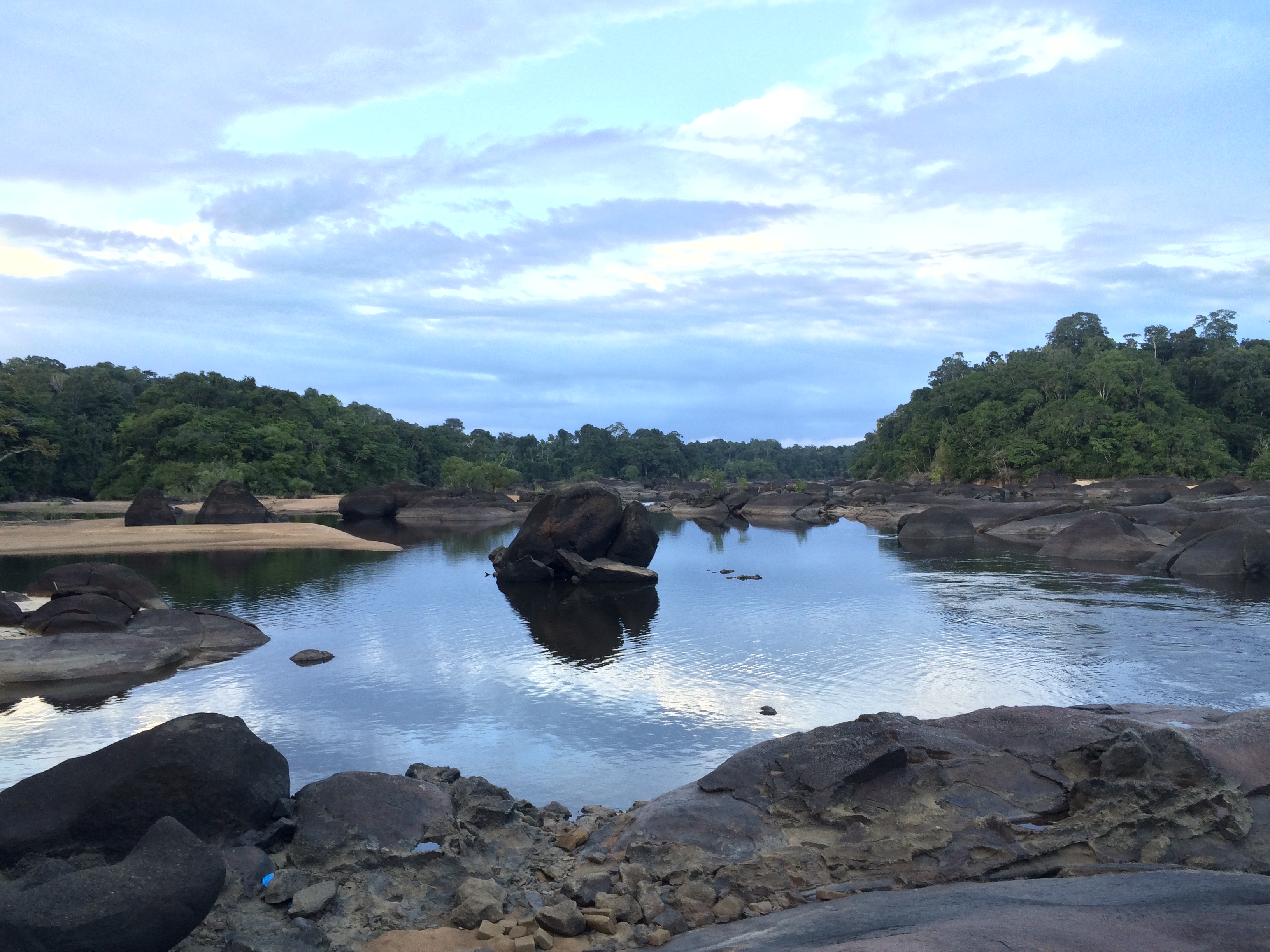
View from the camp in the Surinamese jungle. (Credit: Emmanuel Toussaint)
- 01/2016 – I went to Munich the 15th of January where I received the 17th Hintelmann award, a price for achievements in systematics and evolution. A fantastic honor made possible by the generosity of Frau Hintelmann.
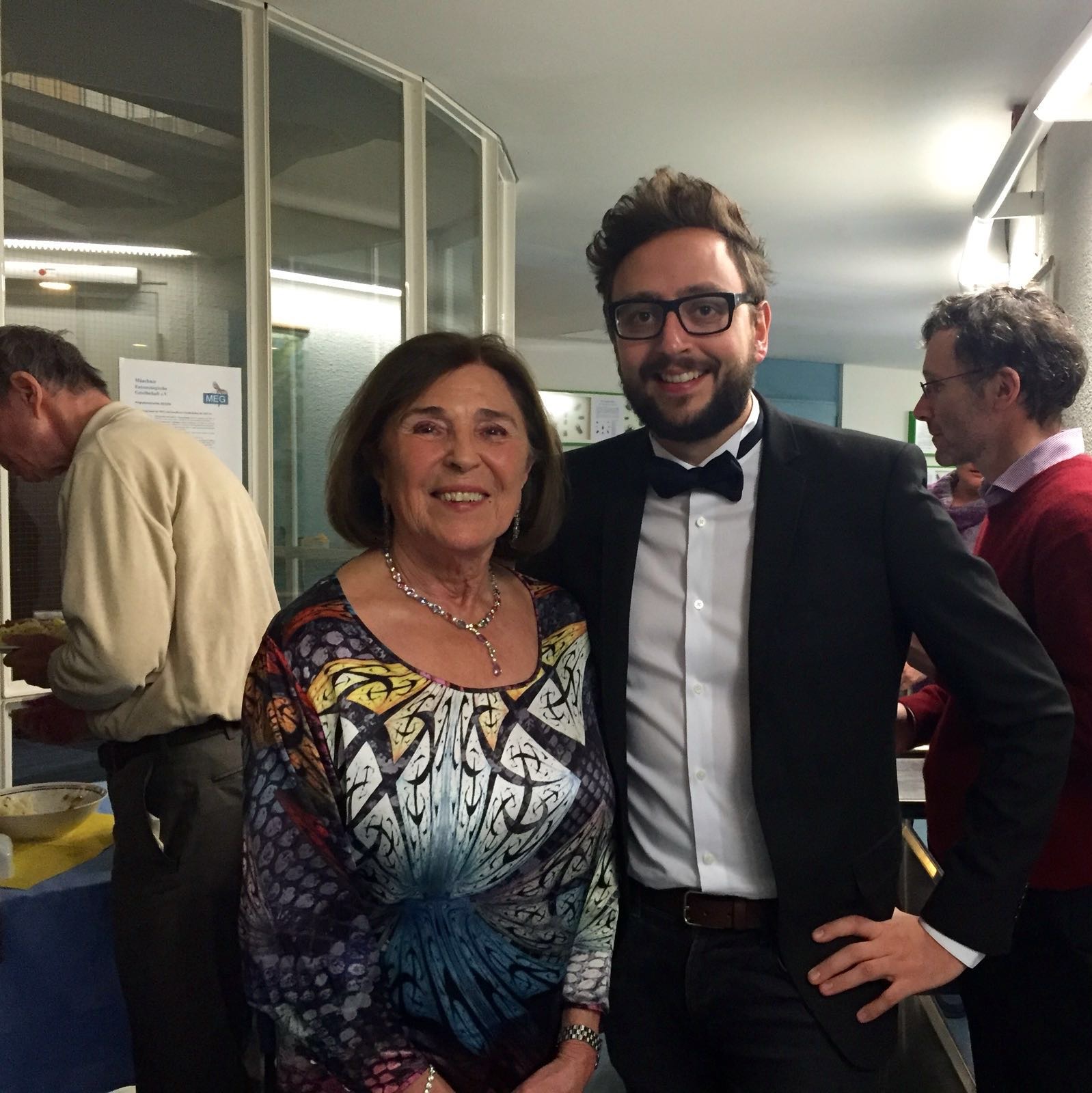
Honored to have received the Hintelmann award from the hands of Frau Hintelmann herself. A great contributor to Science here in Germany and for young scientists around the World. Thank you very much! (Credit: Emmanuel Toussaint)
- 05/2015 – A large media coverage (New York Times, BBC, Weekend Argus…) for our last paper on the amazing Capelatus pyrkei. This newly described beetle from South Africa is rather isolated as its closest relatives live in Europe and New Guinea:

A nice article from the New York Times on our study focusing on the newly described Capelatus pyrkei (Dytiscidae). (Photograph Credit: David Bilton / Article from the New York Times)

Local coverage of our study focusing on the newly described Capelatus pyrkei (Dytiscidae). (Photograph Credit: David Bilton / Article from the Weekend Argus)
- 12/2014 – We just learned that our latest paper on the evolution of diving beetles in Australia during the Cenozoic will be featured on the cover of the journal Systematic Biology:

The cover of the next Systematic Biology issue features diving beetles!
- 03/2014 – In our last paper we found that Trigonopterus beetles from Bali are surprisingly more related to their cousins from the East than to Javanese ones despite the geographic affinity of Bali and Java. This discovery has captured the attention of big journals in Germany (Die Welt, Der Spiegel…):

National coverage of our study on Trigonopterus weevils (Curculionidae) in the Spiegel.

National coverage of our study on Trigonopterus weevils (Curculionidae) in Die Welt.
- 01/2013 – Our paper on the temporal and geographic evolution of the emblematic peacock swallowtail butterflies has been picked to feature the cover of the journal Cladistics:

The cover of the next Cladistics issue feature Papilio (Achillides) butterflies



